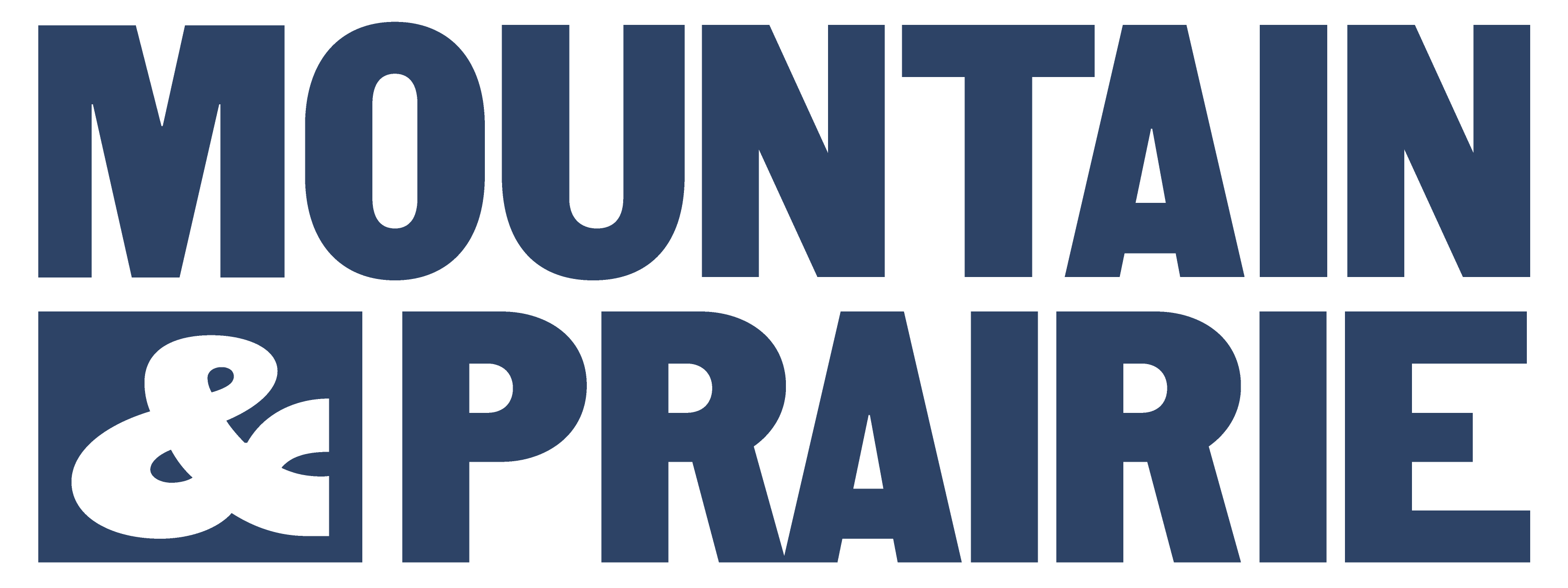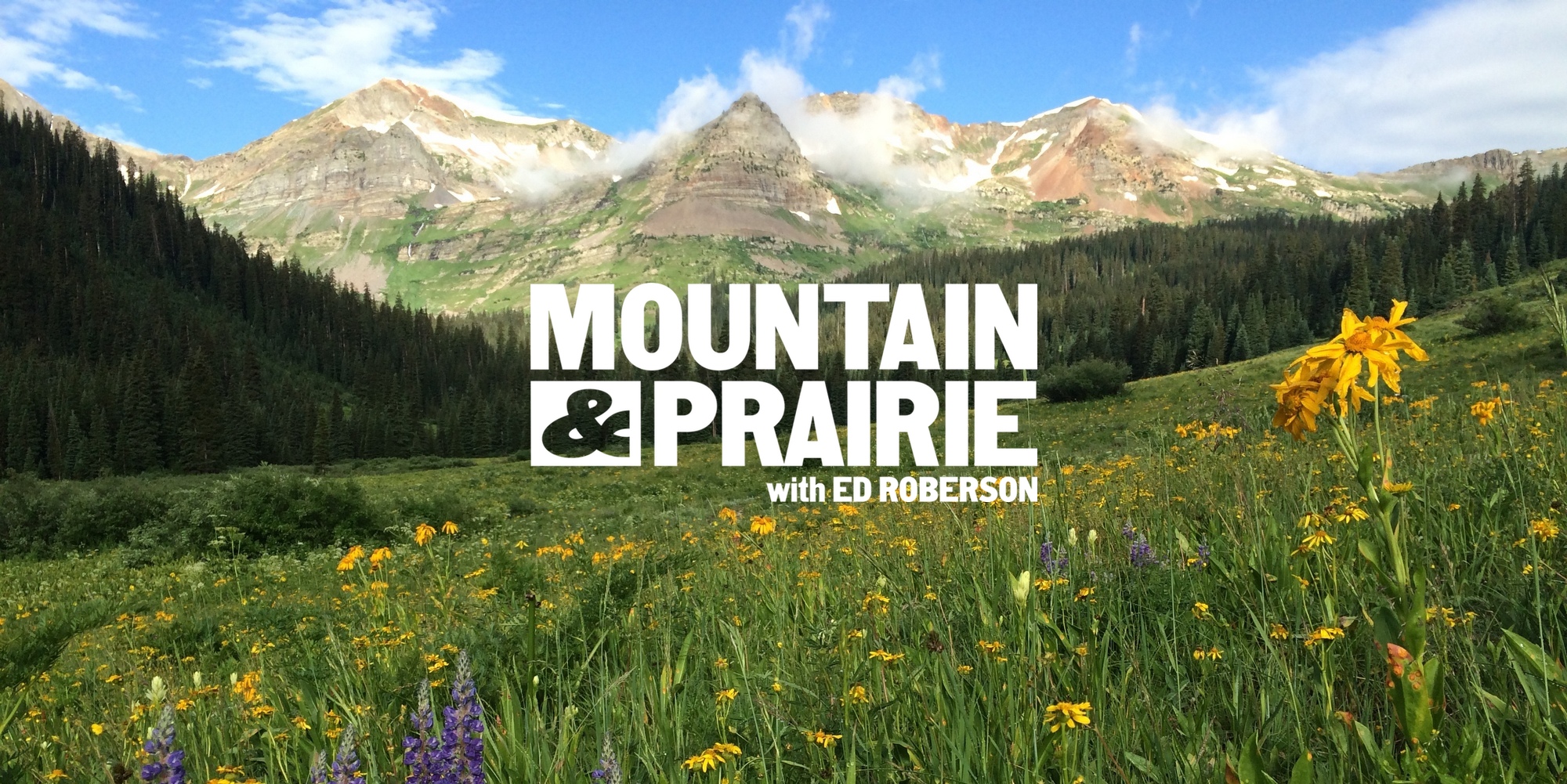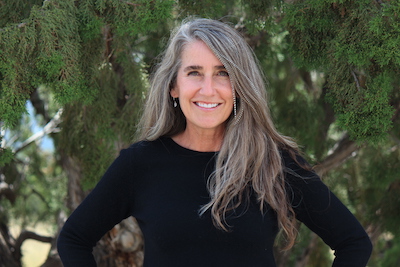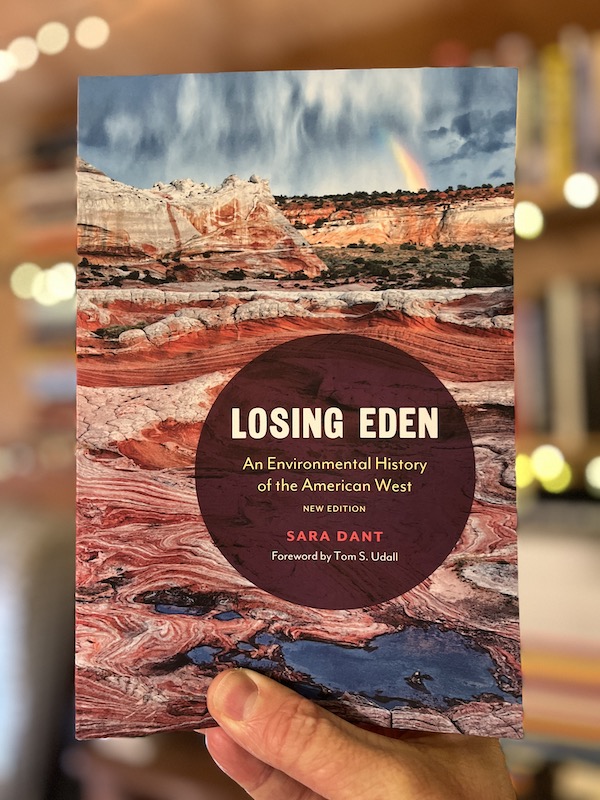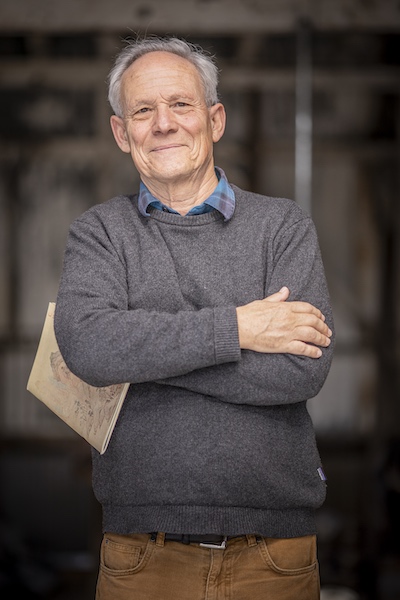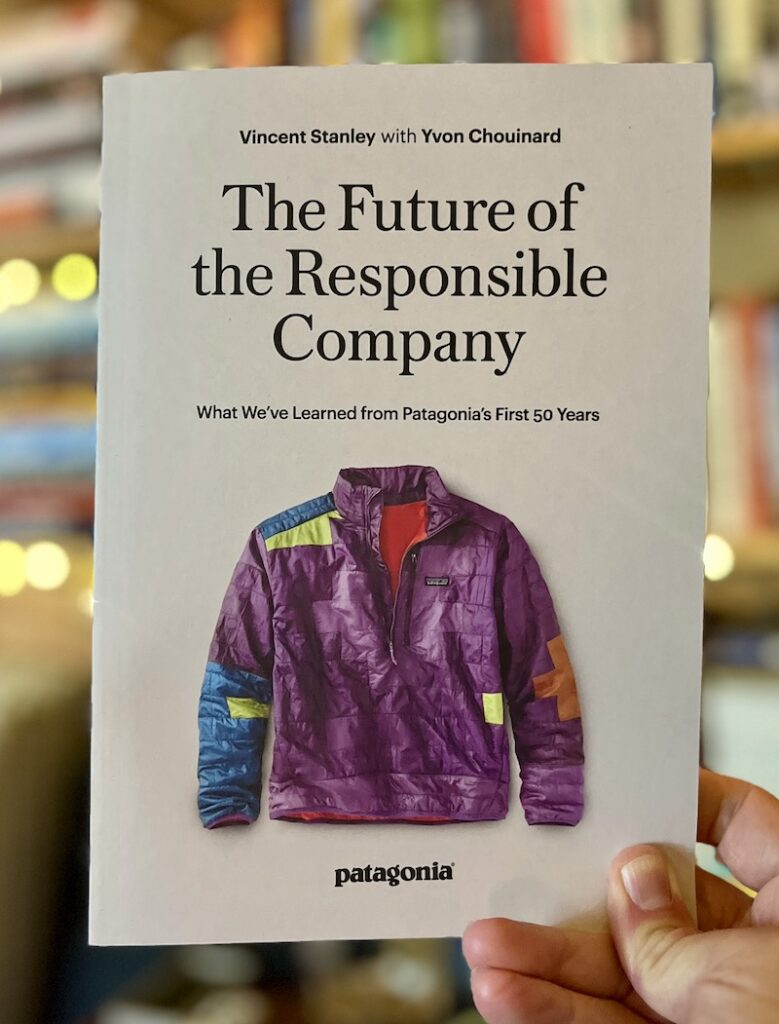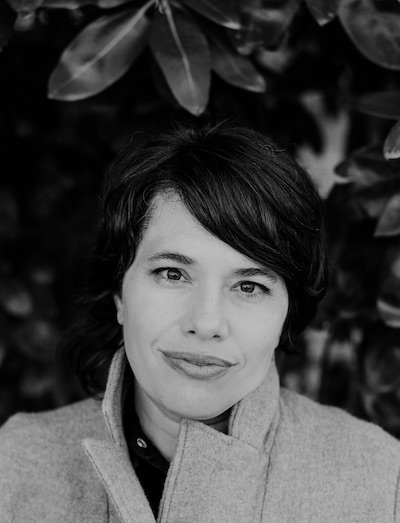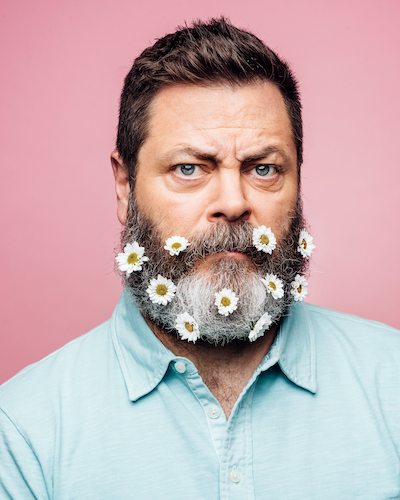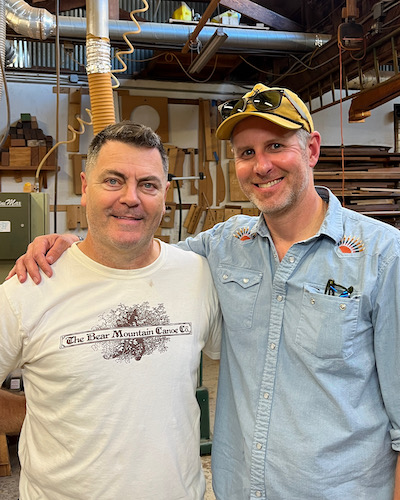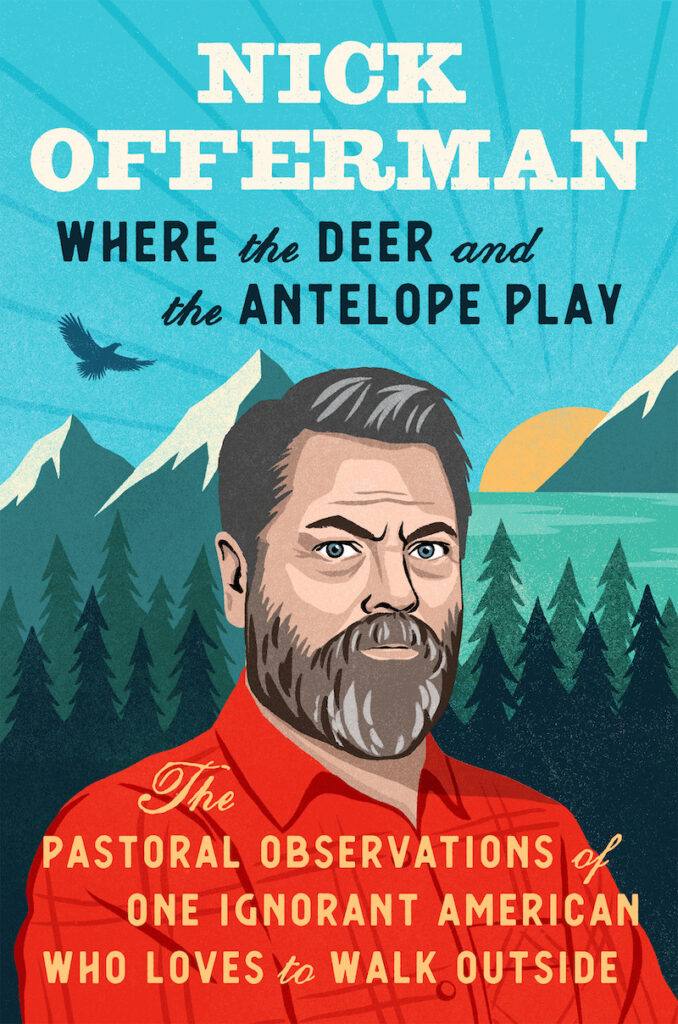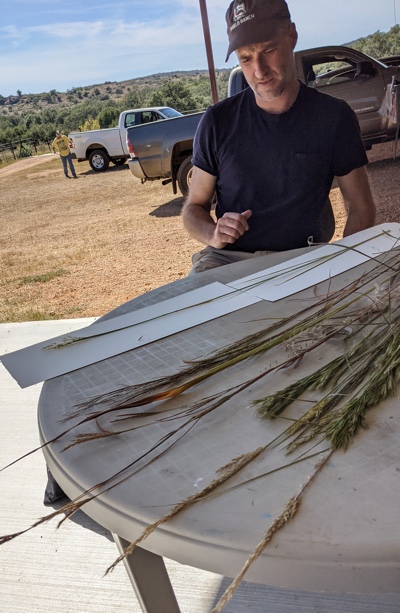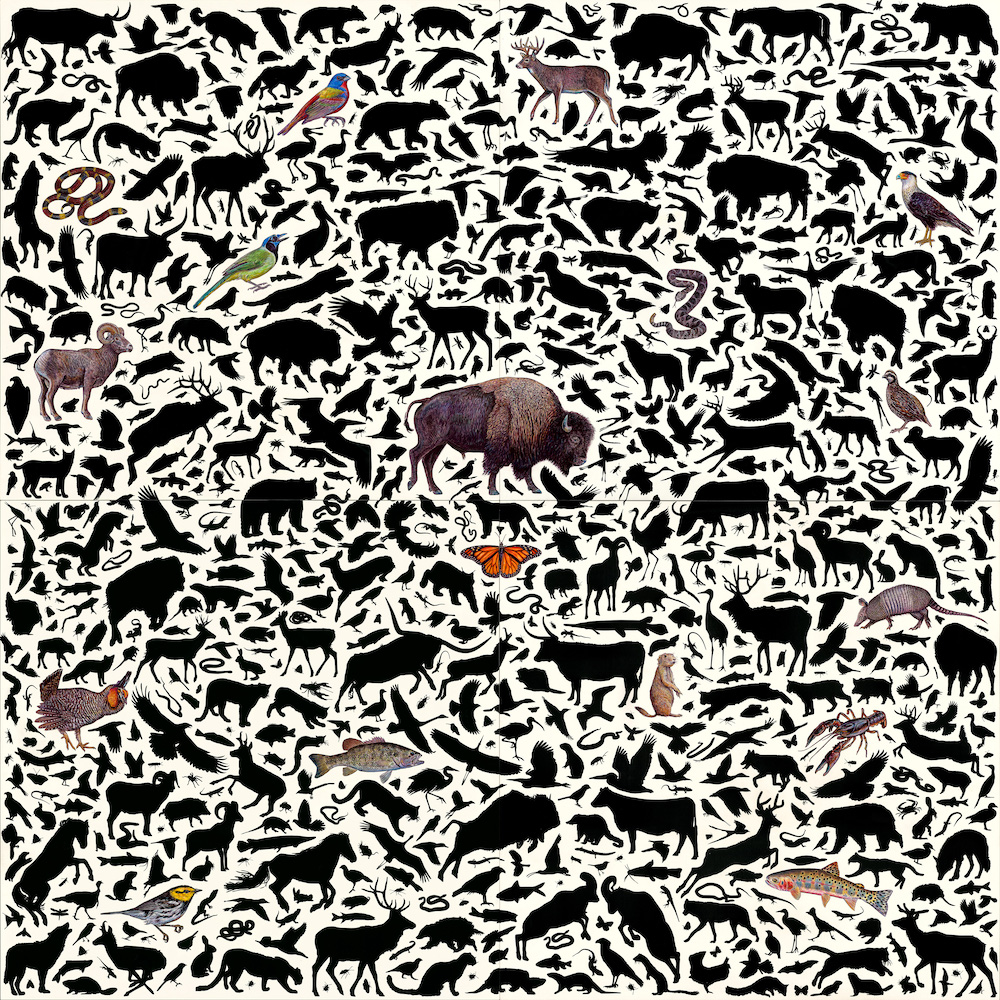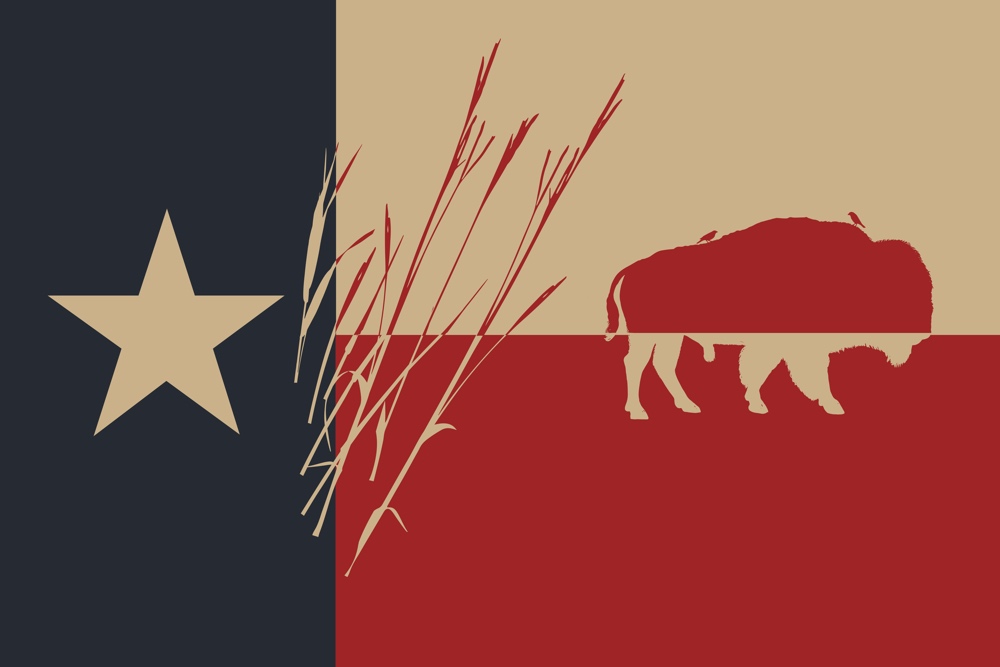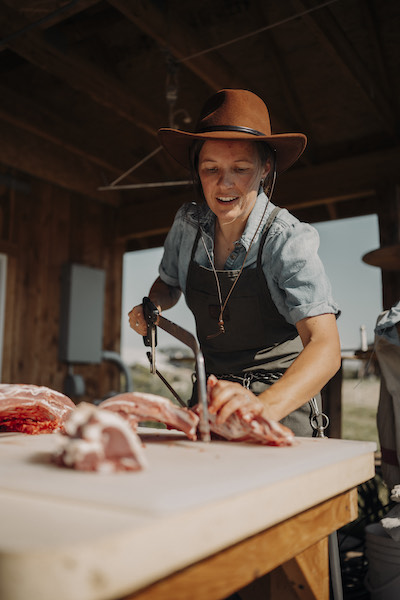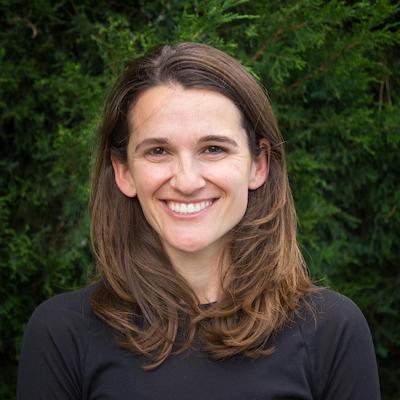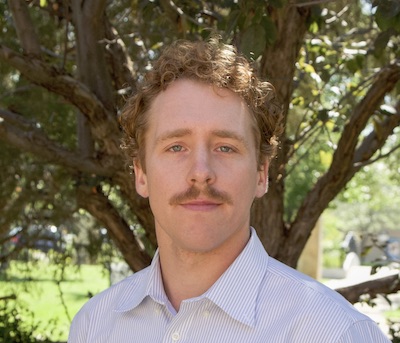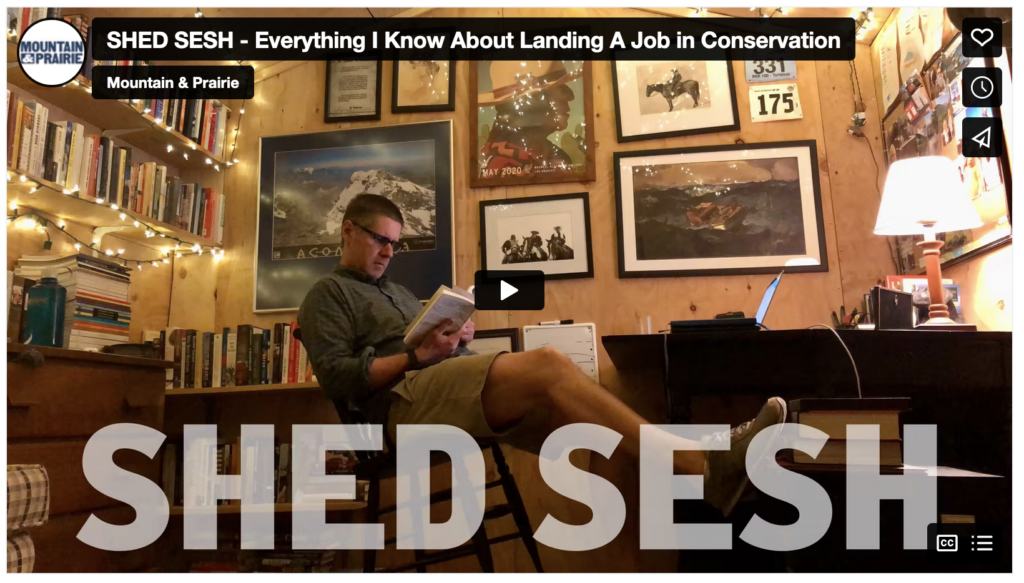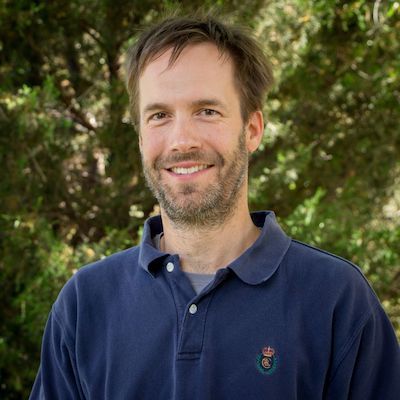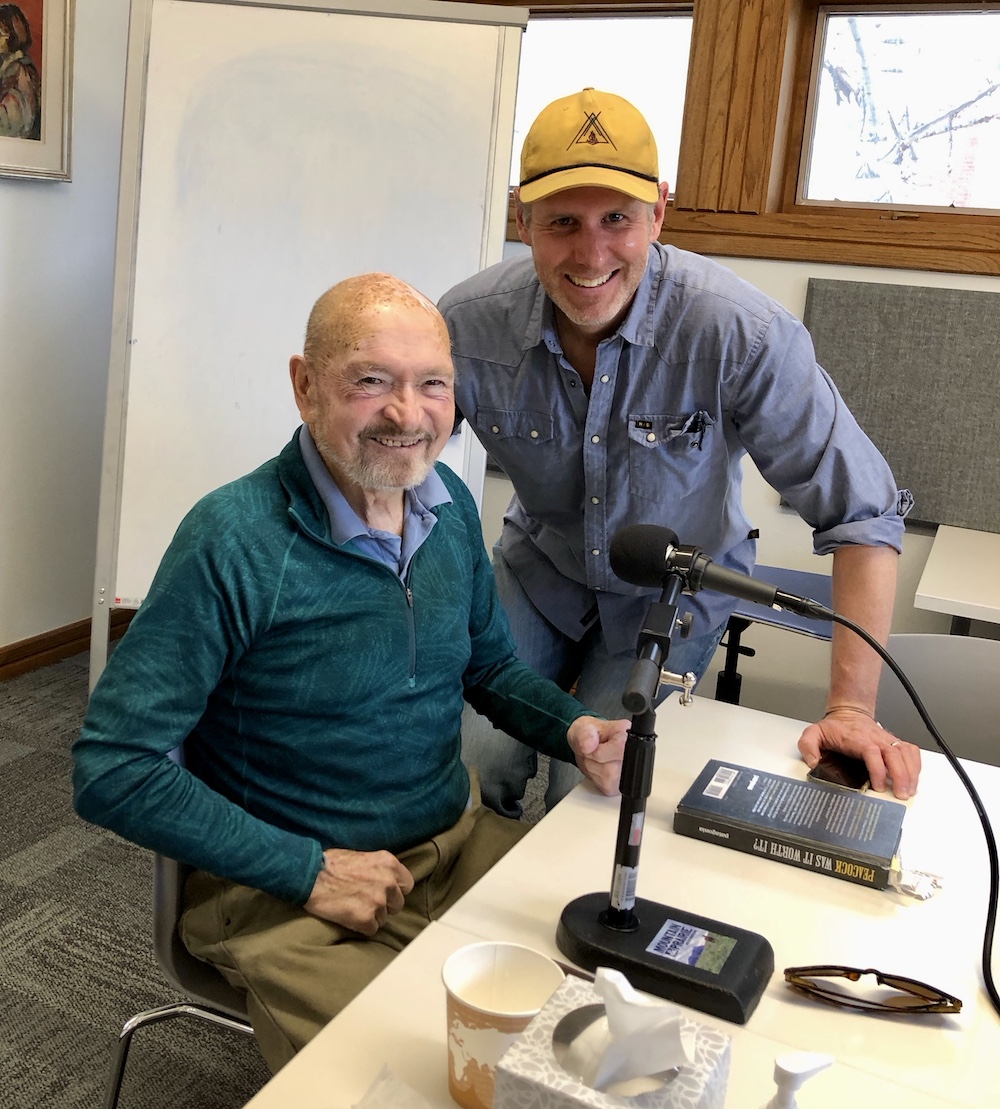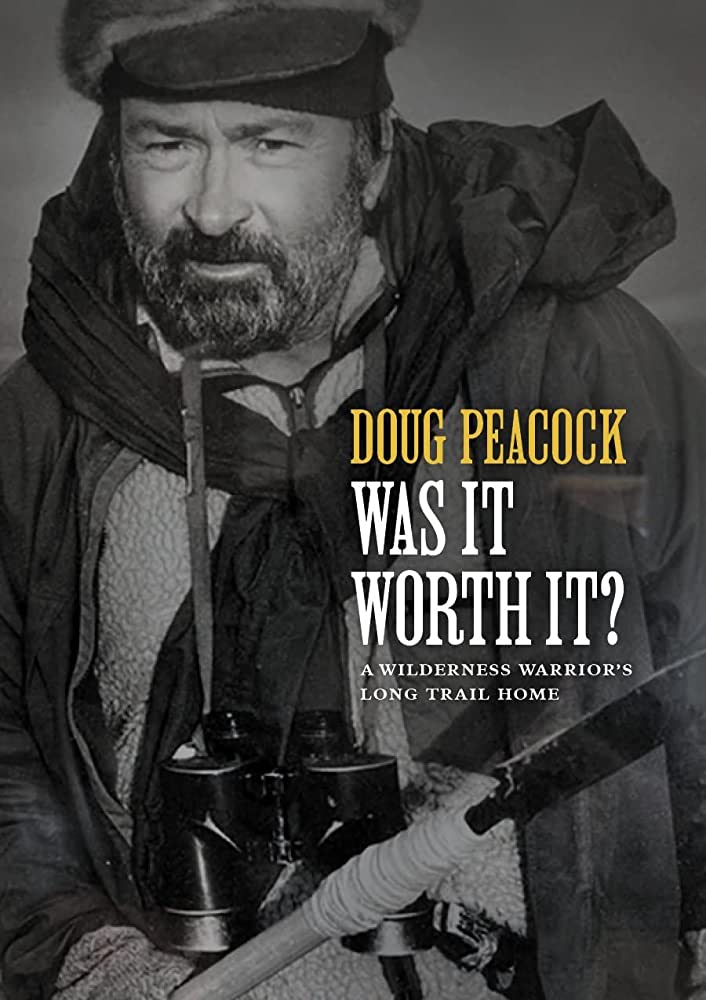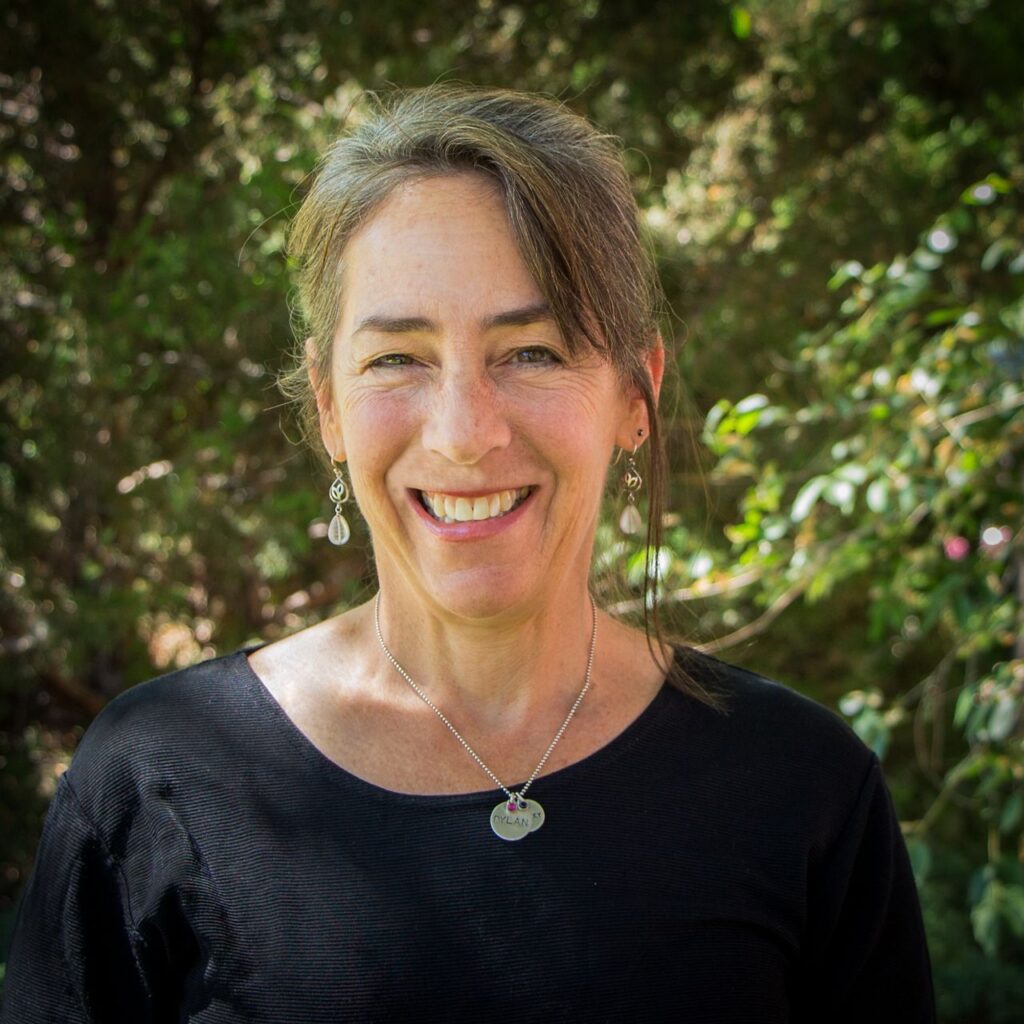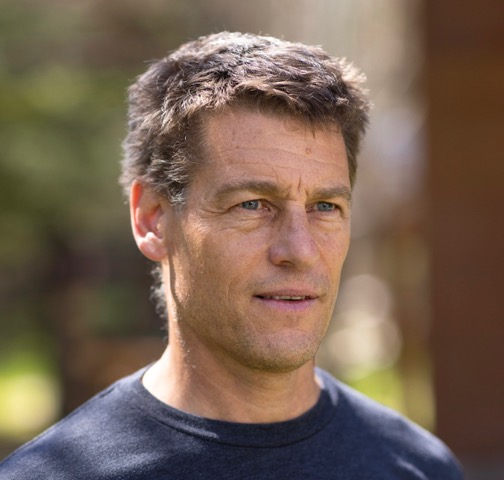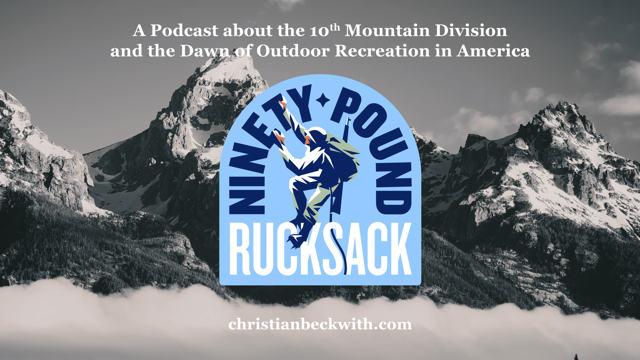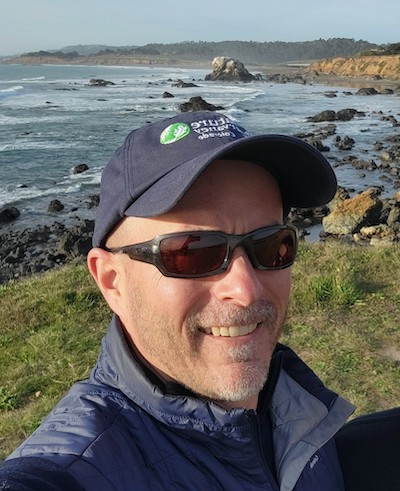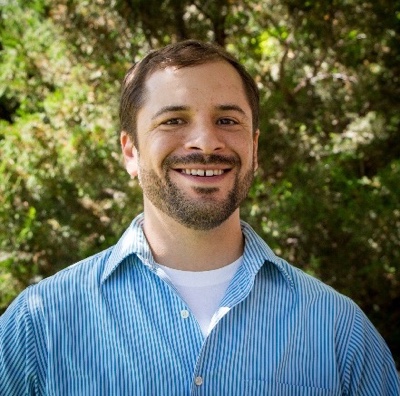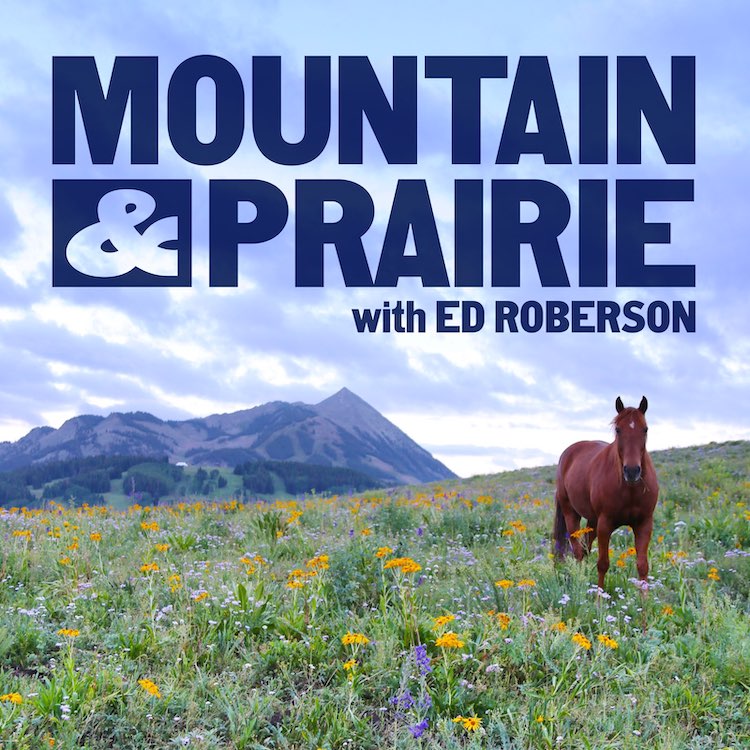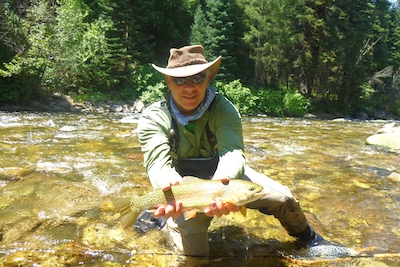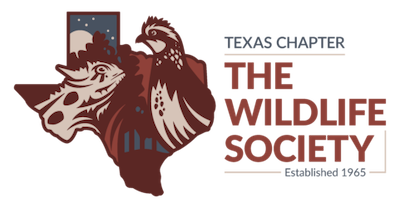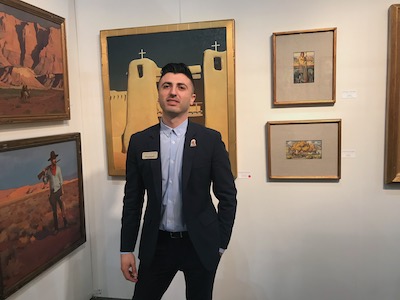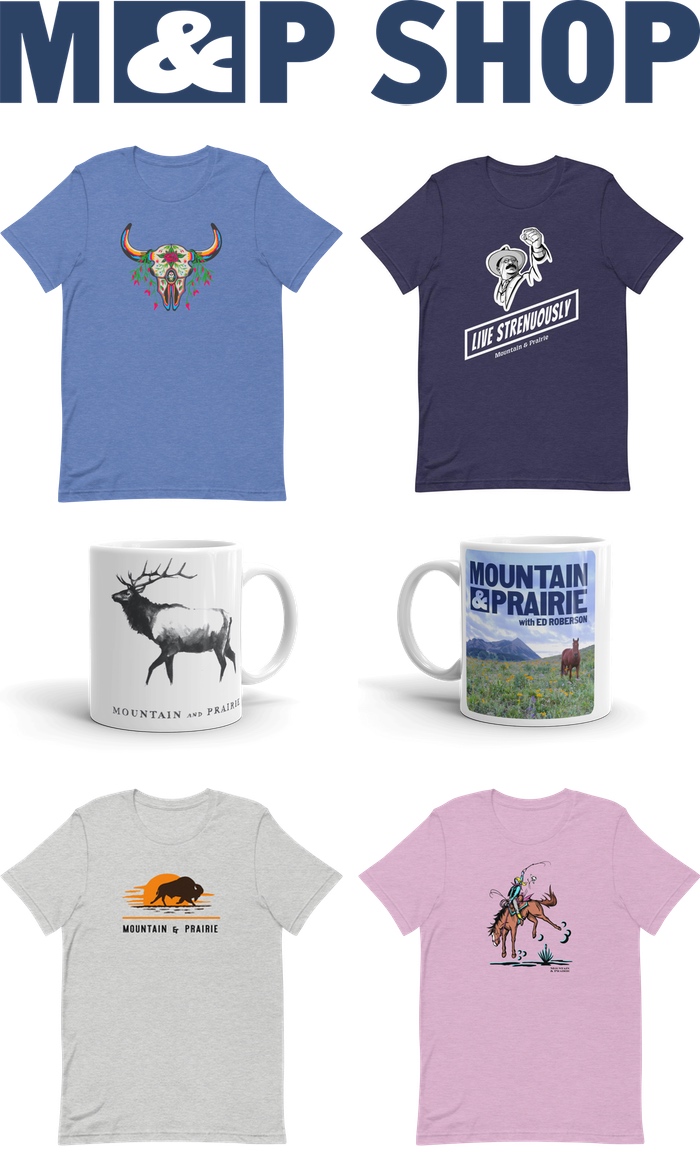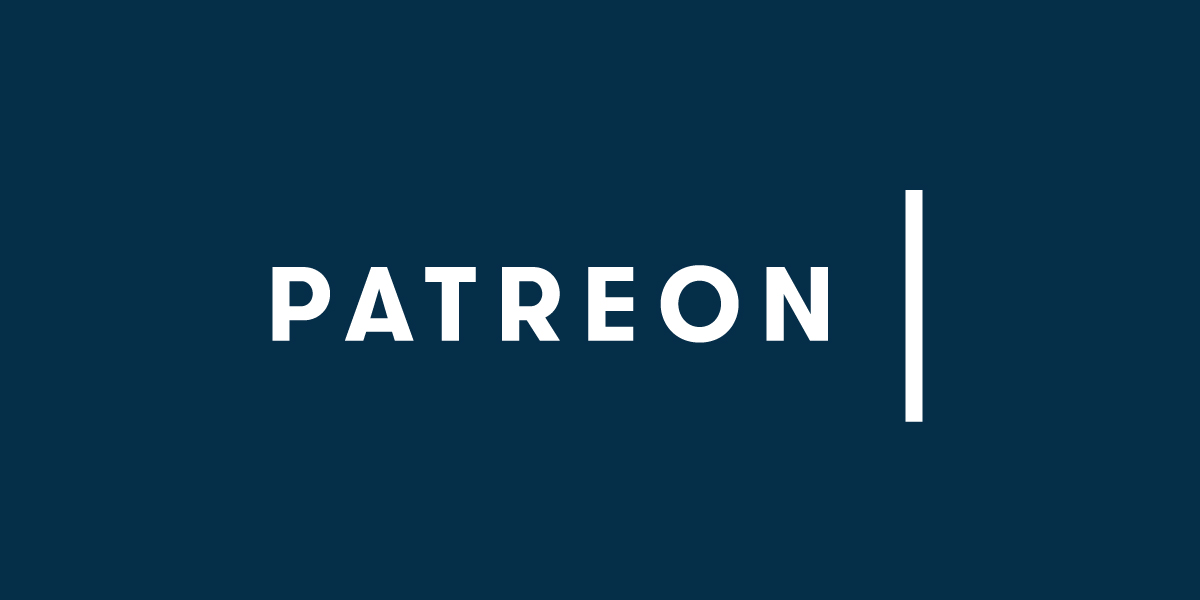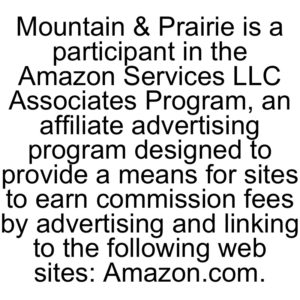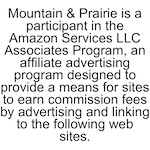Dr. Sara Dant Returns – “Losing Eden: An Environmental History of the American West”
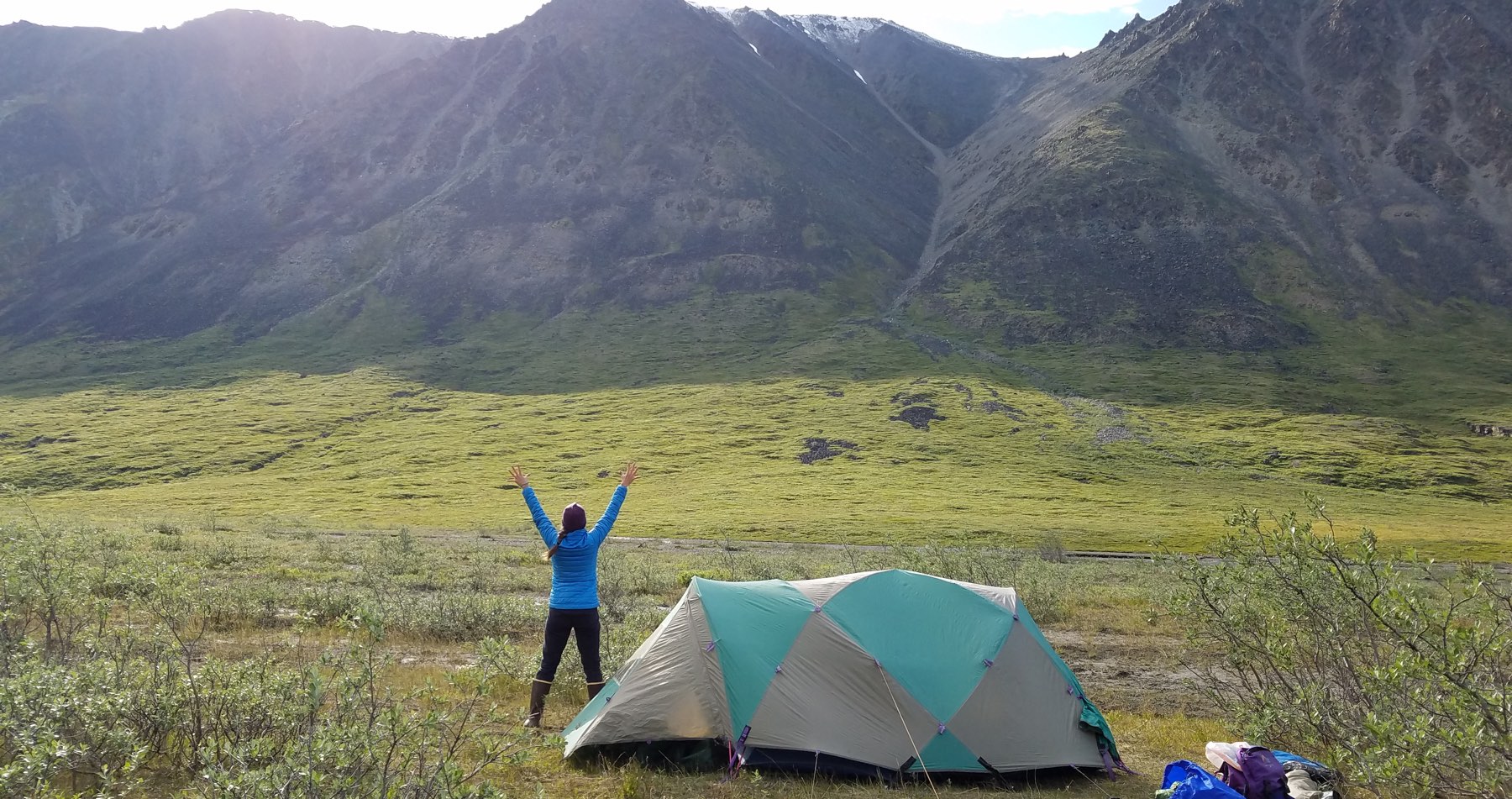
Dr. Sara Dant is a Brady Presidential Distinguished Professor of history at Weber State University, and she’s the author of one of my most-often recommended books, Losing Eden: An Environmental History of the American West. She is also one of the featured historians in Ken Burns’ newest documentary, The American Buffalo, which you can watch for free on the PBS website. Sara’s work focuses on environmental politics in the United States with a particular emphasis on the creation and development of consensus and bipartisanism, and she is especially skilled at presenting complex, sometimes controversial topics in an engaging and fun-to-learn manner.
In June of 2023, Sara updated and republished her book Losing Eden– she added some chapters, revised some of the content, and added lots of maps, photos, and additional resources. She somehow managed to make one of my favorite books even better. For anyone who is looking for a thorough yet fun-to-read overview of this complex region known as the American West, I can’t recommend it enough. From the migration of the first humans into North America to modern-day controversies around energy development, the book provides a solid foundation and acts as a launching point to dig into whatever specific time period you may find interesting.
Longtime listeners will remember my first conversation with Sara back in 2018, in which we discussed the early phases of North American environmental history, the tragedy of the commons, conservation vs preservation, and more. In this conversation, we focus on mostly recent environmental history, including the historic environmental legislation of the 1960s and 70s, legendary senator Frank Church, and the backlash to environmental regulation that led to movements such as the Sagebrush Rebellion. We also discuss Sara’s perspective-shifting Alaska adventure, the value of wild places, her experience working with Ken Burns, book recommendations, and much, much more.
I always enjoy my visits with Sara, and I can’t thank her enough for how generous she is with sharing her time, wisdom, and expertise. I’d encourage you to pick up a copy of the new Losing Eden, but in the meantime, enjoy this conversation with Dr. Sara Dant.
Photos courtesy of Sara Dant.
LISTEN & DOWNLOAD:
Apple Podcasts
Spotify
Google Podcasts
… or wherever you get your podcasts!
—
RESOURCES:
Topics Discussed:
- 3:30 – Why Sara decided to republish Losing Eden
- 7:00 – The guiding idea of “At what cost?”
- 10:00 – The myth of “right or wrong,” “good or bad”
- 16:15 – Using history to understand our current political situation
- 19:30 – Optimistic examples of positive political environmental bipartisanship
- 23:30 – The legendary Idaho senator, Frank Church
- 28:00 – James Watt and the backlash to environmental regulation
- 34:00 – Divisiveness as a power-grabbing tool
- 43:00 – Sara’s 2019 life-changing trip to Alaska
- 46:30 – What is the value of wild places?
- 54:15 – Participating in the new Ken Burns documentary
- 56:30 – Something new that Sara has recently learned
- 1:02:30 – Book recommendations and further reading
- 1:10:30 – Parting words of wisdom
Information Referenced:
- Dr. Sara Dant
- Losing Eden: An Environmental History of the American West
- Sara’s first M&P episode
- Weber State University
- Spotted Owl controversy
- Frank Chuch
- Sierra Club
- Grangeville, Idaho
- Gospel Hump Wilderness
- The Wilderness Act
- Endangered Species Act
- Great Salt Lake dry-up threat
- College of Eastern Utah
- Fighting the Odds: The Life of Senator Frank Church by LeRoy Ashby and Rod Gramer
- Wild and Scenic Rivers
- James Watt
- James Watt obituary
- Ronald Reagan
- Sagebrush Rebellion
- Bears Ears National Monument
- Arctic National Wildlife Refuge
- Hula Hula River
- William Cronon’s The Trouble with Wilderness
- Aldo Leopold
- Mo Udall
- Stewart Udall
- Frank Church – River of No Return Wilderness
- Hells Canyon
- Echo Park
- Doug Peacock
- The American Buffalo by Ken Burns
- Wild New World by Dan Flores
- Invisible Reality: Storytellers, Storytakers, and the Supernatural World of the Blackfeet by Rosalyn R. LaPier
- Silent Spring by Rachel Carson
- Silent Spring Revolution by Douglas Brinkley
- Overshootday.org
Enjoy this episode? Then you might like these too:
- Douglas Brinkley – Exploring the Past to Find Inspiration for the Future
- Lorelei Cloud – Solving Modern-Day Challenges with Ancient Tribal Wisdom
- Rebecca Clarren – “The Cost of Free Land”
- Corissa Busse – Tribal-Led Buffalo Restoration in the American West and Beyond
- David Gessner Returns – “A Traveler’s Guide to the End of the World”
- Doug Peacock – 50 Years of Fighting for the Grizzlies
- Taylor Hawes – Innovative Conservation in the Colorado River Basin
Visit the podcast page for a full, searchable list of episodes
Corissa Busse – Tribal-Led Buffalo Restoration in the American West and Beyond
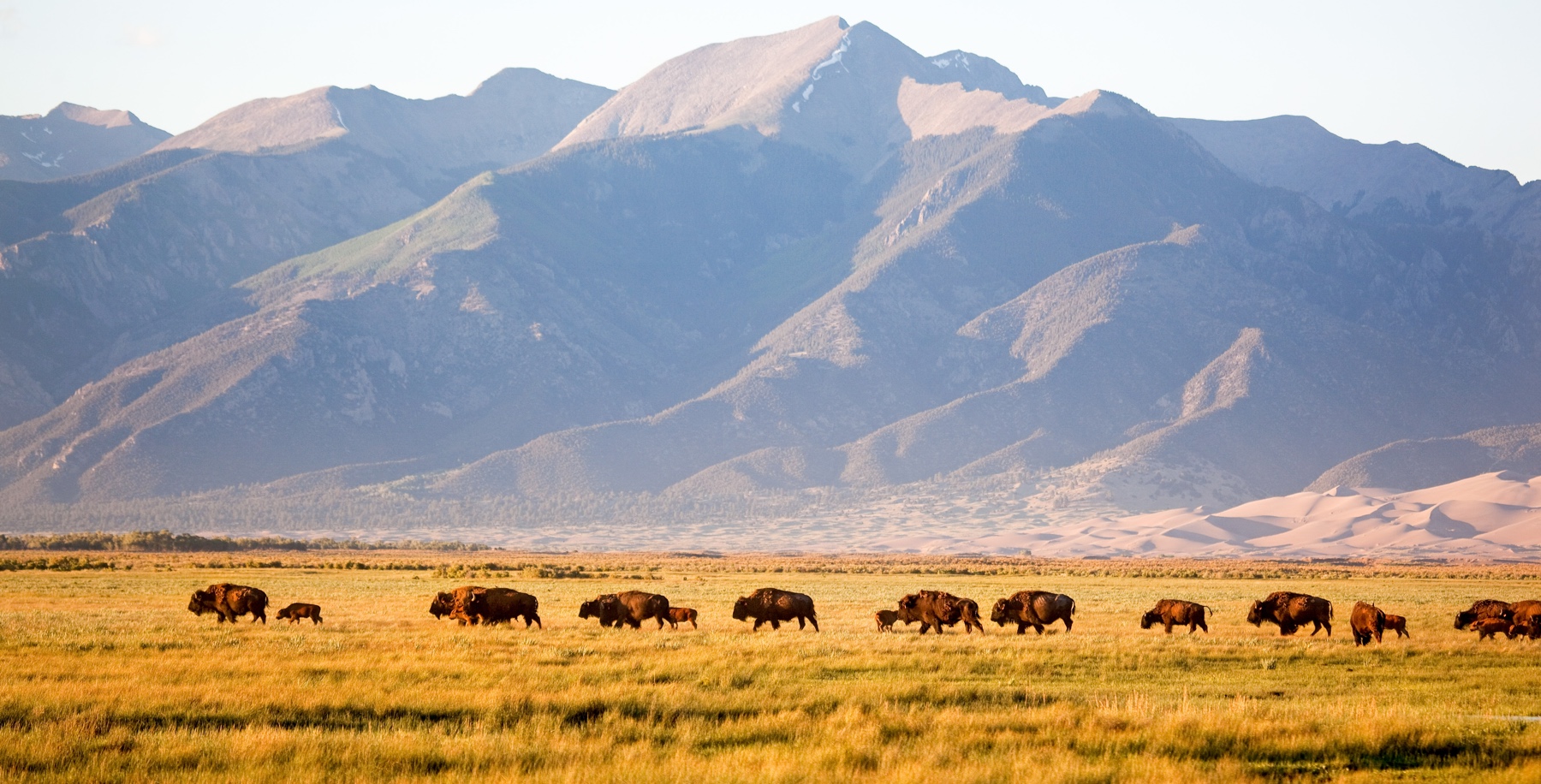
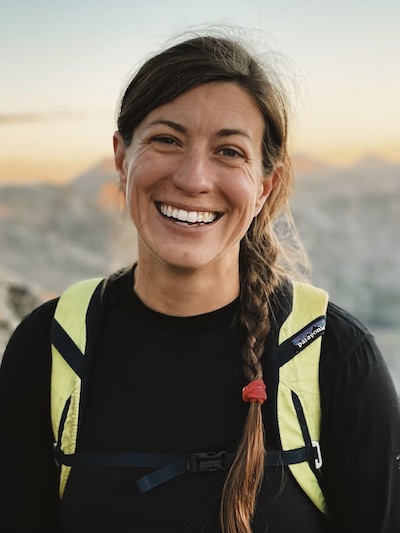
Corissa Busse is the Buffalo Restoration Program Manager for The Nature Conservancy, where she oversees TNC’s work to advance Tribal-led efforts to restore buffalo, grasslands, and communities at scale. Based in Rapid City, South Dakota, Corissa and her team at TNC partner with organizations including the InterTribal Buffalo Council and the Tanka Fund to bring buffalo back to tribal lands, which not only contributes to healthier, more resilient landscapes, but helps to heal and restore a web of natural relationships that has been broken for hundreds of years.
TNC has been working with buffalo for many decades now, and it owns herds at numerous TNC preserves across the United States. Each year, those herds produce approximately 1,500 buffalo that are in need of new homes, so TNC has begun working with Tribal nations to transfer these buffalo from the TNC preserves onto Native lands. But transferring the animals from one place to another is relatively simple– it’s the trust-building, infrastructure development, and long-term, collaborative vision that requires strong relationships and outside-the-box thinking. As you’ll hear in this conversation, it’s a complex and important project with amazing potential.
I’ve always loved learning about buffalo, and given the recent release of Ken Burns’ newest documentary on this very subject, I was extra excited to chat with Corissa. We started out with the most basic question of all– “Should we call them bison or buffalo?”– and then moved into the more complex topics. We discussed when and why TNC initially became interested in buffalo, TNC’s history of working with Tribal partners, the challenges of overcoming historical realities, the potential for tension between cattle and buffalo producers, specific success stories from TNC’s buffalo restoration work, the all-important role of strong relationships, resources to learn more about buffalo, and Corissa offers some excellent book recommendations.
I greatly appreciate Corissa taking the time out of her busy schedule to educate me on the finer details of buffalo as well as the large-scale vision for TNC’s work. I learned a lot from this conversation, and I know you will too. Thanks for listening and I hope you enjoy.
Header photo by John Fielder courtesy of The Nature Conservancy, headshot courtesy of Corissa Busse
LISTEN & DOWNLOAD:
Apple Podcasts
Spotify
Google Podcasts
…or wherever you get your podcasts!
EPISODE PARTNER:
This episode is brought to you in partnership with the Colorado chapter of The Nature Conservancy. Guided by science and grounded by decades of collaborative partnerships, The Nature Conservancy has a long-standing legacy of achieving lasting results to create a world where nature and people thrive.
On the fourth Tuesday of every month throughout 2023, Mountain & Prairie will be delving into conversations with a wide range of The Nature Conservancy’s leaders, partners, collaborators, and stakeholders, highlighting the myriad of conservation challenges, opportunities, and solutions here in the American West. You can access all of the 2023 episodes here.
To learn more about The Nature Conservancy’s impactful work in Colorado and around the world, visit www.nature.org/colorado
RESOURCES:
Topics Discussed:
- 3:30 – Is it buffalo or bison?
- 6:30 – A brief history of buffalo in the US
- 10:30 – Books and resources that have helped Corissa learn more about the history of buffalo
- 13:45 – TNC’s interest in buffalo
- 17:00 – TNC’s history of relationship-building with Tribal nation partners
- 22:15 – How buffalo from TNC’s herds are transferred to other partners
- 23:30 – Exploring the tension between cattle and buffalo businesses
- 27:15 – Examples of the success of Corissa’s program
- 31:15 – Measuring success in this work
- 35:00 – The challenges in this work that Corissa worries about
- 39:15 – The market for buffalo
- 42:15 – How Corissa got into work with buffalo
- 48:00 – The importance of relationships to Corissa’s work
- 52:30 – Corissa’s book recommendations
- 56:00 – Ways you can support Corissa’s work, and Corissa’s parting words of wisdom
Information Referenced:
- Corissa Busse
- The Nature Conservancy
- Corrisa’s buffalo restoration work
- “The American Buffalo” by Ken Burns
- The Ecological Buffalo by Wes Olson
- Dan Flores
- Sara Dant
- Zapata Ranch
- Matt Moorehead and Galen Guerrero-Murphy
- Intertribal Buffalo Council
- Tonka Fund
- Eastern Shoshone
- Northern Arapaho
- Vincent Stanley
- Catalyst Fund
- Oceti Sakowin Oyate (Sioux) Nation
- Seneca Nation
- Haudenosaunee Confederacy (Iroquois)
- Braiding Sweetgrass by Robin Wall Kimmerer
- Whitener Group
- Indian Country 101 training
Enjoy this episode? Then you might like these too:
- Lorelei Cloud – Solving Modern-Day Challenges with Ancient Tribal Wisdom
- Rebecca Clarren – “The Cost of Free Land”
- Doug Peacock – 50 Years of Fighting for the Grizzlies
- Matt Moorhead & Galen Guerrero-Murphy – Grasslands Conservation on the Southern High Plains
- Cole Mannix – Building Community through Land Stewardship and Local Food
- Francesca Claverie – A Borderlands Conservation Success Story
- Betsy Gaines Quammen – A Fascinating History of Public Lands in the West
Visit the podcast page for a full list of episodes where you can filter episodes by topic and guests’ vocations.
Vincent Stanley – Lessons Learned from Patagonia’s First Fifty Years
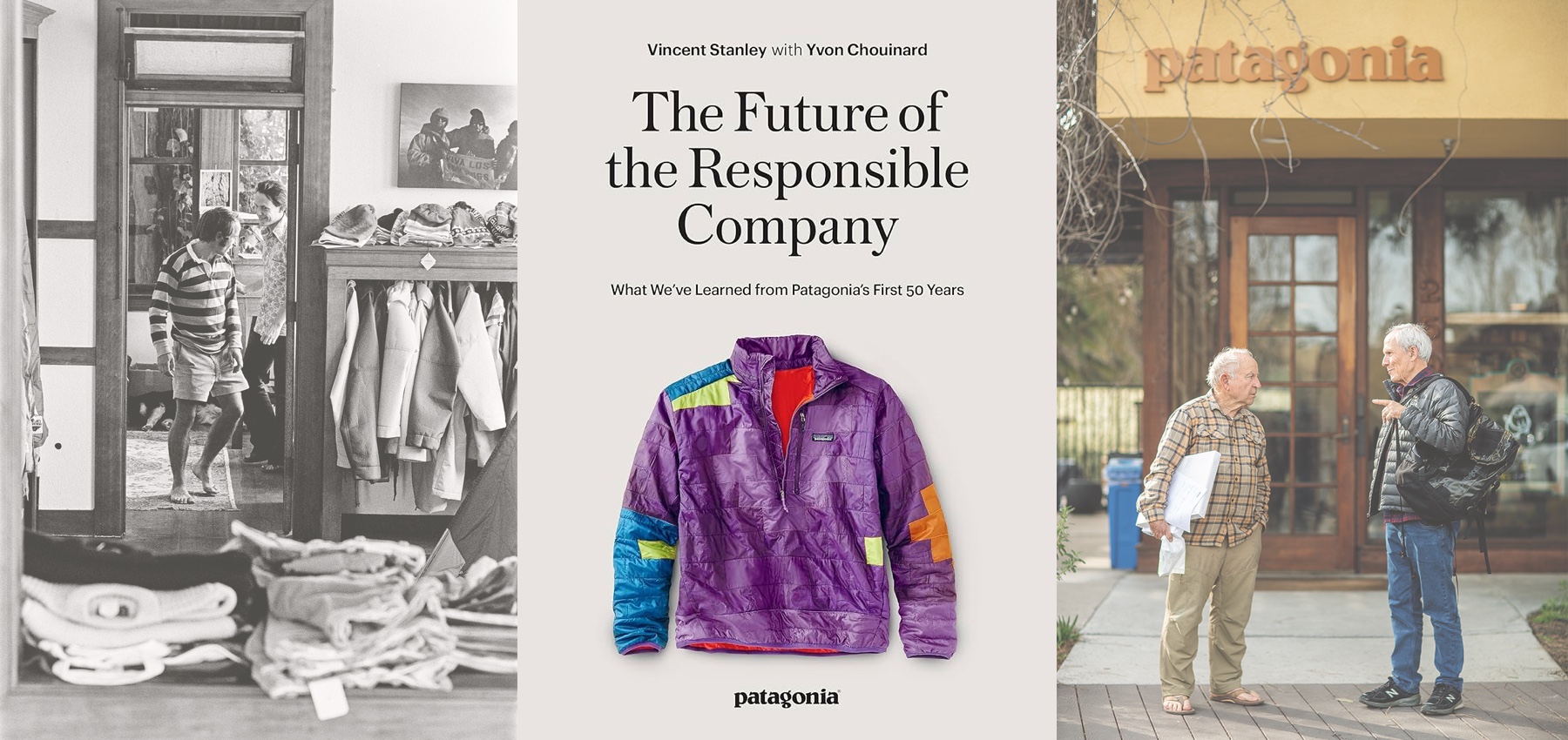
Vincent Stanley is the Director of Philosophy at Patagonia, and he holds the honor of being the company’s longest-serving employee. He is also an author, poet, and a resident fellow at the Yale Center for Business and the Environment. His most recent book, which he co-authored with Patagonia’s founder Yvon Chouinard, is titled The Future of the Responsible Company: What We’ve Learned from Patagonia’s First 50 Years.
The book recounts Patagonia’s evolution from its humble beginnings as a small offshoot of Chouinard Equipment for Alpinists to becoming the world’s premiere outdoor apparel brand into its current role of serving as a blueprint for how business can be a force for good in the world. In less than 200 pages, Vincent delves into Patagonia’s greatest business challenges, victories, and missteps, and he explains Patagonia’s never-ending quest to become more responsible, more thoughtful, and more effective in achieving its mission of “saving our home planet.”
My first real exposure to Patagonia’s business model was when I was a student in graduate school, earning my MBA. I read Yvon’s book Let My People Go Surfing, and realized that many of the business lessons and philosophies from Patagonia stood in stark contrast to those of mega-corporations. Patagonia’s approach opened my mind to a different way of thinking about business, one that led me to follow a much different path than I’d planned when I initially showed up at grad school. So it was a real honor to have the conversation with Vincent and dig even deeper into the philosophies, ideals, and tactics that have made Patagonia such a legendary enigma in the world of big-time business– and a role model for me and countless other business owners.
Vincent and I connected virtually– he was in Maine, I was in Colorado– and we talked about all aspects of the book, as well as his long and storied history at Patagonia. You can check out the episode notes for a full list of everything we discussed, and I would highly recommend you pick up a copy of The Future of the Responsible Company– it’s chock full of actionable, applicable wisdom that anyone with a job would benefit from knowing.
Thanks to Vincent for taking the time to chat, thanks to you for listening, and I hope you enjoy.
Photos courtesy of Patagonia
LISTEN & DOWNLOAD:
Apple Podcasts
Spotify
Google Podcasts
… or wherever you get your podcasts!
—
RESOURCES:
Topics Discussed:
- 3:00 – How Vincent became involved in Patagonia
- 7:00 – Why Vincent and Yvon decided to update The Responsible Company, and a history of changes at Patagonia
- 24:00 – When Vincent realized there was interest in and demand for the business model and values of Patagonia
- 28:00 – Differentiating between “responsible” and “sustainable”
- 31:00 – How Vincent and Patagonia approach the work of marketing
- 34:30 – The unconventional business performance indicators and evaluations that Patagonia employs
- 37:15 – Why books are important in Vincent and Patagonia’s work
- 41:15 – Who and what gives Vincent hope for the future
- 44:15 – Reconciling the guilt of “messing up”
- 50:15 – Vincent’s book recommendations
- 53:00 – Vincent’s parting words of wisdom
Information Referenced:
- Vincent Stanley
- Patagonia
- Yvon Chouinard
- The Future of the Responsible Company by Yvon Chouinard & Vincent Stanley
- All Patagonia Books
- San Joaquin Valley
- Wilkes-Barre, PA
- United Nations Sustainable Development Goals
- Laudato Si’ by Pope Francis
- Syrian Civil War
- Dr. Michael Kami
- Let My People Go Surfing by Yvon Chouinard
- Milton Friedman
- Dylan Tomine
- Frances B. Ashforth
- DamNation film
- Patagonia Books
- Malinda Chouinard
- Doug Tompkins
- Kristine Tompkins
- Doug Peacock
- Rick Ridgeway
- Tom McGuane
- Jim Harrison
- Greenwich Village
- Hurricane Lee
- Daniel Goleman
- The End of Nature by Bill McKibben
- Wallace Stevens
- William Carlos Williams
- Kate Raworth
- Donut Economics
- John Fullerton
- The Capital Institute
- Middlemarch by George Eliot
Enjoy this episode? Then you might like these too:
- Nick Offerman – Empathy, Nuance, & Good Hard Work
- Anna Borgman – Obsession, Curiosity, and Purpose-Driven Work
- Doug Peacock – 50 Years of Fighting for the Grizzlies
- Rick Ridgeway – Purpose-Driven Adventurer
- Lorelei Cloud – Solving Modern-Day Challenges with Ancient Tribal Wisdom
- Dr. Katharine Hayhoe – Effecting Change Through Authentic Conversation
- Dylan Tomine – Protecting What He Loves
Visit the podcast page for a full, searchable list of episodes
Rebecca Clarren – “The Cost of Free Land”
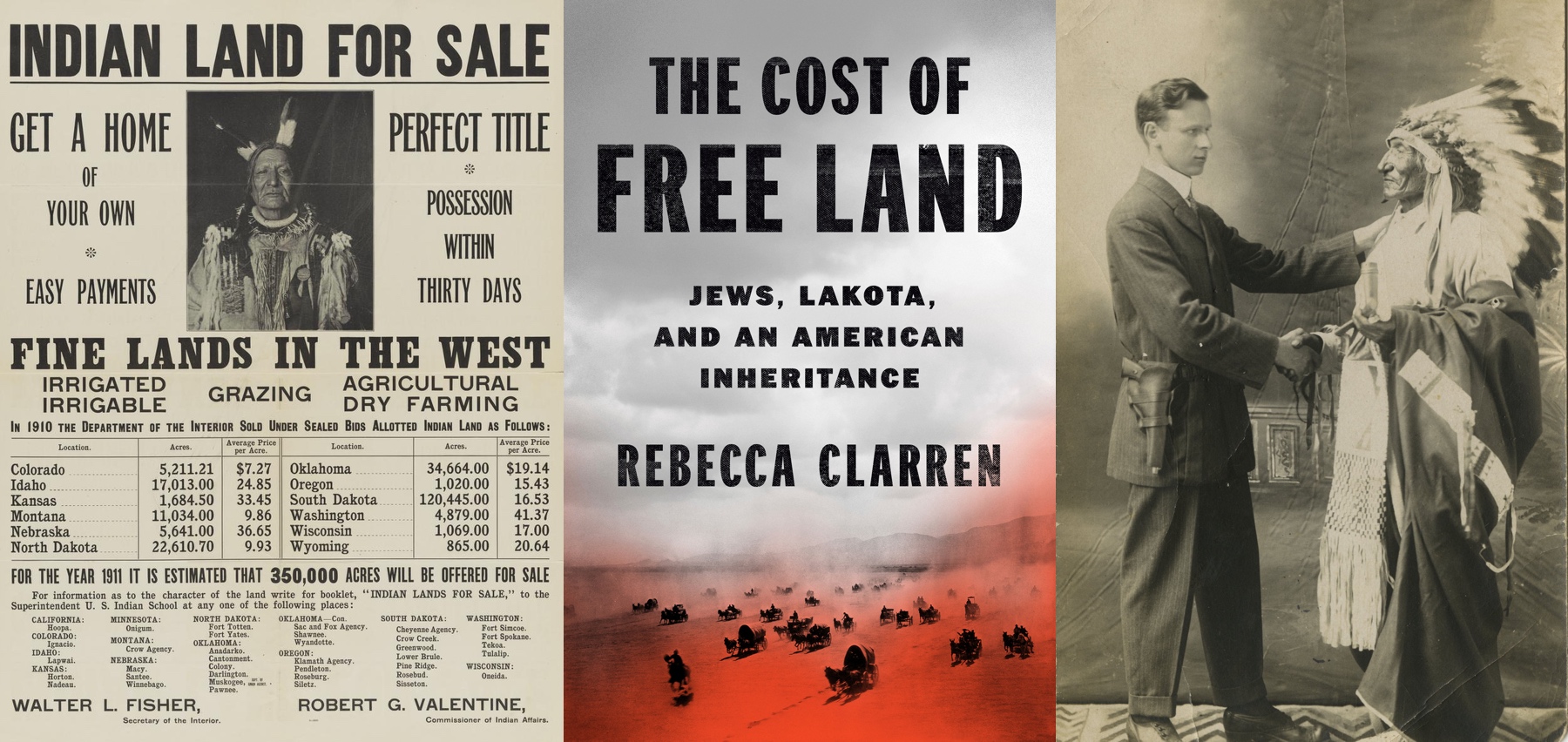
Rebecca Clarren is an award-winning journalist who has been writing about the American West for more than twenty years. Her most recent book is titled The Cost of Free Land: Jews, Lakota, and an American Inheritance. The book is a powerful, nuanced, and deeply personal exploration of her ancestors fleeing antisemitism in Russia and immigrating to the South Dakota prairie at the turn of the 20th century. I was lucky enough to receive an advanced copy of the book, and I absolutely loved it. Rebecca seamlessly weaves together heavily researched US and Native American history with a vulnerable, clear-eyed examination of her family’s legacy. The result is an engaging story that not only helped me better understand the past, but provided a blueprint for how we can begin to make amends and move forward, both individually and as a nation.
In The Cost of Free Land, Rebecca grapples with the complicated ripple effects of her family settling on the Great Plains– the free land that they received from the US government allowed them to establish a foothold in America, and over time, they found relative stability, especially when compared to their chaotic lives in Russia. But her family’s stability and eventual success came at a steep cost to the Lakota people, who were the victims of stolen land, broken treaties, and the devastating loss of their culture and resources. Contrasting her family’s experience with that of the Lakota makes this story all the more powerful, and speaks volumes about Rebeccs’s skill as a writer and journalist. Again, I loved the book.
Rebecca and I connected the day before the book was published, and we had a wonderful conversation. We started by discussing why she decided to write such a deeply personal story, and how that differs from most of her previous journalistic endeavors. She provides a brief overview of the Lakota people and the laundry list of injustices they faced during westward expansion. We discuss the complicated nature of land ownership on reservations, and how those complications continue even to this day. She explains how the US’s treatment of Native American influenced Hitler and the Nazi Party, and how she personally processes her family’s role in Westward expansion by working with spiritual mentors and exploring her own Jewish faith. We also talk about her career as a journalist, how motherhood has changed her, the challenge of writing, and she has lots of great book recommendations.
Thanks to Rebecca for writing such an important and eye-opening book, and thank you for listening. Hope you enjoy!
Photos courtesy of Rebecca Clarren and Viking Books.
LISTEN & DOWNLOAD:
Apple Podcasts
Spotify
Google Podcasts
… or wherever you get your podcasts!
—
RESOURCES:
Topics Discussed:
- 3:15 – When Rebecca decided to write “The Cost of Free Land”
- 9:15 – Discussing the vulnerable process of capturing not just Rebecca’s story, but her entire family’s story and how it ties in with American histories of stolen land
- 18:15 – Discussing empathy in the difficult stories of Rebecca’s book
- 21:30 – A brief history of the Lakota and the injustices they faced during westward expansion
- 27:00 – Discussing the complicated nature of land ownership on Indigenous reservations, and how the US Government still influences land decisions on reservations
- 30:45 – Discussing the historical implications of US land theft from Indigenous peoples, including how it influenced the actions of the Nazis during the Holocaust
- 33:15 – The Six Steps of Repentance and how Rebecca processes the violent past of the US and how she benefited from it
- 40:45 – The biggest surprise about Rebecca’s family that she learned in writing this book
- 43:15 – Surprises in Rebecca’s research about the Lakota
- 48:00 – Where Rebecca thinks the world of journalism is going
- 51:15 – Rebecca’s career trajectory
- 55:15 – How having kids impacted Rebecca’s approach to work
- 58:30 – The difficulty of writing
- 59:30 – Rebecca’s book recommendations
- 1:05:45 – Rebecca’s parting words of wisdom
Information Referenced:
- Rebecca Clarren
- The Cost of Free Land by Rebecca Clarren
- Kickdown by Rebecca Clarren
- High Country News
- Pine Ridge Reservation
- Lakota
- Investigate West
- Sioux tribe
- Dakota
- The Regional Arts and Culture Council
- Yiddish
- Pogrom
- Abby Abinanti
- Yurok nation
- Rabbi Benjamin Barnett
- Havruta
- Torah
- Talmud
- Cathy Park Hong
- Ann Tweedy
- Treaty of Fort Laramie
- Tim Giago
- Lakota Times
- Ed Marston
- Josh Meisel
- Haskell Indian Nations University
- Indian Land Tenure Foundation
- Lorelai Cloud
- Hitler’s American Model by James Whitman
- Maimonides
- On Repentance and Repair by Danya Ruttenberg
- Wounded Knee Massacre
- Cheyenne River Sioux Tribe
- Remi Bald Eagle
- Smith College
- Denali National Park
- Durango Herald
- Mariana Islands
- Betsy Marston
- The Plague of Doves by Louise Erdrich
- Late Nights on Air by Elizabeth Hay
- Cloud Atlas by David Mitchel
- Let the Great World Spin by Collin McCan
- Joan Didion
- Custer Died for Our Sins by Vine Deloria Jr.
- Killers of the Flower Moon by David Grann
Enjoy this episode? Then you might like these too:
- Douglas Brinkley – Exploring the Past to Find Inspiration for the Future
- Lorelei Cloud – Solving Modern-Day Challenges with Ancient Tribal Wisdom
- David Gessner Returns – “A Traveler’s Guide to the End of the World”
- Doug Peacock – 50 Years of Fighting for the Grizzlies
- Bryce Andrews, Part 2 – “Holding Fire”
- Shane Doyle – Reverence for the Past, Hope for the Future
- Marci McLean & Cora Neumann on COVID’s Impact on Native Communities
- Juanita Vero, Part 2 – A Deep Desire to Serve
Visit the podcast page for a full, searchable list of episodes
Nick Offerman – Empathy, Nuance, & Good Hard Work
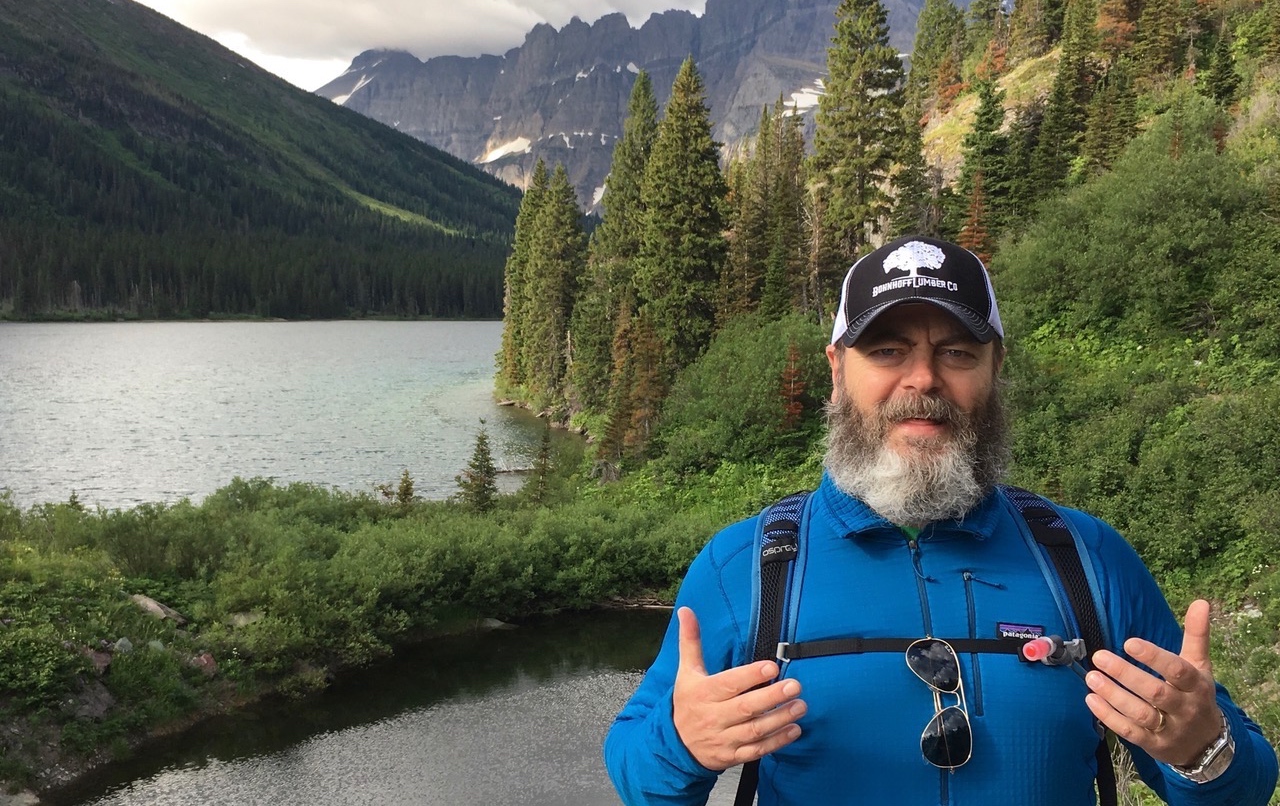
Nick Offerman is an actor, author, humorist, and woodworker who is best known for playing the legendary character Ron Swanson on NBC’s Parks and Recreation. But his success as an actor is just the tip of the iceberg– he’s written five New York Times bestselling books, is the narrator of three of Wendell Berry’s audiobooks, and owns and operates Offerman Woodshop, where he and a small collective of woodworkers handcraft everything from spoons to furniture to canoes. And as many of you know, Nick is a staunch advocate for conservation, responsible land stewardship, and sustainable agriculture.
Nick’s most recent book is titled Where the Deer and the Antelope Play: The Pastoral Observations of One Ignorant American Who Loves to Walk Outside, and it’s an excellent, thought-provoking read. It follows Nick on a series of adventures through the American West and English countryside– adventures driven by his desire to better understand conservation, recreation, and humans’ connection to the land and wild places. Along the way, he explores everything from the legacies of John Muir and Aldo Leopold to regenerative agriculture, without shying away from tough, complex topics, such as industrial farming and the conservation movement’s impact on Indigenous cultures. The book also hits on so many underlying ideas that are often explored here on Mountain & Prairie, including nuance, empathy, compassion, curiosity, and doing work that makes the world a better place. I loved the book, and I highly recommend it.
I met up with Nick in Los Angeles at Offerman Woodshop, and we had a fun, inspiring, and at times hilarious conversation about everything from Aldo Leopold’s Land Ethic to Nick’s work as a “traveling clown.” (His words, not mine!) We started out by discussing the life-changing moment when a friend handed him a Wendell Berry book, and how Wendell’s writings and philosophy continue to be one of Nick’s most important sources of inspiration and instruction to this day. We discuss why hard work and being of service to others are so deeply embedded in Nick’s DNA, and the critical role that artists can play in solving societal challenges. We talk about authenticity, the importance of being even-keeled, the need for nuance and open-mindedness, the skill of self-deprecation, enjoying the process of creating, not passing judgment, and much, much more.
Where the Deer and the Antelope Play was just released in paperback, so follow the links in the episode notes to pick up a copy. If you’re a longtime listener, I know you’ll love it. There are also links to Offerman Woodshop, Nick’s touring schedule, and all of his other books, so click through and check it all out.
A thousand thanks to Nick for inviting me to his shop for such an amazing conversation, and thank you for listening. Hope you enjoy.
Header photo of Nick in Glacier National Park by George Saunders, headshot by Taylor Miller.
LISTEN & DOWNLOAD:
Apple Podcasts
Spotify
Google Podcasts
… or wherever you get your podcasts!
—
RESOURCES:
Topics Discussed:
- 3:30 – A self-deprecation showdown
- 5:30 – The impact of Wendell Berry on Nick’s life
- 10:15 – Of Nick’s family and upbringing, and tying back to Wendell Berry
- 15:15 – Nick telling the story of when he “made it,” and how that impacted his work ethic
- 18:30 – Of the ethos of taking the time to do hard things
- 23:15 – The impact of a conversation between Nick and Wendell Berry
- 29:00 – More about Nick’s book, Where the Deer and the Antelope Play
- 42:15 – How Nick discusses serious topics with a lighthearted demeanor
- 47:30 – How Aldo Leopold influenced Nick
- 51:45 – A great story about Wendell Berry and the need for artists
- 55:15 – How and when Nick developed his authenticity
- 1:02:00 – The two jokes Nick has written in his career
- 1:05:45 – What good work looks like
- 1:18:00 – Discussing how to pronounce words and the importance of not passing judgment
- 1:23:15 – Coming back to “good work”
Information Referenced:
- Nick Offerman
- Offerman Woodshop
- Where the Deer and the Antelope Play by Nick Offerman
- All of Nick’s books
- The Rainbow Song by Nick Offerman
- Steppenwolf Theatre
- Ethan Hawke
- Buried Child, a play by Sam Shepherd
- Leo Burmester
- Fidelity, short stories by Wendell Berry
- Watch With Me, short stories by Wendell Berry
- Gandalf
- Minooka, IL
- David Lee Roth
- As I Lay Dying, a play by William Faulkner
- Frank Galati
- Anton Chekov
- Nick on Conan O’Brien
- Megan Mullally
- Will and Grace
- Everybody Knows This Is Nowhere, by Neil Young
- SkyMall
- John Muir
- Aldo Leopold
- Laura Dunn
- Look and See, directed by Laura Dunn and Jef Sewell, Co-Produced by Nick Offerman
- Mary Berry
- Chess Pie
- Tanya Berry
- Fine Woodworking Magazine with Nick on the cover
- Garbage Land by Elizabeth Royte
- Bottlemania by Elizabeth Royte
- Gowanus Canal
- Redhook, Brooklyn, NY
- Poland, MA
- Kathie Sever
- Matt the Electrician
- “The Bear,” a song by Matt the Electrician
- The Paramount Theatre, Austin TX
- Greta Thunberg
- Han Solo
- Michael Pollan
- Parks and Recreation
- A Sand County Almanac by Aldo Leopold
- Rachel Carson
- DDT
- The Unsettling of America by Wendell Berry
- World Ending Fire by Wendell Berry
- Just Act Naturally by the Beatles
- Garrison Keillor
- Rodney Dangerfield
- Zack Galifianakis
- Sarah Silverman
- Full Bush
- The Last of Us
- Craig Mazin
- Chernobyl
- Paramount Theatre, Denver
- University of Illinois at Urbana-Champaign
- Lake District, England
- The Shepherd’s Life by James Rebanks
- Pastoral Song by James Rebanks
- The Farmer’s Wife by Helen Rebanks
- White Oak Pastures
- Joel Salatin
- Our Home Place Meat
- John Hodgman
- Judge John Hodgman Podcast
- Siddhartha
Enjoy this episode? Then you might like these too:
- Douglas Brinkley – Exploring the Past to Find Inspiration for the Future
- Dr. Katharine Hayhoe – Effecting Change Through Authentic Conversation
- Christy Sing Robertson – On Grit, Hard Work, & Going All In
- Yemi Mobolade – Community Builder
- Lorelei Cloud – Solving Modern-Day Challenges with Ancient Tribal Wisdom
- Pete McBride, Part 2: In Search of Silence
- Rick Ridgeway – Purpose-Driven Adventurer
- Anna Borgman – Obsession, Curiosity, and Purpose-Driven Work
- Kathie Sever – Chainstitching, Craftsmanship, and Cosmic Western Wear
- Betsy Gaines Quammen – A Fascinating History of Public Lands in the West
- Shane Doyle – Reverence for the Past, Hope for the Future
Visit the podcast page for a full, searchable list of episodes
Matt Cahill – A Deep Dive into the Sagebrush Sea
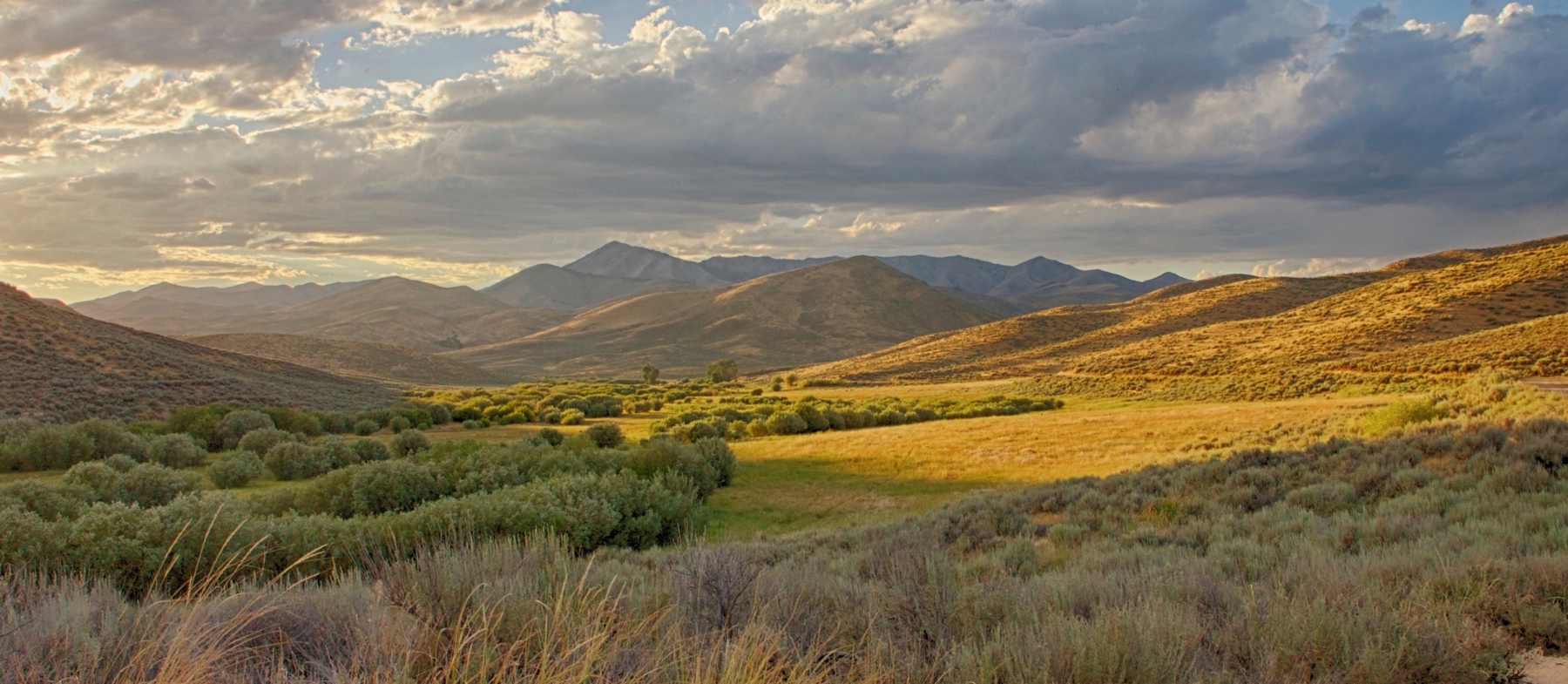
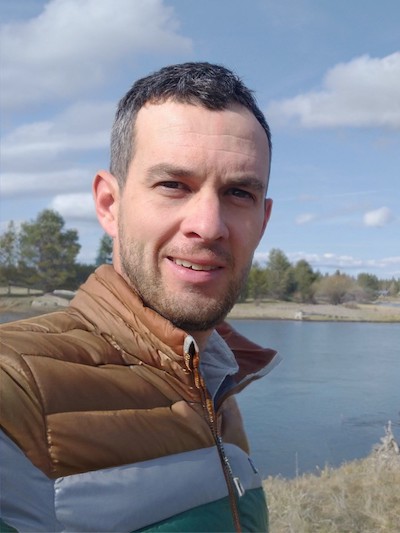
Matt Cahill is the Sagebrush Sea Program Director for the Nature Conservancy. Based out of Bend, Oregon, Matt leads all of TNC’s critical work restoring, managing, and protecting sagebrush habitat across six western states. This is a huge and complex effort– it combines protection and policy work with ground-breaking restoration advances, public and industry partnerships, and local community projects. But as you’ll hear in this conversation, Matt is optimistically leaning into the challenge and making great strides to protect this uniquely Western ecosystem.
To give you some context into the vastness of North America’s sagebrush ecosystem, it spans 150 million acres and is home to 350 rare, threatened, and endangered species. Since 1998, 14 million acres of sagebrush ecosystems have been lost, and currently, we’re losing approximately one million acres to invasive species, catastrophic wildfires, development, improper grazing, and climate change. 70% of the Sagebrush Sea is found on public lands, so efforts to protect, manage, and restore the ecosystem are dependent on creative, action-oriented public-private partnerships. Again, Matt is leading a huge and complex effort!
In this episode, we start our conversation by discussing why the Sagebrush Sea is important, and why even people who live far from the ecosystem should care about it. We discuss the history of the threats to sagebrush, and we also do a deep dive into the specific threat of cheatgrass– a true scourge on the landscapes of the West. We discuss the ecology of sagebrush, how TNC measures success when it comes to protecting such a fragile ecosystem, and the importance of partnering with ranchers. We talk about the efficacy of for-profit approaches to restoration, collaboration with government agencies, and specific cutting-edge approaches to restoration. Matt also explains his career trajectory that led him from the East Coast to becoming obsessed with sagebrush, and he offers several great book recommendations.
Be sure to check out the episode notes for links to everything we discuss, including a few videos and writings by Matt that will provide even more context into this nuanced issue. Thanks to Matt and his team for all of their hard work, and thank you for listening. Hope you enjoy.
Photos courtesy of The Nature Conservancy
LISTEN & DOWNLOAD:
Download on Apple Podcasts
Download on Spotify
Download on Google Podcasts
…or wherever you get your podcasts!
EPISODE PARTNER:
This episode is brought to you in partnership with the Colorado chapter of The Nature Conservancy. Guided by science and grounded by decades of collaborative partnerships, The Nature Conservancy has a long-standing legacy of achieving lasting results to create a world where nature and people thrive.
On the fourth Tuesday of every month throughout 2023, Mountain & Prairie will be delving into conversations with a wide range of The Nature Conservancy’s leaders, partners, collaborators, and stakeholders, highlighting the myriad of conservation challenges, opportunities, and solutions here in the American West. You can access all of the 2023 episodes here.
To learn more about The Nature Conservancy’s impactful work in Colorado and around the world, visit www.nature.org/colorado
RESOURCES:
Topics Discussed:
- 3:30 – Description of the Sagebrush Sea
- 7:45 – Why sagebrush matters
- 10:30 – The state of the Sagebrush Sea and how it got there
- 15:15 – Cheatgrass’s impact on the Sagebrush Sea
- 23:30 – TNC’s Sagebrush Sea program
- 26:45 – Exploring the restoration aspect of Matt’s work
- 33:15 – The restoration timeline for sagebrush regions
- 35:30 – Measuring restoration success
- 39:00 – The management portion of Matt’s work
- 41:30 – Matt’s success stories of collaborating with ranchers
- 46:00 – The land protection (acquisition, easement, etc.) portion of Matt’s work
- 49:15 – Evaluating the for-profit wing of conservation of sage grouse habitat
- 43:15 – Discussing TNC’s collaboration across its own programs as well as with government land managers
- 57:00 – How Matt ended up an expert in sagebrush biomes when he grew up on the East Coast
- 1:00:30 – Matt’s book recommendations
- 1:04:00 – Matt’s parting words of wisdom
Information Referenced:
- The Nature Conservancy
- The Sagebrush Sea program at The Nature Conservancy
- Innovative Restoration article about TNC’s Sagebrush Sea work
- Sagebrush Conservation Design
- Matt’s article about the “Defend the Core, Grow the Core” framework
- Sagebrush
- Salt playa
- Burns, OR
- Lander, WY
- Ponderosa pine
- Piñon pine
- Juniper
- Cheatgrass
- Medusahead
- Ventenata/wiregrass
- Cryptobiotic Crust
- Fescue
- Bluebunch Wheatgrass
- Pinedale, WY
- Carlos Fernadez
- Winecup Gamble Ranch
- Matador Ranch
- Red Canyon Ranch
- Taylor Hawes
- Bears Ears National Monument
- Matt Moorehead
- Sagebrush Ocean by Stephen Trimble
- Catch-22 by Joseph Heller
- Brave New World by Aldous Huxley
- Franz Kafka
- Basin and Range by John McPhee
- Encounters with the Archdruid by John McPhee
Enjoy this episode? Then you might like these too:
- Carrie Segil & Duncan Gilchrist – Catalyzing Conservation in Colorado and Beyond
- Lorelei Cloud – Solving Modern-Day Challenges with Ancient Tribal Wisdom
- Rob Addington – A Deep Dive into Western Wildfires and Forest Health
- Chris Hawkins – Using Nature to Build Healthier & More Equitable Communities
- Matt Moorhead & Galen Guerrero-Murphy – Grasslands Conservation on the Southern High Plains
- Taylor Hawes – Innovative Conservation in the Colorado River Basin
- Dr. Katharine Hayhoe – Effecting Change Through Authentic Conversation
- Carlos Fernández, Part 2 – Creating Conservation Opportunities During Uncertain Times
Visit the podcast page for a full list of episodes where you can filter episodes by topic and guests’ vocations.
James Prosek – Art, Philosophy, & Our Natural World
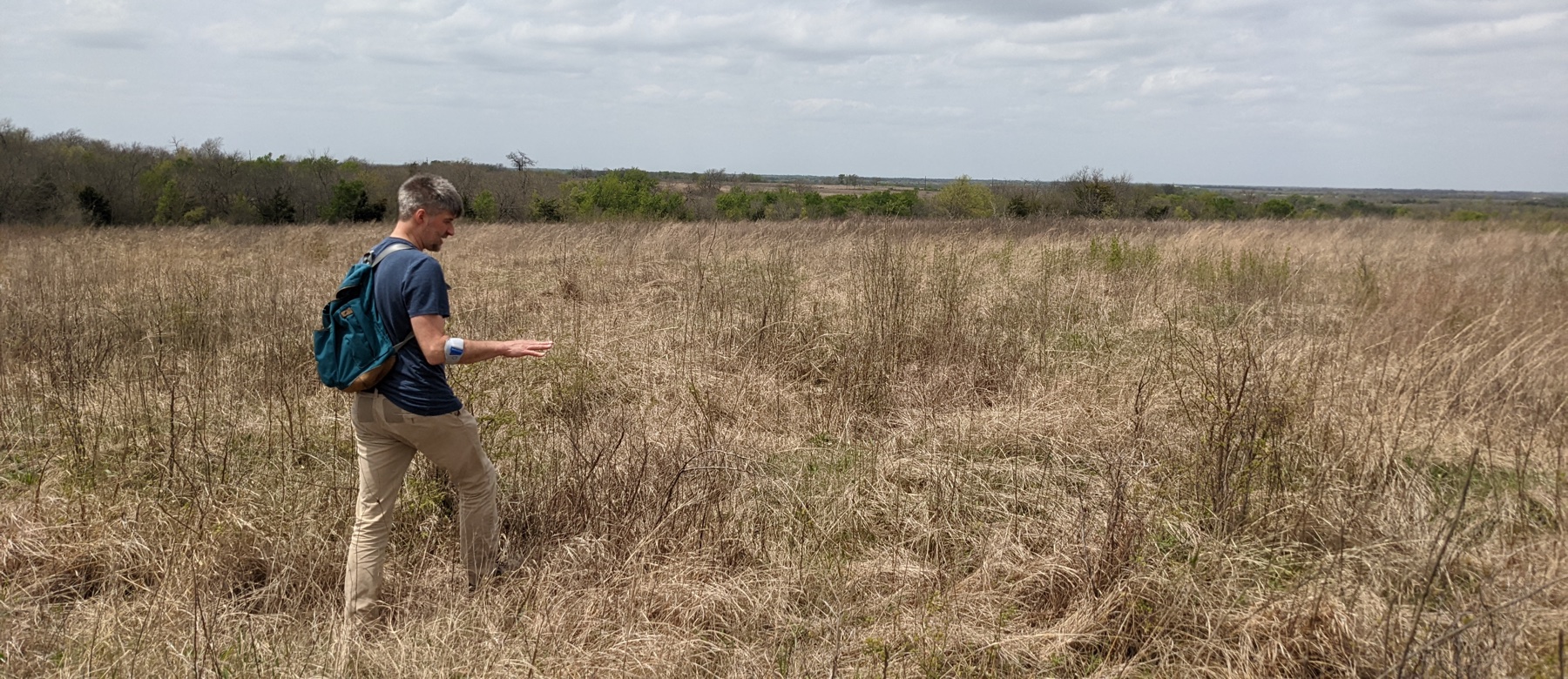
James Prosek is an artist, writer, and naturalist whose work deeply examines our relationship with the natural world. Over the course of his career, he’s focused his artist’s eye and philosopher’s mind on everything from trout to eels, from birds to ocean fishes. For the past two years, he’s been focused on understanding and documenting the grasslands of Texas, and he’s traveled the state examining the diverse plants and wildlife that call the prairie ecosystem home. Beginning on September 16, 2023, the results of his journey around Texas will be on display at the Amon Carter Museum of American Art, in his new exhibition titled Trespassers: James Prosek and the Texas Prairie.
James was born in Connecticut and, as you’ll hear in our conversation, much of his childhood was spent obsessed with birds, fish, and fishing. He attended Yale Univesity, where at age 19 he published his first book titled Trout: An Illustrated History, which featured seventy of his watercolor paintings of the trout of North America. From there, his curiosity about the natural world continued to intensify, as evidenced by his prolific production of art and writing for many renowned museums and publications. He has also lent his talents to a variety of conservation efforts, most notably his partnership with Yvon Chionard to protect coldwater fisheries habitat.
James and I share many mutual friends and interests, so it was wonderful to connect with him for this conversation. It’ll only take you a few minutes of listening to realize that James is a deep thinker whose art is the manifestation of his extremely nuanced and fascinating ideas and philosophies. We started out talking about his first memory of interacting with nature, and how he has used drawing and journaling as tools to better understand plants, animals, and concepts. We discuss how the idea of naming plants and animals is an imperfect science, how drawing connects us with our evolutionary past, how philosophy and philosophical thinking inform all of his art, grasslands in Texas, the importance of understanding and respecting place, how James snaps out of creative slumps, his writing process, and he offers plenty of book recommendations.
As is the case with so many of my guests, I could’ve talked to James for many more hours. So thankfully, this conversation is part one of what will be a two-episode series with James. The second episode will be a live event at the Amon Carter Museum of American Art, on Thursday, January 11, 2024. We’ll be continuing this conversation, and we’ll be focusing in more detail on his exploration of the Texas Prairie and his new exhibition, Trespassers. We’ll be releasing more information about this event soon, but I’d love to see some of you at the event in Fort Worth on January 11.
A huge thank you to James for his inspiring art, to the Amon Carter Museum for the opportunity to chat with James, and to all of you for listening. Enjoy!
Photos courtesy of James Prosek and the Amon Carter Museum of American Art.
LISTEN & DOWNLOAD:
Apple Podcasts
Spotify
Google Podcasts
… or wherever you get your podcasts!
—
RESOURCES:
Topics Discussed:
- 3:15 – James’ first memory of interacting with nature
- 7:00 – When journaling and drawing became standard practices for James
- 10:15 – James’ view on drawing and its connection to our evolutionary past as hunters
- 15:15 – How drawing fish made James a better angler
- 20:45 – How names affect our thinking about other organisms
- 24:15 – The art that James engaged in parallel to fishing
- 28:00 – How James sharpens his philosophy
- 39:45 – James’ writing process
- 43:00 – How James establishes connections with places
- 1:00:15 – Whether or not James has gone through an artistic slump
- 1:10:00 – James’ parting words of wisdom
Information Referenced:
- Amon Carter Museum of American Art
- Trespassers: James Prosek and the Texas Prairie
- Rhododendron
- Monarch butterfly
- Fairfield, CT
- National Audubon Society
- Why We Draw: TEDxYale talk by James Prosek
- Warbler
- Brook Trout
- Arctic Char
- Mill River (CT)
- Brown Trout
- Sam Harris
- The Treachery of Images (“This is not a pipe” painting), René Magritte
- Merchant Marines
- Henry David Thoreau
- Ralph Waldo Emerson
- Stephen Jay Gould
- E.O. Wilson
- Alfred Korzybski
- Jupiter, FL
- “Art, Artifact, Artifice” by James Prosek
- The Doors of Perception by Aldous Huxley
- David Starr Jordan
- Ichthyology
- Louis Agassiz
- Louis Agassiz Fuertes
- On the Origin of Species by Charles Darwin
- This is Not a Pipe by Michel Foucault
- On Truth and Lies in a Nonmoral Sense by Frederich Nietzsche
- The Divine Within by Aldous Huxley
- Natural Kind
- Realism
- Nominalism
- Ludwig Wittgenstein
- Kristof Zyskowski
- Peabody Museum, Yale
- Suriname
- “She Unnames Them” by Ursula K. LeGuin
- Robert Behnke
- Colorado State University
- Blue Marlin
- Cape Verde Islands
- Woods Harbor, Nova Scotia
- Bird, Butterfly, Eel by James Prosek
- Orange Milkweed
- Spencer Wigmore
- Maggie Addler
- Edwards Plateau in TX
- Indiangrass
- Big Bluestem
- Little Bluestem
- Switchgrass
- Changes in the Land by William Cronon
- Davis Mountains in West Texas
- Broomsedge Bluestem
- Heath Hen
- Martha’s Vineyard
- Prairie Time by Matt White
- Dartmouth Hood Museum
Enjoy this episode? Then you might like these too:
- Live from Maxwell Alexander Gallery
- Frances Ashforth – Art, Water, and Wide-Open Spaces
- Beau Alexander – Paying Homage to the Past, While Focusing on the Future
- Kelsey Johnson – Chasing Her Artistic Ambitions
- Ivan McClellan – A New Look at the Old West
- Morgan Irons – Finding Her Muse
- Live with the Cowboy Artists of America
- Logan Maxwell Hagege – Artistic Evolution
Visit the podcast page for a full, searchable list of episodes
Anna Borgman – Obsession, Curiosity, and Purpose-Driven Work
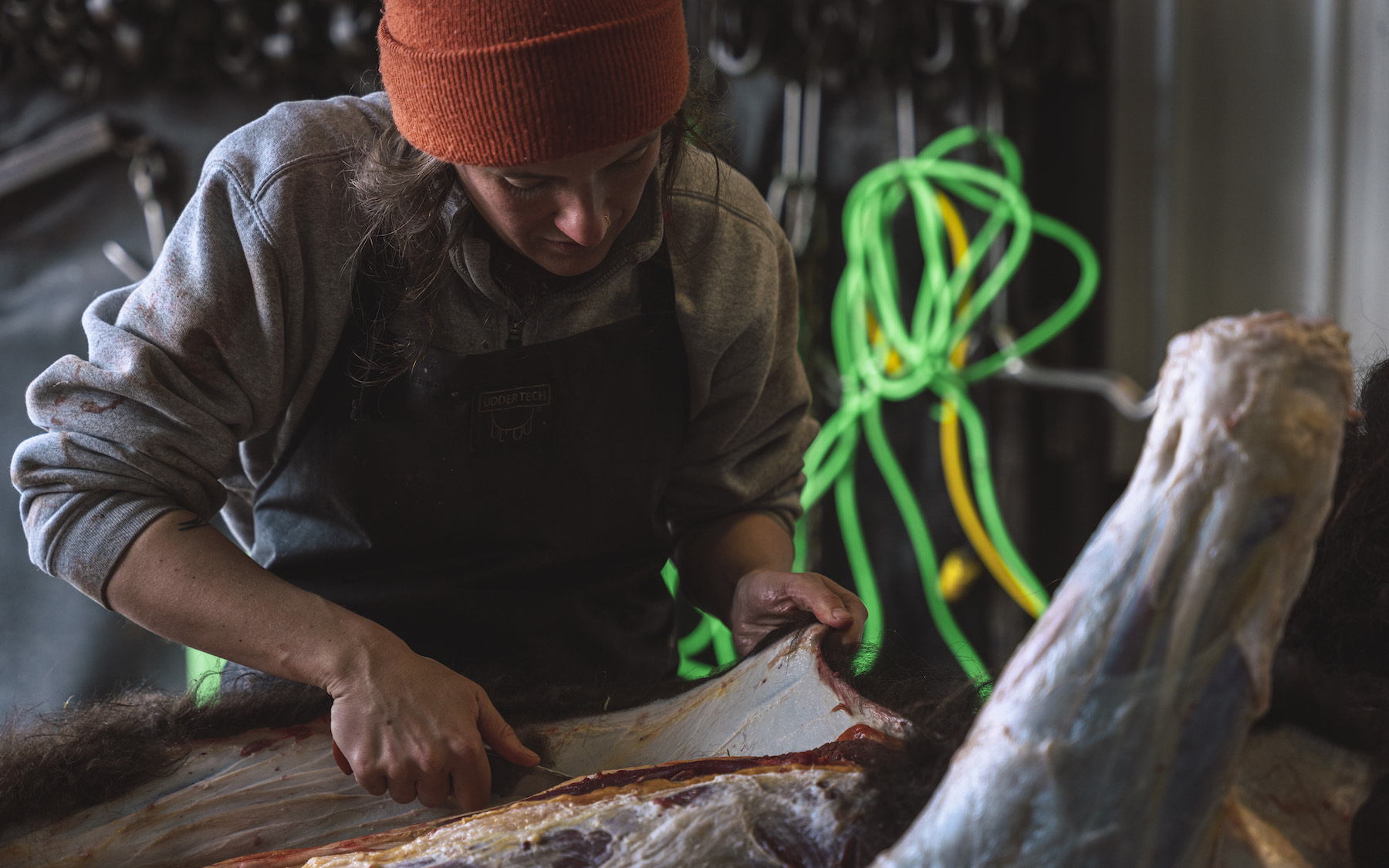
Anna Borgman is a Montana-based butcher, chef, and writer whose work focuses on helping people better understand and appreciate the origins of their food. Whether writing an article for Steven Rinella’s MeatEater or helping to field harvest and process a bison, Anna has a gift for helping curious, conscientious people become more educated about the impacts of their food choices. And as you’ll hear in this conversation, her enthusiasm and authenticity are infectious– even after more than an hour of chatting, I felt we only scratched the surface.
Anna grew up in Oregon, and thanks to participation in 4H, she was involved with animals and livestock from an early age. During her teenage years, skiing became her primary passion, and she devoted much of her post-college life to spending as many days as possible in the mountains, oftentimes working multiple jobs to make ends meet. Eventually, through a serendipitous chain of events that we discuss, she found her way into culinary school, which was her gateway into the world of meat and butchery. Through all the various stages of Anna’s career, she’s brought intense devotion– possibly even obsession– to her work, which has resulted in a fascinating life trajectory that is both inspiring and instructive.
Anna and I share so many mutual friends and I’ve been hearing about her and her work for many years, so I was thrilled to have her finally join me for a conversation. We started out discussing her childhood in Oregon and how skiing became her primary focus for so many years. We discuss some of her adventurous international travel experiences, and how those places and the characters she met led her into the world of food. We discuss the upsides of obsession, advice for getting out of ruts, the value of curiosity, and the importance of experiencing other cultures. She also talks in detail about the realities of slaughtering livestock, why she feels such a connection to butchery, her favorite books, and much more.
Even though this was my first time meeting Anna, I felt like I was chatting with an old friend. I’m super-inspired by all of her work, but even more inspired by the focus and passion she brings to everything she does. I hope you enjoy this conversation as much as I did.
Photos courtesy of Anna Borgman and Chloe Nostrant
LISTEN & DOWNLOAD:
Apple Podcasts
Spotify
Google Podcasts
… or wherever you get your podcasts!
—
RESOURCES:
Topics Discussed:
- 3:00 – What Anna wanted to be when she grew up
- 7:30 – When Anna realized that most livestock she raised would led to slaughter
- 10:00 – Anna’s interest in skiing and how it led her to work with a French cook in Australia and adventures in Spain
- 16:30 – Anna’s experience in culinary school
- 20:15 – Why so many interesting people have pastry making on their resume
- 22:15 – When Anna became interested in butchery, and whether or not working long days in culinary school made Anna feel more content
- 25:45 – The importance of having an obsession
- 28:45 – Anna’s advice for getting out of a rut
- 32:00 – The scariest things that have happened to Anna during international travel, as well as the lessons travel taught her
- 38:30 – When Anna went all in on butchery
- 43:00 – The process of slaughtering and butchering
- 46:30 – Anna’s first slaughter
- 51:45 – Lessons from butchery
- 57:00 – The value of curiosity
- 59:45 – Discussing Forage Fed
- 1:03:45 – Anna’s book recommendations
- 1:09:00 – Anna’s guilty pleasures (or lack thereof)
- 1:14:00 – Anna’s parting words of wisdom
Information Referenced:
- Anna Borgman
- North Bridger Bison
- Bend, OR
- Powell Butte, OR
- 4-H
- University of Utah
- Thredbo Ski Resort
- Kitchen Confidential by Anthony Bourdain
- Basque Country
- San Sebastian, Basque Country
- Basque History of the World by Mark Kurlansky
- Salt by Mark Kurlansky
- Cod by Mark Kurlansky
- Cascade Culinary Institute
- Kathie Sever
- Fort Lonesome
- Diplomat Cream
- Enneagram
- Bilbao. Spain
- Sam Harris
- Matt Skoglund
- Article about Anna in Deseret News
- Amsterdam Meat Shop
- Amsterdam, MT
- Camas Davis
- Good Meat Project
- Temple Grandin
- Adam Gall
- Kate Kavanaugh
- Ryan “Cal” Callaghan
- Backcountry Hunters and Anglers (BHA)
- Back40 Property
- Mark Kenyon
- Wild and Whole
- Danielle Prewett
- Blackbird restaurant
- One Montana Master Hunters Group
- Raw Deal by Chloe Sorvino
- Old Salt Co-op
- American Lucifers by Jeremy Zallen
- Moby Dick by Herman Melville
- The End of Night by Paul Bogard
- Seeing Silence by Pete McBride
- Call Sign Chaos by James Mattis
Enjoy this episode? Then you might like these too:
- Rebuilding a Resilient, Regional Meat Supply Chain – LIVE at the Old Salt Festival
- Kate Mannix – A Legacy of Land Stewardship
- Kate Kavanaugh – Regeneration & Restoration
- Mark Kenyon – A Passion for Public Lands
- Kelsey Johnson – Chasing Her Artistic Ambitions
- Matt Pierson – Finding New Solutions for Food Insecurity
- Amber Smith – Creating Connection & Community
- Cate Havstad-Casad, Part 2 – Building Businesses for the Greater Good
Visit the podcast page for a full, searchable list of episodes
Carrie Segil & Duncan Gilchrist – Catalyzing Conservation in Colorado and Beyond
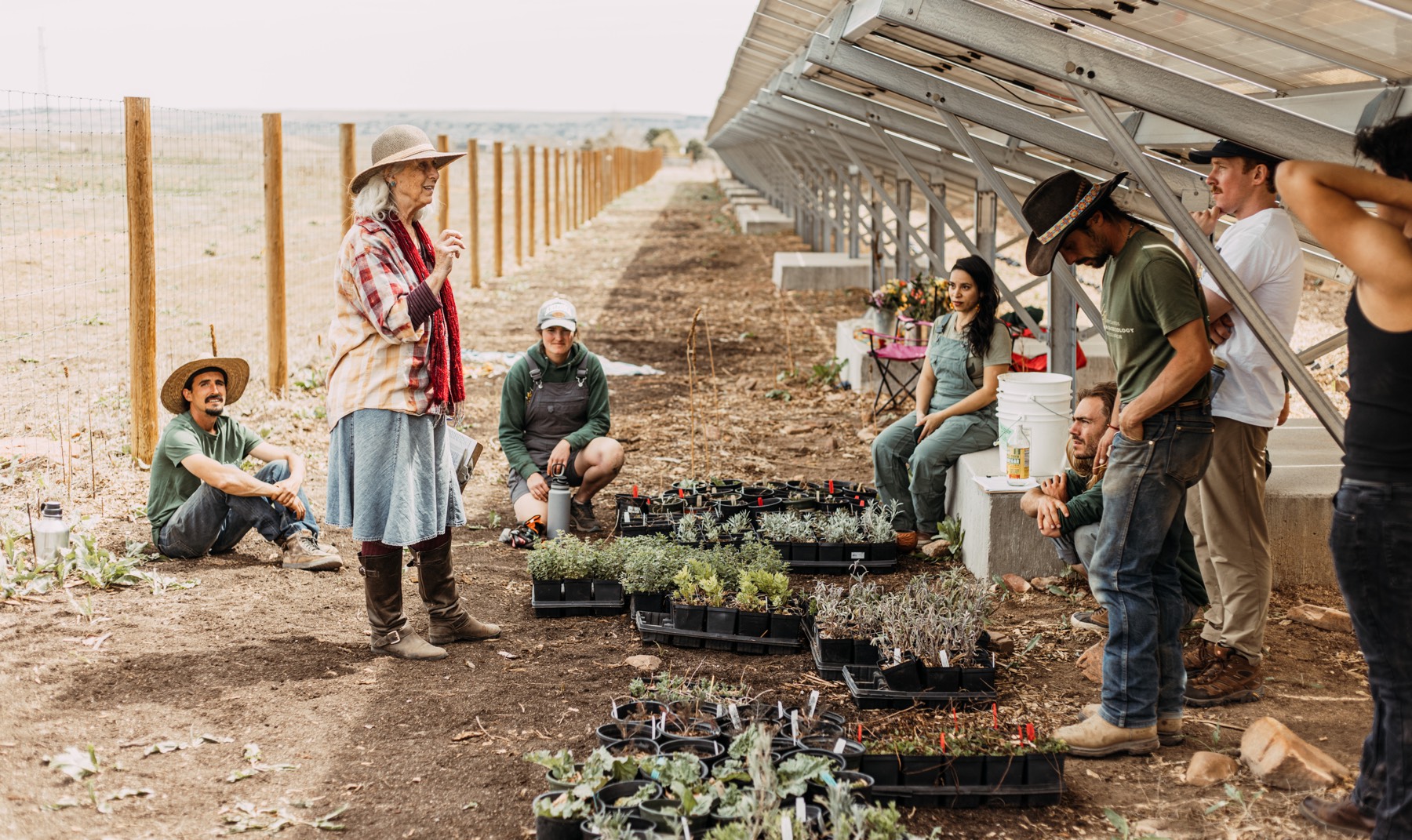
Carrie Segil is the People and Culture Manager at The Nature Conservancy in Colorado, and Duncan Gilchrist is a Climate and Natural Resources Policy Associate at The Nature Conservancy in Colorado. Both Carrie and Duncan are deeply involved with TNC Colorado’s Catalyst Fund, a cutting-edge conservation funding initiative that supports forward-looking projects that enable innovation and rapid learning, both to test new ideas and to build greater capacity for innovation over the long term.
One of the Catalyst Fund’s most notable projects involves agrivoltaics, which is the simultaneous use of land for both solar energy production and agriculture. The project is called the Agrivoltaics Retrofit Partnership, and it’s a Boulder-based partnership between TNC, Jack’s Solar Garden, Drylands Agroecology Research, Boulder Housing Partners, and a conservation-justice / community outreach partner called FLOWS. The project aims to achieve multiple conservation and community objectives, including restoring degraded land, producing perennial plants with medicinal, economic, and indigenous cultural value, and providing a host of benefits to local marginalized community members– benefits that we discuss in this episode.
In this episode, we talk in detail about this specific agrivoltaics project, as well as some of the other innovative projects that are being pushed forward thanks to support from the Catalyst Fund. We discussed how and why TNC Colorado decided to create the Catalyst Fund in the first place, and the need to push boundaries and take risks in the conservation space. Carrie offers insights into specific Catalyst projects, such as virtual fencing for bison, and Duncan discusses all the details about this agrivoltaics project– including the genesis of the idea, the challenges of the projects, and why it has proven to be so successful and replicable. We also discuss how policy on the state and federal level is creating more opportunities for agrivoltaics, why it garners bipartisan support, and lessons learned from all of the Catalyst Fund projects.
I was so impressed with Carrie and Duncan’s enthusiasm, professionalism, and commitment to innovation, and I learned so much from this conversation. Be sure to check out the episode notes to learn more about everything we discussed, and please share this episode with any friends or colleagues who might find it valuable. Thanks so much for listening, I hope you enjoy!
Photos courtesy of The Nature Conservancy
LISTEN & DOWNLOAD:
Download on Apple Podcasts
Download on Spotify
Download on Google Podcasts
…or wherever you get your podcasts!
EPISODE PARTNER:
This episode is brought to you in partnership with the Colorado chapter of The Nature Conservancy. Guided by science and grounded by decades of collaborative partnerships, The Nature Conservancy has a long-standing legacy of achieving lasting results to create a world where nature and people thrive.
On the fourth Tuesday of every month throughout 2023, Mountain & Prairie will be delving into conversations with a wide range of The Nature Conservancy’s leaders, partners, collaborators, and stakeholders, highlighting the myriad of conservation challenges, opportunities, and solutions here in the American West. You can access all of the 2023 episodes here.
To learn more about The Nature Conservancy’s impactful work in Colorado and around the world, visit www.nature.org/colorado
RESOURCES:
Topics Discussed:
- 3:30 – An overview of the Catalyst Fund
- 7:00 – Talking to funders about the Catalyst Fund
- 8:45 – How TNC evaluates what it is looking for regarding the Catalyst Fund
- 10:30 – Duncan’s project
- 12:45 – Duncan’s job before his agrivoltaics project
- 14:45 – More on Duncan’s project and his site
- 19:00 – About Boulder Housing Partners, and how they reacted to Duncan’s idea
- 20:30 – How Duncan worked to turn the rocky land he was working into agricultural land
- 22:30 – The outlook for Duncan’s project, and how it stacks up against his expectations
- 25:00 – The federal and state (CO) push for more projects like Duncan’s
- 28:00 – Why agrivoltaics seems to garner bipartisan support
- 29:30 – Why everyone isn’t doing agrivoltaics
- 31:30 – The potential for grazing under agrivoltaics
- 32:30 – Other synergies between solar energy and agriculture
- 33:30 – Carrie’s outlook on Duncan’s project, and some other projects funded by the Catalyst Fund
- 36:45 – What it’s like for TNC to work with external partners
- 37:45 – Other projects funded through the Catalyst Funds
- 40:00 – Big lessons from the Catalyst Fund project
- 45:00 – The power of advocating for policy
- 47:15 – Where the Catalyst Fund is going
- 51:00 – Carrie and Duncan’s book recommendations
- 53:45 – Closing thoughts
Information Referenced:
- Catalyst Fund
- TNC Colorado
- TNC New York
- Jennifer Chin
- Palmer Land Conservancy
- Bessemer Farmland Conservation Project
- JE Canyon Ranch
- Matt Moorehead
- Mirr Ranch Group
- Agrivoltaics
- Byron Kominek
- Jack’s Solar Garden
- Longmont, CO
- Drylands Agroecology Research
- Boulder Housing Partners
- Wish Garden Herbs
- Katherine Hunziker
- FLOWS – Foundations for Leaders Organizing for Water and Sustainability
- Tim Beal
- Nick DiDomenico
- Lemon Balm
- Flax
- Thyme
- Colorado White Sage
- Fennel
- Agricultural Producers Use Of Agrivoltaics Act
- Rob Addington
- JJ Autrey
- Silver Mountain Preserve
- Call Sign Chaos by Jim Mattis
- Galen Guerrero-Murphy
- Carlos Fernandez
- Taylor Hawes
- Lean Impact by Ann Mei Chang
- Sandra Boynton
- Already Free by Bruce Tift
- Boulder Shambhala Center
Enjoy this episode? Then you might like these too:
- Erik Glenn Returns – Leadership, Innovation, & Commitment to Conservation
- Lorelei Cloud – Solving Modern-Day Challenges with Ancient Tribal Wisdom
- Rebuilding a Resilient, Regional Meat Supply Chain – LIVE at the Old Salt Festival
- Matt Moorhead & Galen Guerrero-Murphy – Grasslands Conservation on the Southern High Plains
- Taylor Hawes – Innovative Conservation in the Colorado River Basin
- Francesca Claverie – A Borderlands Conservation Success Story
Visit the podcast page for a full list of episodes where you can filter episodes by topic and guests’ vocations.
David James Duncan – Live at the Old Salt Festival
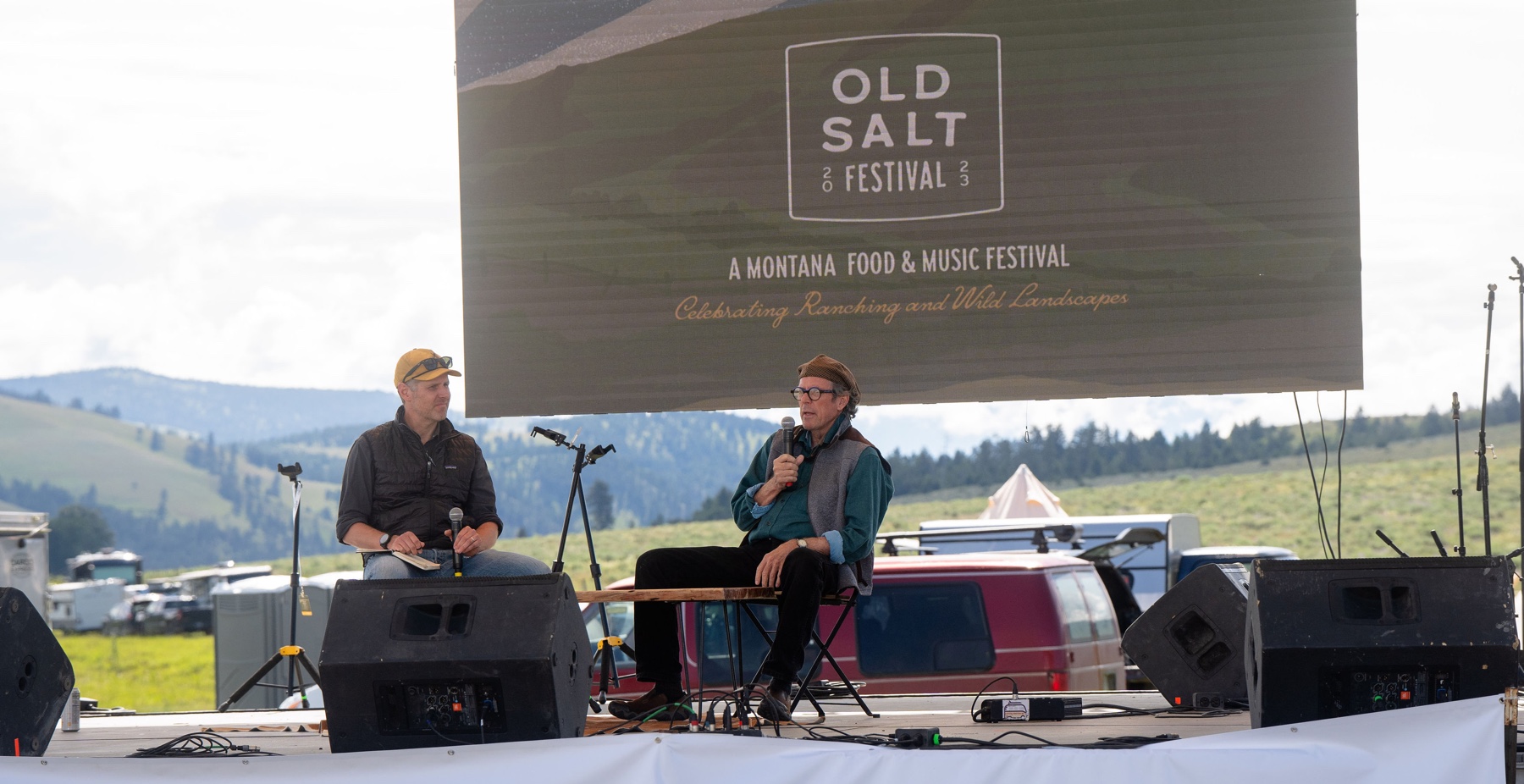
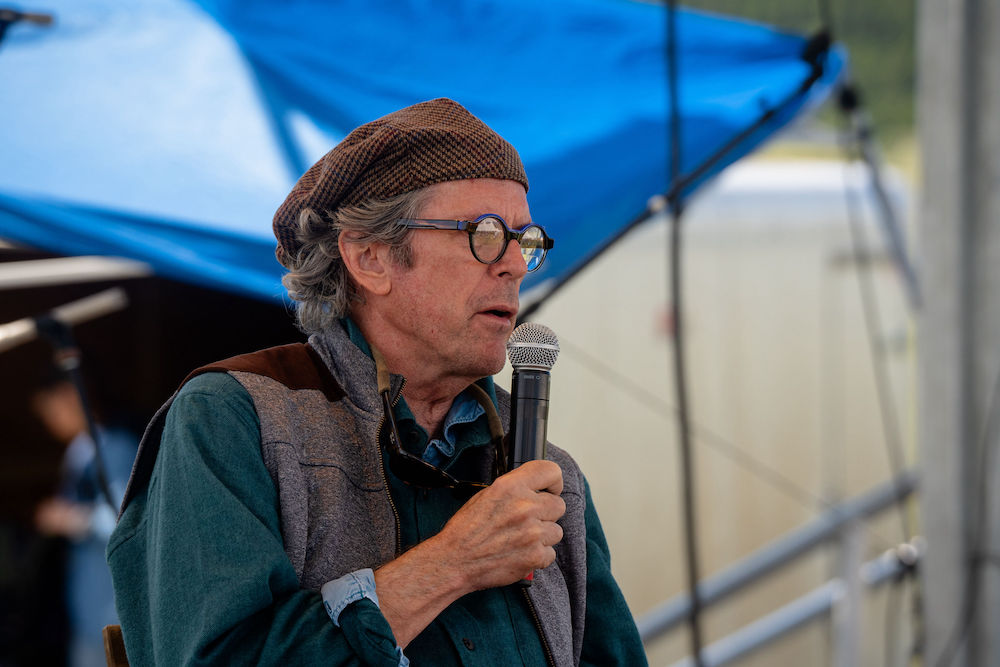
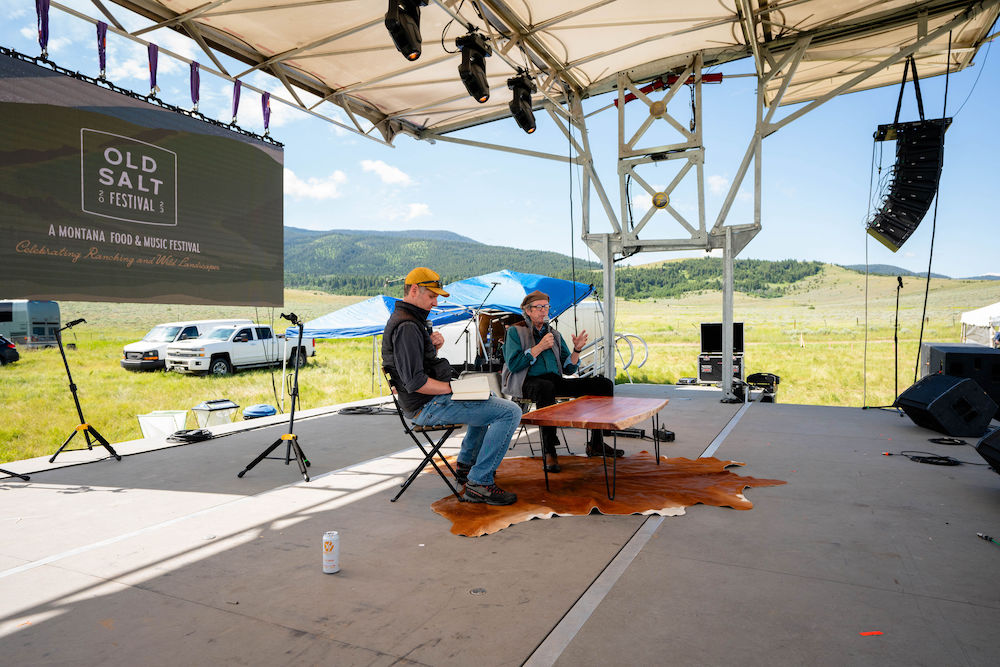
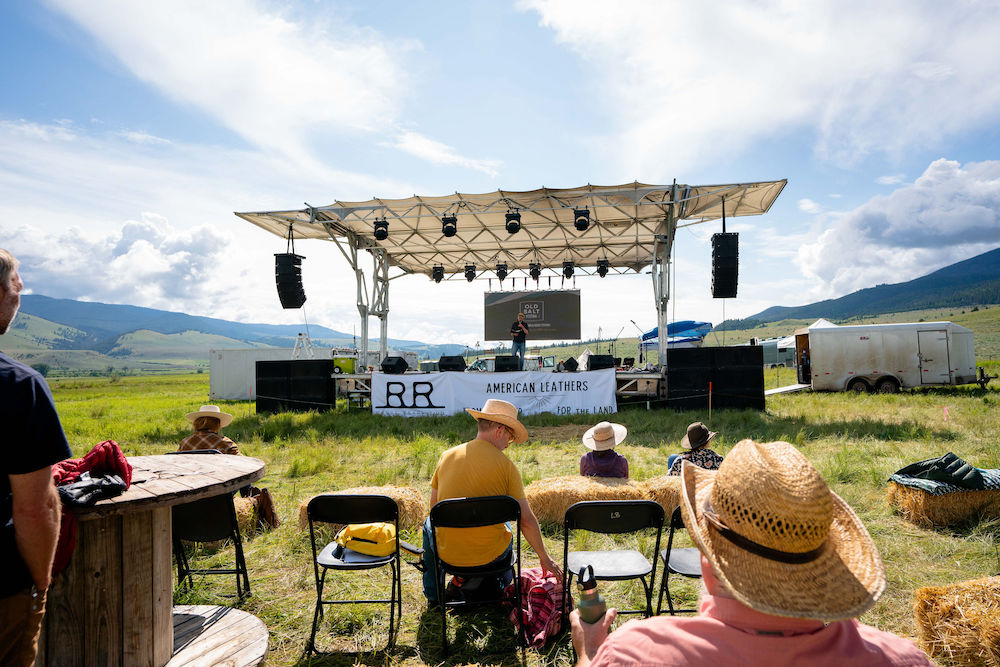
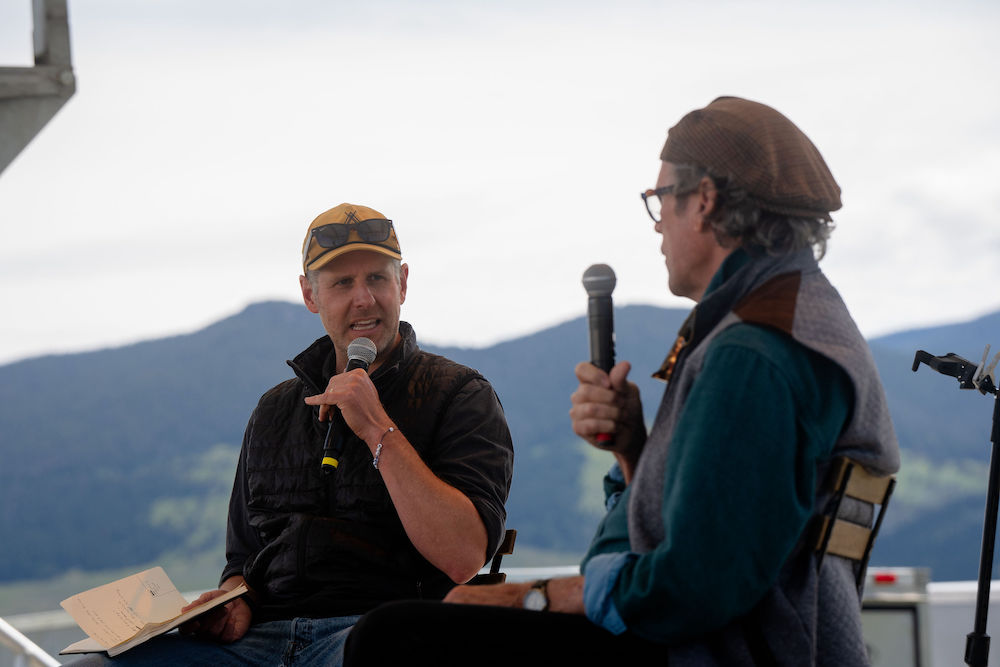
David James Duncan is one of those Western literary legends who needs no introduction to Mountain & Prairie listeners. But for those of you who may be new to the podcast or to Western literature, David is a renowned Montana novelist, activist, and flyfisherman. He’s the author of The River Why and The Brothers K, and his newest novel Sun House hits shelves today. David is also the author of countless nonfiction essays, many of which have been compiled in books such as My Story as Told by Water, River Teeth, and God Laughs & Plays.
This episode was recorded live at the first-annual Old Salt Festival, which was held on the Mannix Family Ranch in Helmville, Montana. The festival was a three-day celebration of land stewardship and wild places, and it featured live music, wood-fired cooking, and discussions about conservation, literature, and the power of place. Given that so much of David’s work as an author and activist is heavily influenced by his love of land, water, and wildlife, he brought a wise and thoughtful perspective to the Festival– a perspective that was greatly appreciated by everyone in attendance.
This episode is split into two parts– first is our on-stage conversation, which took place on Saturday morning, followed by two readings from his new novel Sun House, which took place that evening. In our conversation, I focused in on David’s life as a contemplative. We talk about his upbringing in the Pacific Northwest and his eventual move to Montana, which is the place he now considers his home. We discuss the importance of being able to hold two competing ideas in your mind at once, why he felt called to become an activist, why deep friendships are such an important part of his life, and the women who have served as mentors to him. We also talk about his 16-year process of writing Sun House, the difference between creating ideas versus receiving them, what gives David hope for the future, and much more.
The second part of the episode features two readings from Sun House, both of which were perfectly aligned with the spirit and mood of the Old Salt Festival. From where I was sitting in the crowd, I saw many people tearing up near the end of David’s reading, so I hope the power of his words and the place come through in this audio. It was an extremely special experience that I will not soon forget.
A huge thank you to David for his kindness, generosity, and for all of his contributions to the culture and conservation of the West. Thank you to the Old Salt Festival for giving me this opportunity to talk with David. And thank you for listening.
If you haven’t already, I’d encourage you to pick up a copy of Sun House– it’s available online or in your favorite local bookstore right now!
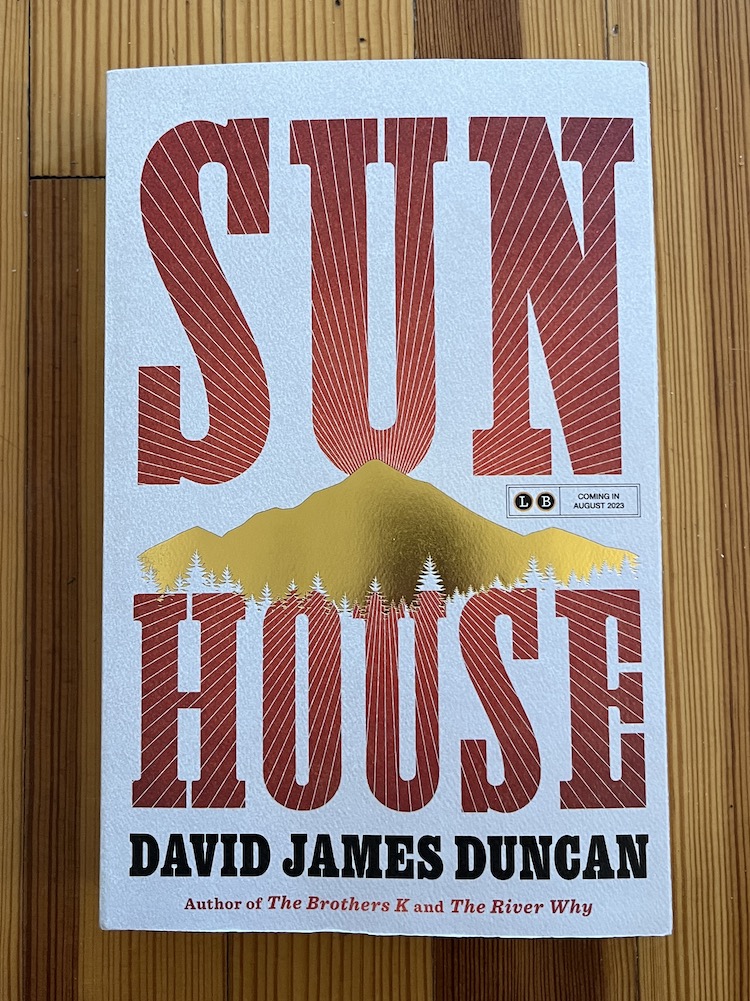
All photos by Anthony Pavkovich
LISTEN & DOWNLOAD:
Apple Podcasts
Spotify
Google Podcasts
… or wherever you get your podcasts!
—
RESOURCES:
Topics Discussed:
- 4:30 – Intros
- 7:30 – Discussing if Montana is home to David
- 10:30 – How David came to write about Montana
- 12:30 – How to hold two ideas in your head (the brutal US past and the landscape beauty we see presently)
- 14:55 – David’s transition from fiction to nonfiction writing
- 19:30 – Advice on how to take a stand
- 21:45 – David’s friends
- 26:30 – David’s women mentors
- 30:30 – Writing Sun House
- 34:30 – The benefits and challenges of writing something so emotional as Sun House
- 38:00 – Whether or not David is creating ideas or receiving them while writing
- 41:30 – What makes David feel good about the future
- 43:30 – Reading 1
- 58:15 – Reading 2
Information Referenced:
- David James Duncan
- Sun House by David James Duncan
- The River Why by David James Duncan
- The Brothers K by David James Duncan
- My Story as Told by Water by David James Duncan
- River Teeth by David James Duncan
- God Laughs & Plays by David James Duncan
- Old Salt Festival
- Cole Mannix
- “The Non-Sense of Place” – from My Story as Told by Water by David James Duncan
- The Meadow by James Galvin
- Steelhead
- Seventh-Day Adventist
- Livingston, MT
- Debra Magpie Earling
- Sherman Alexie
- Snake River
- Army Corp of Engineers
- Bonneville Power Administration
- 2,4-D
- 2,4,5-T
- Loma, MT
- David Whyte
- Paul Hawken
- Rick Bass
- Brian Doyle
- Wendell Berry
- Jane Hirshfield
- Trumpeter Swan
- Phil Gardner
- Lolo, MT
- Thomas Aquinas
- Beguines
- Cologne, France
- Michael Pietsch
- Hachette Book Group
- David James Duncan Talks About His New Novel, Sun House
- Trappist Monk
- Osprey
- Cedar Waxwing
- Swallows
- Nighthawks
- Coho salmon
Enjoy this episode? Then you might like these too:
- Doug Peacock – 50 Years of Fighting for the Grizzlies
- Douglas Brinkley – Exploring the Past to Find Inspiration for the Future
- Kate Mannix – A Legacy of Land Stewardship
- Rebuilding a Resilient, Regional Meat Supply Chain – LIVE at the Old Salt Festival
- David Gessner Returns – “A Traveler’s Guide to the End of the World”
- Bryce Andrews, Part 2 – “Holding Fire”
- Chris Dombrowski, Part 2 – “The River You Touch”
- Rick Ridgeway – Purpose-Driven Adventurer
- Cate Havstad-Casad, Part 2 – Building Businesses for the Greater Good
- Amber Smith – Creating Connection & Community
Visit the podcast page for a full, searchable list of episodes
Erik Glenn Returns – Leadership, Innovation, & Commitment to Conservation
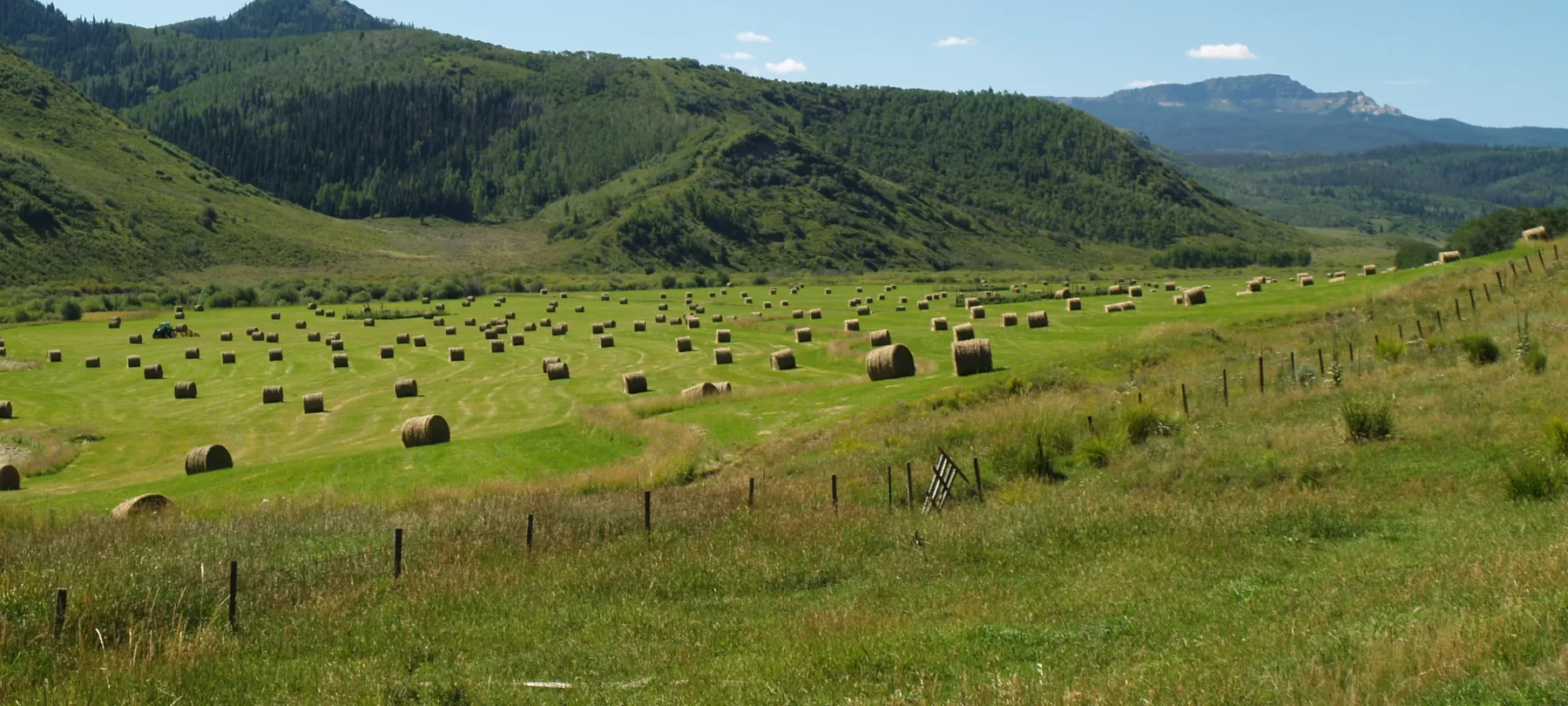
This is the 200th episode of Mountain & Prairie, so I decided to celebrate the milestone by bringing back the first-ever M&P guest, my good friend Erik Glenn. Erik is the Executive Director of the Colorado Cattlemen’s Agricultural Land Trust, a statewide conservation organization that protects Colorado’s agricultural land, heritage, and families for future generations by conserving working rural landscapes. Erik is also the President of the Partnership of Rangeland Trusts, a collection of nine ag-based, western land trusts who work together to “advocate for the conservation of working lands and western heritage for the benefit and wellbeing of future generations.”
When Erik and I spoke for episode number one all the way back in the spring of 2016, he was only about a year into his role as Executive Director. At that point, the organization had conserved just over 465,000 acres of land in Colorado. Fast forward seven and a half years to today, Erik and his team have added an additional 300,000 acres of conserved land, bringing the total to more than 765,000 acres. But most importantly, CCALT has served as a loyal and trusted partner for more than 400 agricultural families who are deeply committed to conserving Colorado’s western heritage and working landscapes.
I consider Erik a great friend and a wise mentor, and if not for his kindness, encouragement, and counsel, I doubt there would be a Mountain & Prairie, nor would I have ever worked in the conservation world. We sat down at his office in Lakewood and caught up on everything, including: how Erik spurs innovation without losing sight of the basics of land conservation; his thoughts on building culture and retaining the best team members; balancing his own intense work ethic with his desire set reasonable-yet-high expectations for his team; how having kids has changed him; the growth of PORT; his mentors; the evolution of the perception of conservation easements in the ag community; threats and opportunities; book recommendations; and much more.
A big thanks to Erik for letting me use him as a guinea pig for the first episode back in 2016, and for his willingness to join me again for episode 200. But more importantly, thanks to Erik for his leadership and commitment to conservation in Colorado, the West, and beyond. Hope you enjoy!
—
Photos courtesy of CCALT.
LISTEN & DOWNLOAD:
Apple Podcasts
Spotify
Google Podcasts
… or wherever you get your podcasts!
—
RESOURCES:
Topics Discussed:
- 3:30 – What the Colorado Cattlemen’s Agricultural Land Trust is
- 11:00 – How Erik balances innovation with the basics of conservation
- 15:30 – How Erik actually implements a culture in the workplace
- 23:30 – How Erik balances his work ethic with the desire to not set unreasonable work expectations for his team
- 29:30 – How having kids impacted Erik
- 35:45 – Discussing PORT
- 46:00 – Discussing whether or not good conservation tools have become good business tools for land owners
- 50:00 – Erik’s mentors
- 58:00 – The biggest threat and opportunity facing conservation
- 1:10:30 – Erik’s book recommendations
- 1:13:30 – Erik’s parting words
Information Referenced:
- Erik Glenn
- Colorado Cattlemen’s Agricultural Land Trust
- Colorado Cattlemen’s Association
- CSU study on conservation impacts on private lands
- PORT (Partnership of Rangeland Trusts
- Wyoming Stock Growers Land Trust
- Lynn Sherrod
- Montana Land Reliance
- South Dakota Agricultural Land Trust
- Ranchlands Trust of Kansas
- Nebraska Land Trust
- The Northwest Rangeland Trust
- California Rangeland Trust
- Chad Ellis of TALT
- Ken Mirr
- Chris West
- Larry Kueter
- Bill Silberstein
- Colorado College
- Colorado Transferable Conservation Easement Tax Credit
- Infrastructure Investment and Jobs Act
- Inflation Reduction Act
- Play to Win by A.G. Lafley and Roger L. Martin
- Vince Flynn
- Honestly Podcast with Bari Weiss
- Collective Illusions by Todd Rose
- Peter Thiel
- Call Sign Chaos by Jim Mattis
Enjoy this episode? Then you might like these too:
- Rebuilding a Resilient, Regional Meat Supply Chain – LIVE at the Old Salt Festival
- Matt Moorhead & Galen Guerrero-Murphy – Grasslands Conservation on the Southern High Plains
- Landscape-Scale Management in a Private Land State
- Cole Mannix – Building Community through Land Stewardship and Local Food
- Carlos Fernández, Part 2 – Creating Conservation Opportunities During Uncertain Times
- Francesca Claverie – A Borderlands Conservation Success Story
- Matt Pierson – Finding New Solutions for Food Insecurity
Visit the podcast page for a full, searchable list of episodes
SHED SESSION: Everything I Know About Landing a Job in the Conservation World
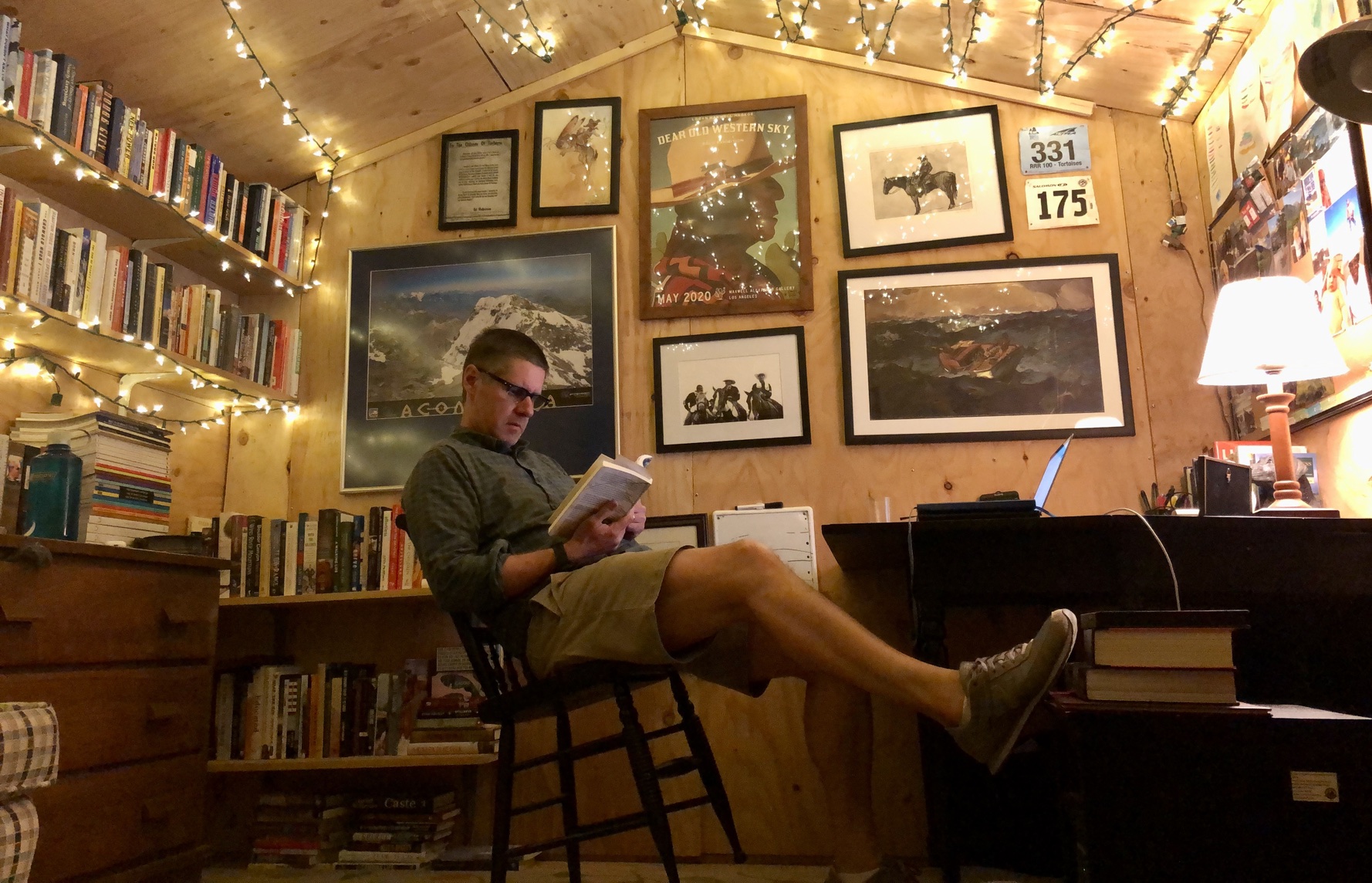
For many years now, listeners have been emailing me with lots of different versions of the same basic question:
“How do I get a job in the conservation world?”
Some of the inquiries come from college students or young professionals, while others come from folks who are deep into a specific career path but want to make a change. I’m always happy to receive these messages, and I’m flattered that anyone would think I have valuable advice to offer.
Unfortunately, I’ve never been able to provide what I believe to be a suitable answer, mainly because I could not do the question justice within the constraints of email or social media. And over the last few years, the volume of messages has reached a point that I simply cannot keep up with it all– so if you’ve reached out and I have not responded, my sincere apologies.
For (at least) the past three years, I’ve been considering answering this question in podcast form, thinking the episode could serve as a detailed resource for anyone who asked the question… and for those who will in the future. But I’ve procrastinated or rationalized reasons not to, mainly because I felt extremely uncomfortable about sitting by myself, blabbing my thoughts and ideas into a microphone. I never want to come off as a know-it-all or some kind of wannabe internet guru.
But the volume of the incoming messages kept increasing, so I finally decided to put my ego and self-consciousness aside and just answer the question in podcast form.
I wrote an eight-page outline that laid out everything I know about finding a job in the conservation world, then I sat down in The Shed and let ‘er rip. The result is a ridiculously long soliloquy in which I put it all out there. I’m calling it a Shed Session.
Please keep in mind that this episode is simply a recounting of my own personal and professional experience– it’s not some kind of one-size-fits-all “hack” that will lead you directly to your dream job. I’ve long said that I am the last person anyone should be asking for career advice, and there are certainly tons of people who are much more experienced and accomplished in conservation than I am.
But for those of you who did ask, this episode is for you. I lay it all out, including: my specific career path; my specific job in the conservation field; skills that are needed in the conservation sector; why relationship building is the most important skill; how I built a deep and broad network in Colorado despite only knowing one person when I moved here in 2010; why I think networks are the most valuable assets, what I looked for when I was hiring for conservation roles; what you should look for (and avoid) in conservation organizations; pros and cons of working in non-profit conservation, book recommendations, and more. Links to everything are in the episode notes.
Again, all of this is just my personal experience and my possibly weird ideas about doing purpose-driven work. For those of you who have reached out, I hope this adds some value. For everyone else, we’ll be back to the regularly scheduled interviews later this week.
Thanks for listening!
LISTEN & DOWNLOAD:
Apple Podcasts
Spotify
Google Podcasts
… or wherever you get your podcasts!
—
WATCH ON PATREON:
RESOURCES:
Topics Discussed:
- 3:12 – Intro, Questions, and Goals
- 10:20 – Disclaimers
- 13:58 – Discussion outline
- 15:45 – My career path
- 19:53 – My specific job in conservation
- 22:30 – How I built a network from scratch
- 40:01 – Advice on how to build a network
- 48:55 – What I looked for when I was hiring
- 54:39 – What you should look for in a conservation organization
- 1:05:51 – Book Recommendations
- 1:15:05 – Pros and cons
- 1:22:22 – Closing thoughts
Information Referenced:
- Watch this podcast on Patreon
- Wake Forest University
- Ed on the Mirr Ranch Group podcast (Part 1, Part 2, or full video)
- VIDEO: Bessemer Farmland Conservation Project
- Mirr Ranch Group
- Palmer Land Conservancy
- Colorado Cattlemen’s Agricultural Land Trust
- The Nature Conservancy
- Trust for Public Land
- The Conservation Fund
- Linchpin by Seth Godin
- Extreme Ownership by Jocko and Leif
- Boyd: The Fighter Pilot Who Changed the Art of War by Robert Coram
- Let My People Go Surfing by Chiounard
- How to Win Friends and Influence People by Dale Carnegie
- Deep Work, Digital Minimalism, and A World Without Email by Cal Newport
- Atomic Habits by James Clear
- Think Again and Originals by Adam Grant
- Endurance: Shackleton’s Incredible Voyage by Alfred Lansing
- For the Love of Land: Global Case Studies of Grazing in Nature’s Image by Jim Howell
- Losing Eden: An Environmental History of the American West by Sara Dant
- Blood and Thunder by Hampton Sides
- TED Talk: The way we think about charity is dead wrong | Dan Pallotta
To check out dozens of past episodes featuring conservationists from around the West, visit the podcast page and choose “conservationists” from the dropdown menu!
Lorelei Cloud – Solving Modern-Day Challenges with Ancient Tribal Wisdom
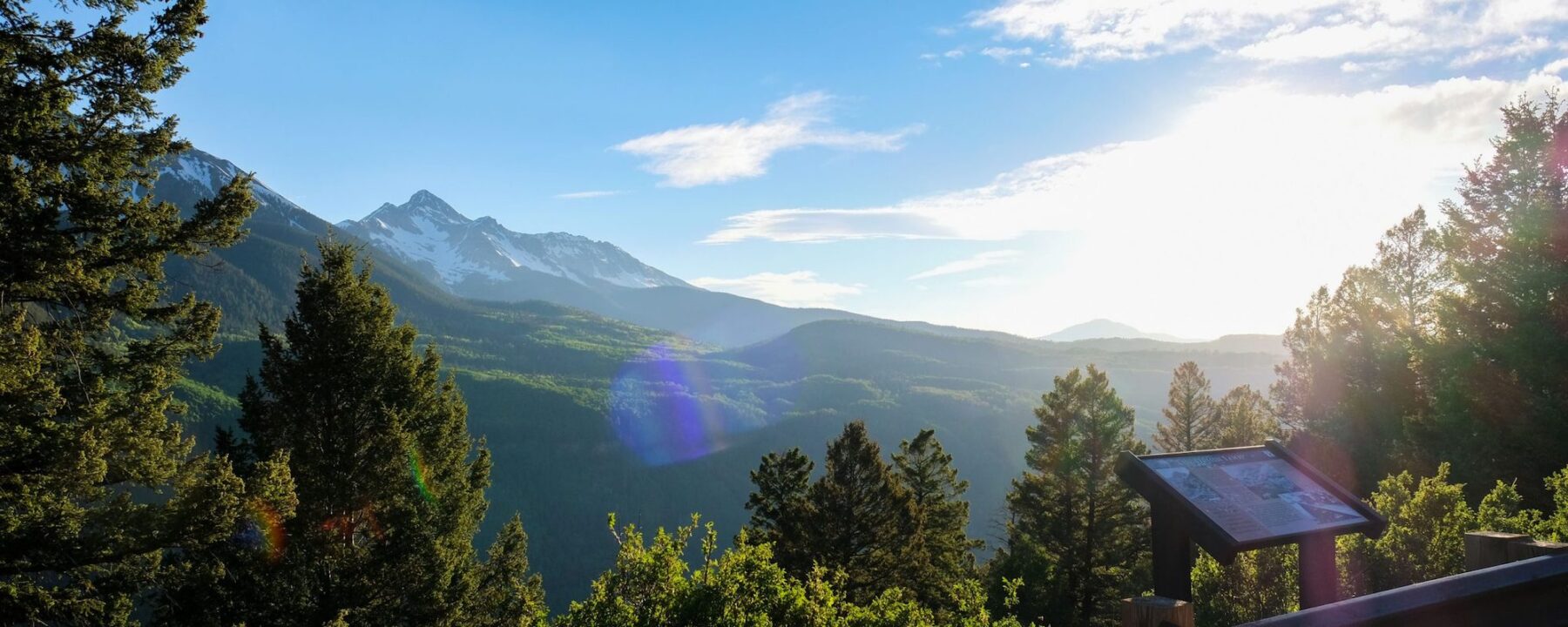
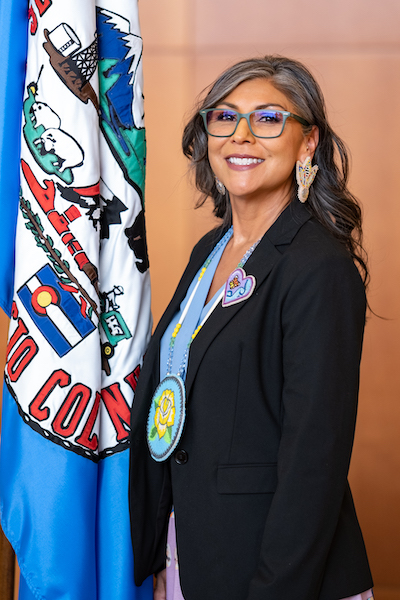
Photo: Jeremy Wade Shockley
Lorelei Cloud is a member of the Southern Ute Indian Tribe and currently serves as Vice Chairman of the Southern Ute Indian Tribal Council. Lorelei’s commitment to conservation, leadership development, and Ute language, traditions, and culture is evident by the staggering number of leadership roles she holds– she is Co-Chairman of the Indigenous Women’s Leadership Network, a Board Trustee for the Nature Conservancy, and serves on the Colorado River Basin’s Water & Tribes Initiative. Earlier this year, she was appointed by the Governor of Colorado to serve on the Colorado Water Conservation Board (“CWCB”), making her the first-ever Tribal member of the board.
Lorelei was born and raised on the Southern Ute Reservation, which is located in the far southwestern corner of Colorado. From the very beginning, water has played a central role in Lorelei’s life– much of her childhood was spent without running water and access to drinking water continues to be a challenge on the Reservation to this day. Much of Lorelei’s early career was spent working in various businesses, including banking and energy, all while being a mother and raising four children. In 2015, she was elected to the Tribal Council, which began this new phase of her life and career– a phase devoted to serving her Tribal Community, as well as the communities, landscapes, and natural resources of the American West.
I’ve been hearing such great things about Lorelei for years, so I was honored to have the opportunity to chat with her on the podcast. We enjoyed a wide-ranging conversation about her upbringing on the Southern Ute Reservation, the history of the Southern Ute Tribe, her recent appointment to the CWCB, why she decided to devote herself to public service, the goals of the Indigenous Women’s Leadership Network, her work with the Nature Conservancy, the need to elevate Tribal voices on issues of water and land conservation in the West and beyond, advice for aspiring leaders, her favorite books, ways the listeners can get involved and support the work of the Southern Ute Tribe, and much more.
Be sure to check out the episode notes for a full list of topics discussed and links to everything. A huge thanks to Lorelei for taking the time out of her busy schedule to talk with me and for her deep commitment to doing such impactful work in Colorado and beyond. Enjoy!
Header photo by Trennie Collins, Portrait by Jeremy Wade Shockley
LISTEN & DOWNLOAD:
Download on Apple Podcasts
Download on Spotify
Download on Google Podcasts
…or wherever you get your podcasts!
EPISODE PARTNER:
This episode is brought to you in partnership with the Colorado chapter of The Nature Conservancy. Guided by science and grounded by decades of collaborative partnerships, The Nature Conservancy has a long-standing legacy of achieving lasting results to create a world where nature and people thrive.
On the fourth Tuesday of every month throughout 2023, Mountain & Prairie will be delving into conversations with a wide range of The Nature Conservancy’s leaders, partners, collaborators, and stakeholders, highlighting the myriad of conservation challenges, opportunities, and solutions here in the American West. You can access all of the 2023 episodes here.
To learn more about The Nature Conservancy’s impactful work in Colorado and around the world, visit www.nature.org/colorado
RESOURCES:
Topics Discussed:
- 3:30 – Lorelei’s youth on the Southern Ute Reservation
- 6:15 – How Lorelei’s family would get water
- 8:15 – Lorelei’s childhood personality, school years, and early jobs
- 13:30 – Whether or not Lorelei wanted to stay on the reservation
- 15:30 – A brief Ute history
- 19:00 – How Lorelei’s appointment as the first Indigenous representative on the CWCB
- 22:15 – What the CWCB does
- 27:30 – How Lorelei decided to pursue public service
- 30:15 – About the Indigenous Women’s Leadership Network
- 34:00 – Lorelei’s advice for aspiring leaders
- 36:15 – Lorelei’s mentors
- 40:30 – About Lorelei’s role as Vice Chairman of the Southern Ute Tribe
- 43:00 – How Lorelei became involved with TNC and how she evaluates whether or not to pursue a professional opportunity
- 48:15 – Whether or not Deb Haaland has elevated Tribal voices through her work
- 52:00 – Lorelei’s book recommendations
- 55:00 – How you can help Lorelei’s work
- 56:00 – Lorelei’s words of wisdom
Information Referenced:
- Lorelei Cloud
- Southern Ute Indian Tribe
- Lorelei’s YouTube presentation
- CWCB – Colorado Water Conservation Board
- Lorelei’s appointment to the CWCB
- Leonard Birch
- Pino Nuche Purasa restaurant
- Ignacio, CO
- Indian Housing Authority
- Red Willow Production Company
- Ute Reservation reduction maps
- Ute history
- Ute Mountain Ute Tribe
- Ute Tribe
- Fort Duchesne, UT
- Meeker Massacre
- Jicarilla Apache Nation
- Palmer Land Conservancy
- Rebecca Mitchel
- San Miguel River
- Dolores River
- San Juan River
- Sports Betting Act
- Indigenous Women’s Leadership Network
- The Nature Conservancy, CO
- Water and Tribes Initiative
- Matt McKinney and Darryl Vigil
- Bidtah Becker
- Nora McDowell
- Fort Mojave Indian Tribe
- Crystal Tulley-Cordova
- Bureau of Indian Affairs
- Celene Hawkins
- Carlos Fernandez
- Melvin Baker, Chairman of the Southern Ute
- Colorado River Compact
- Deb Haaland
- Taylor Hawes
- The Fifth Discipline by Peter M. Senge
- White Horse by Erica T. Wurth
- M. Scott Momaday
Enjoy this episode? Then you might like these too:
- Shane Doyle – Reverence for the Past, Hope for the Future
- Marci McLean & Cora Neumann on COVID’s Impact on Native Communities
- Chris La Tray – Rediscovering His Past, Writing His Future
- Peter Stark – Tales of Adventure, Exploration, & Epic Battles
- Francesca Claverie – A Borderlands Conservation Success Story
- Betsy Gaines Quammen – A Fascinating History of Public Lands in the West
- Len Necefer – Indigenous Advocate
- Bryce Andrews, Part 2 – “Holding Fire”
Visit the podcast page for a full list of episodes where you can filter episodes by topic and guests’ vocations.
Christy Sing Robertson – On Grit, Hard Work, & Going All In
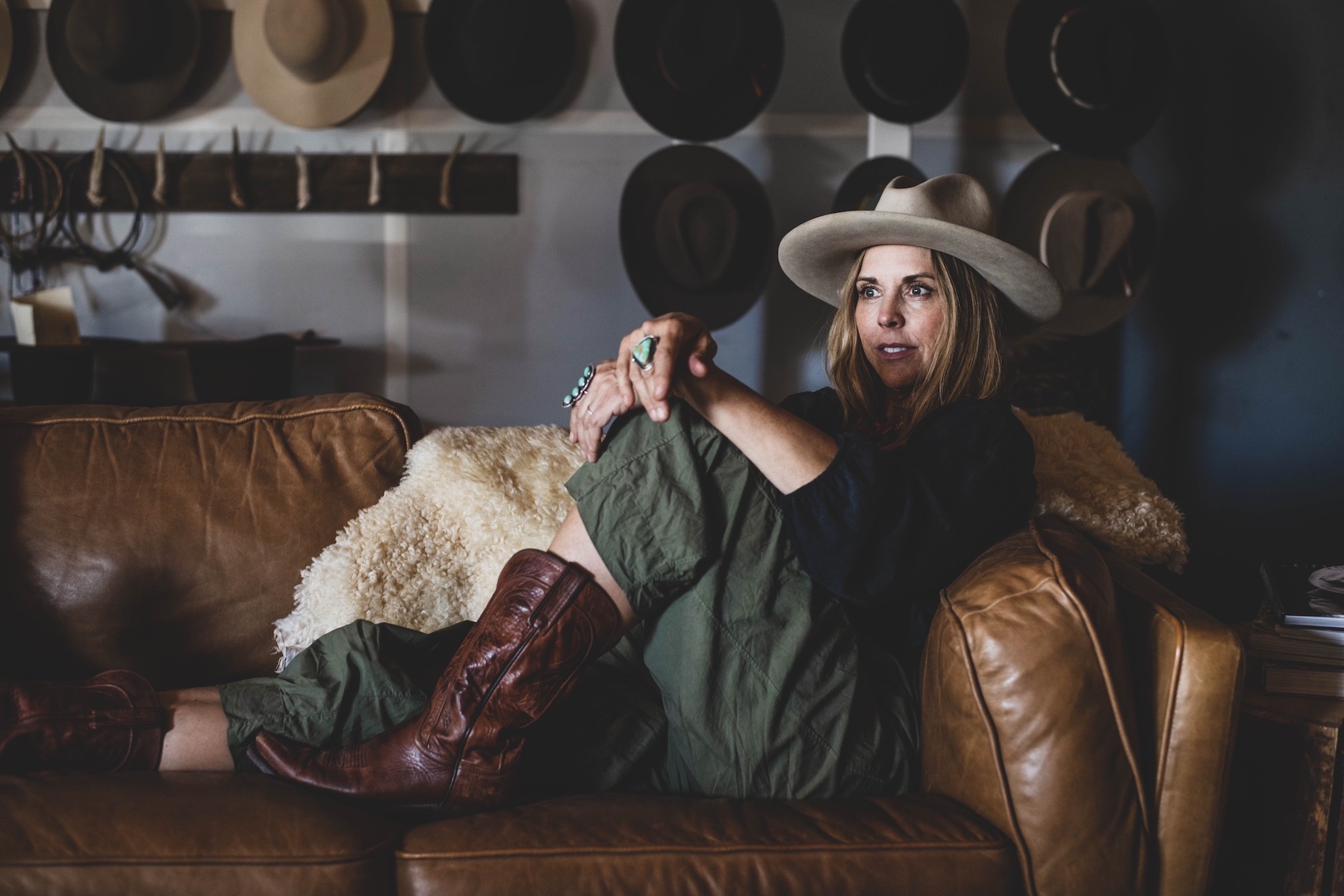
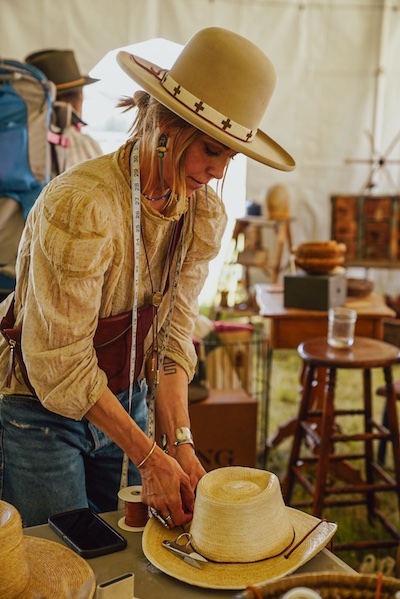
photo credit: Alexandra Rapadas Munger
Christy Sing Robertson is a hatmaker and the founder and owner of Sing Hat Company. Based in Jackson, Wyoming, Christy has evolved rather quickly from making a few hats for herself and several friends into becoming one of the most popular and sought-after hat makers in the West. Whether she’s hand-shaping palm leaf hats for hundreds of people at events such as last month’s Old Salt Festival or creating a custom felt hat for a 5th generation rancher or celebrity musician, Christy’s humility, curiosity, and commitment to the craft have allowed her to stand out in the crowded field of custom hatmakers.
Christy was born and raised in the Ozark Mountains of Arkansas, and she stayed there for the first half of her career, working as a high-performing salesperson in the insurance industry. But despite her success in the conventional and lucrative world of sales, she felt called to the West and decided to uproot her life and move to Jackson, Wyoming. Even though she moved to Jackson without knowing a soul, she managed to establish roots and build a fulfilling life centered around motherhood, hard work, and leading a thoughtful, intentional life. And along the way, just as she felt a calling to move to Wyoming, she felt called to make hats– so she went all-in. Today, Christy’s hats– and her long list of customers– demonstrate the amazing success she’s achieved in a relatively short amount of time.
I’ve been following Christy’s work for many years now, so I was thrilled to finally have a chance to chat with her on the podcast. Her story is amazingly inspiring and speaks to the importance of grit, risk-taking, working hard, humility, and trusting your gut. We covered a lot during our hour together, including: her upbringing in Arkansas and her success in the insurance business; the spiritual event that led her to move to Wyoming; how motherhood changed her; the focus and hustle required to make ends meet as a single mother; hunting big game for food; balancing the artistic side of hatmaking with the all-important need to earn a living; the increasing wealth inequality in Jackson; the importance of friendships with other artisans and makers; why imposter syndrome can be a good thing; techniques for keeping an even keel; favorite books; and much more.
If you haven’t checked out Christy’s website or followed her on social media, I recommend that you do– there are links in the episode notes to all of that and everything else we discussed. But in the meantime, I know you’ll enjoy this inspiring and motivational conversation with Christy Sing Robertson.
Photos courtesy of Sing Hat Company, header photo by Jamie Johnson.
LISTEN & DOWNLOAD:
Apple Podcasts
Spotify
Google Podcasts
… or wherever you get your podcasts!
—
RESOURCES:
Topics Discussed:
- 4:30 – Christy’s childhood
- 9:00 – Christy’s life post high school
- 10:45 – When making things clothes came into Christy’s life
- 12:00 – How Christy came to the Rocky Mountains, and how it changed her
- 23:00 – What Christy’s work and life was like after moving to Wyoming
- 25:15 – When hatmaking entered Christy’s life
- 27:30 – How Christy’s life changed after she had kids
- 32:00 – How Christy became self-sufficient in hunting
- 35:30 – Back to hats
- 39:00 – Whether or not Christy ever reconsidered her decision to make hats
- 40:55 – When Christy felt she was good at making hats
- 42:45 – How relationship building impacted Christy’s business
- 44:15 – How it went when Christy went full into making hats for a living
- 46:45 – How Christy manages the prices of Jackson, WY
- 50:15 – How Christy keeps an even keel
- 51:30 – How a community of makers has impacted Christy’s journey and career
- 55:15 – Reflecting on how Christy got where she is in her craft and career
- 58:45 – Christy’s advice for aspiring makers
- 1:01:15 – Christy’s vision for Sing Hats
- 1:05:00 – Christy’s book recommendations
- 1:07:00 – Christy’s parting words of wisdom
Information Referenced:
- Christy Sing
- Sing Hat Company (Instagram)
- Old Salt Festival
- Russellville, AR
- Ozark Mountains
- Mount Magazine, AR
- Jackson, WY
- Lost Creek Ranch
- Virginia Beach, VA
- Alpine, WY
- Idaho Falls, ID
- Adam Gall
- Billionaire Wilderness by Justin Farrell
- Heather Hansman
- Powder Days by Heather Hansman
- Pema Chödrön
- Jillian Lukiwski
- Noisy Plume
- Kate Mannix
- Think Again by Adam Grant
- Kathy Sever
- Dare to Lead by Brené Brown
- The War of Art by Steven Pressfield
- Atomic Habits by James Clear
- Chop Wood, Carry Water by Joshua Medcalf
- Wintering by Katherine May
Enjoy this episode? Then you might like these too:
- Jessica Ilalaole – Creating Home in the High Desert
- Cate Havstad-Casad, Part 2 – Building Businesses for the Greater Good
- Jessica Lewis – Doing More With Less
- Morgan Irons – Finding Her Muse
- Anna Brones – Committed to Creativity
- Iris Gardner – Living with Intention
- Nicole Morgenthau – Curiosity & Creativity
- Riddy Arman – Artistic Authenticity
- Kathie Sever – Chainstitching, Craftsmanship, and Cosmic Western Wear
- Jillian Lukiwski – Art and Adventure in the American West
- Live in Bozeman!
Visit the podcast page for a full, searchable list of episodes
Rebuilding a Resilient, Regional Meat Supply Chain – LIVE at the Old Salt Festival
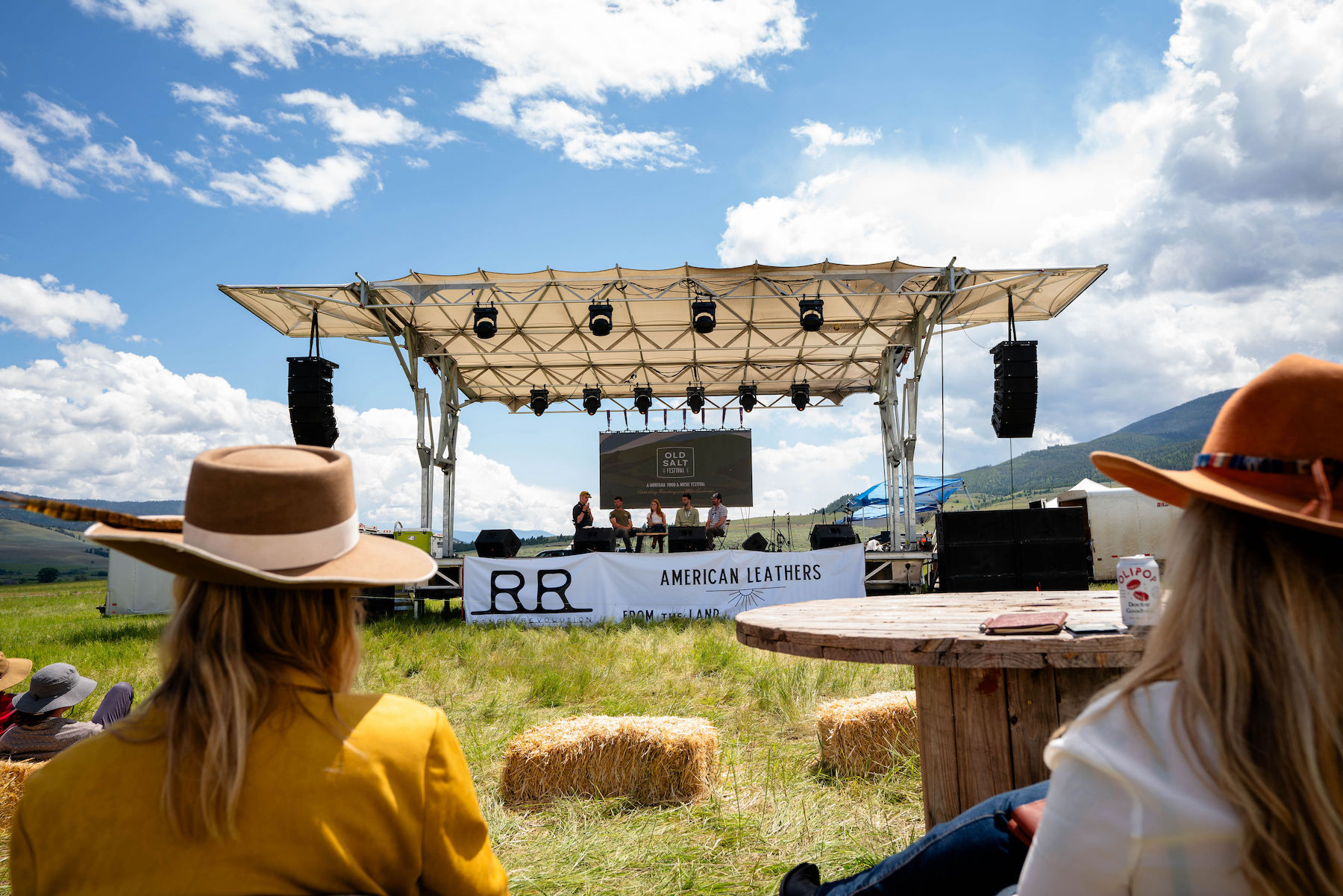
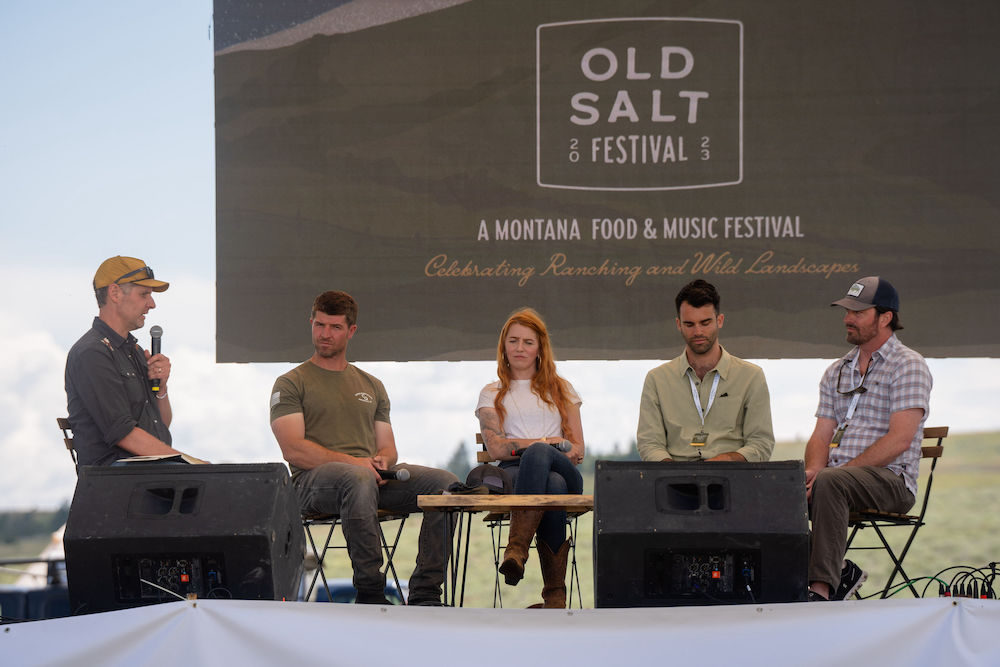
This is a special live episode that was recorded in late June 2023 at the first-ever Old Salt Festival, which was held on the Mannix Family Ranch in Helmville, Montana. The Old Salt Festival is a three-day celebration of ranching, land stewardship, and wild places that features live Western music, wood-fired cooking, products from some of the West’s most renowned artisans, readings and interviews with Western authors and poets, and in-depth discussions about conservation and land stewardship. The festival was a resounding success, so I’m thrilled to share one of the many conversations with you here.
The episode is a panel discussion titled Rebuilding a Resilient, Regional Meat Supply Chain, featuring several of the West’s leading voices in sustainable meat production and regenerative agriculture. In order of their appearance in the episode, you’ll hear from Cole Mannix, President of the Old Salt Co-op; Kate Kavanaugh, owner of Western Daughters Butcher Shoppe and host of the Mind, Body, and Soil Podcast; Dan Miller, Founder of Steward; and Wyatt Nelson, President of Wild West Local Foods. As you’ll hear, each panelist is deeply immersed in a different aspect of the meat production supply chain, and each of them brings a unique and wise perspective to the challenges facing producers and small businesses involved in meat production.
Many of you may already know, but the Old Salt Festival is a part of the Old Salt Co-op, a new, purpose-driven company that “provides meat raised with integrity from Montana landscapes its customers know and care about.” The Old Salt Co-op is working to rebuild the meat business in Montana, creating a sustainable business model that is beneficial to local ranchers, local consumers, and local economies– all while responsibly and effectively stewarding the lands that support agriculture. Rebuilding Montana’s meat supply chain is no small feat, but with smart, purpose-driven people like Cole, Kate, Dan, and Wyatt working to find solutions, I think you’ll be both inspired and encouraged.
To learn more about the Old Salt Co-op, you can go back to my first podcast conversion with Cole from February of 2023. And be on the lookout for another live Old Salt Festival episode, which I’ll be releasing on August 8, 2023– that one will feature a conversation with famed western author David James Duncan followed by a reading from his new novel Sun House.
A huge thanks to Cole and the Old Salt team for inviting me to the Festival, and a huge thanks to the Mannix Family for sharing their stunning ranch with all of us. Thanks to Cole, Kate, Dan, and Wyatt for sharing their wisdom. And last but definitely not least, thanks to the one and only, always hilarious and energetic Bex Frucht for the amazing intro. Hope you enjoy.
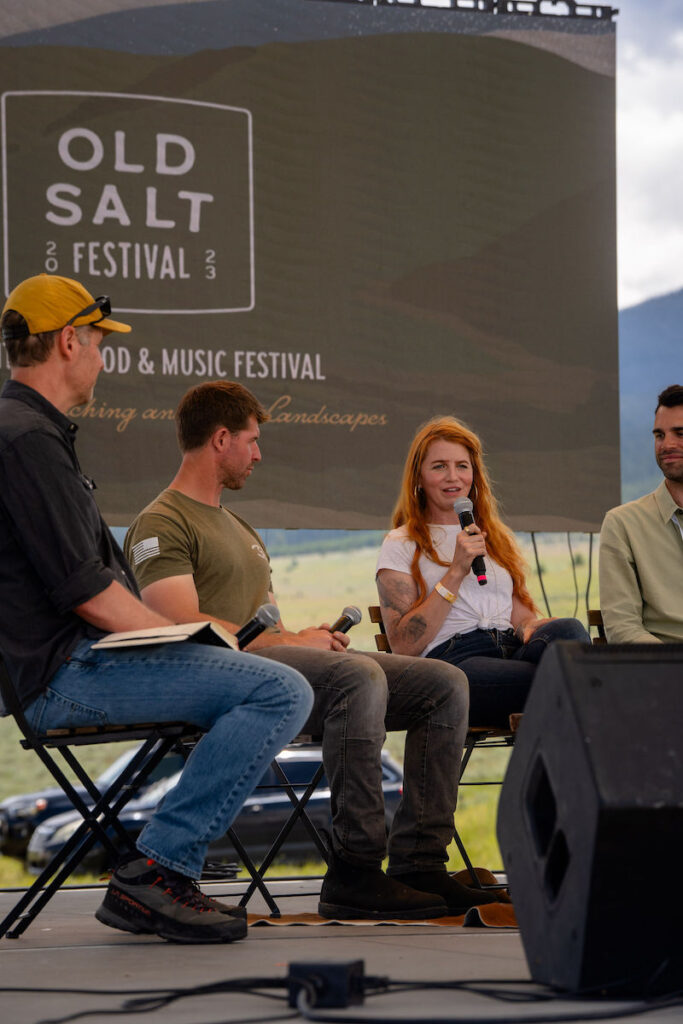
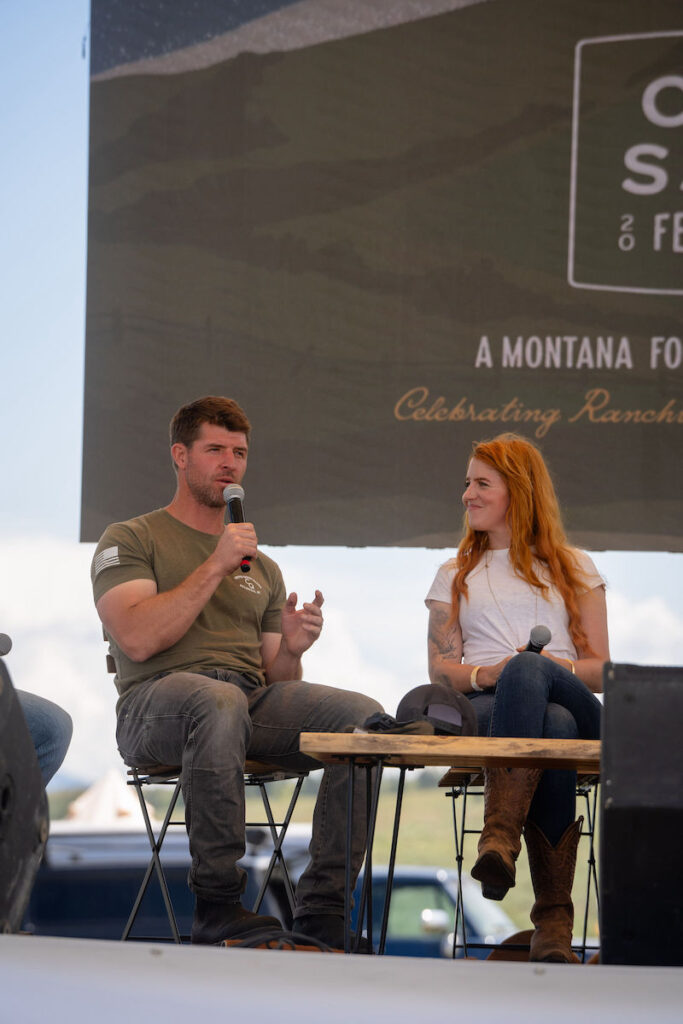
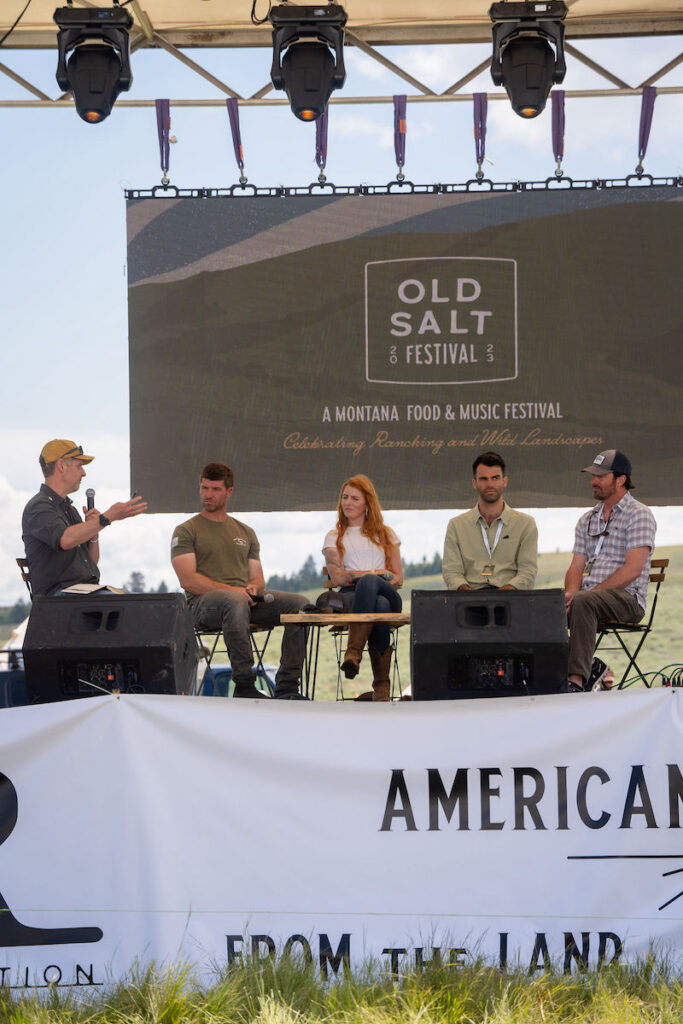
Photos by Anthony Pavkovich for the Old Salt Festival
LISTEN & DOWNLOAD:
Apple Podcasts
Spotify
Google Podcasts
… or wherever you get your podcasts!
—
RESOURCES:
Topics Discussed:
- 2:45 – Introductions
- 6:15 – The challenge and opportunity that Cole saw, leading to the development of Old Salt Co-op
- 9:00 – What Kate sees as major potential challenges for Old Salt Co-op going forward
- 12:15 – What attracted Dan to finance regenerative agriculture, especially given that industry’s tight margins
- 15:00 – Wyatt’s introduction, as well as the roadblocks that Wyatt sees to a more resilient food system from the distribution side of things
- 17:15 – How the panel members go about getting people’s attention
- 24:45 – The work Cole’s family and neighbors have done to protect the local landscape, as well as trends in young people getting involved with agriculture
- 32:15 – What Kate is seeing on the retail side of meat production, and how to address it
- 38:15 – What Old Salt Co-op is working on right now
- 41:15 – What we can do that would help build a resilient meat and food system
Information Referenced:
- Old Salt Festival
- Roadhouse
- Cole Mannix
- Mannix Family Ranch
- Old Salt Co-op
- Kate Kavanaugh
- Western Daughters Butcher Shop
- Mind, Body, and Soil Podcast
- Dan Miller
- Steward
- J-Bar-L Ranch
- LF Ranch
- Sieben Livestock Company
- Andrew Mace
- Ross Eickenbary
- Spike Gjerde
- Woodberry Kitchen
- Matt Skoglund
- Wyatt Nelson
- Helena, MT
- Chesapeake Bay
- Arkansas River
- David James Duncan
- Wes Jackson
Enjoy this episode? Then you might like these too:
- Jesse Griffiths – Humility, Curiosity, and Creative Cuisine
- Taylor Hawes – Innovative Conservation in the Colorado River Basin
- Cate Havstad-Casad, Part 2 – Building Businesses for the Greater Good
- Bryce Andrews, Part 2 – “Holding Fire”
- Chris Dombrowski, Part 2 – “The River You Touch”
- Amber Smith – Creating Connection & Community
- Kate Mannix – A Legacy of Land Stewardship
Visit the podcast page for a full, searchable list of episodes
Rob Addington – A Deep Dive into Western Wildfires and Forest Health
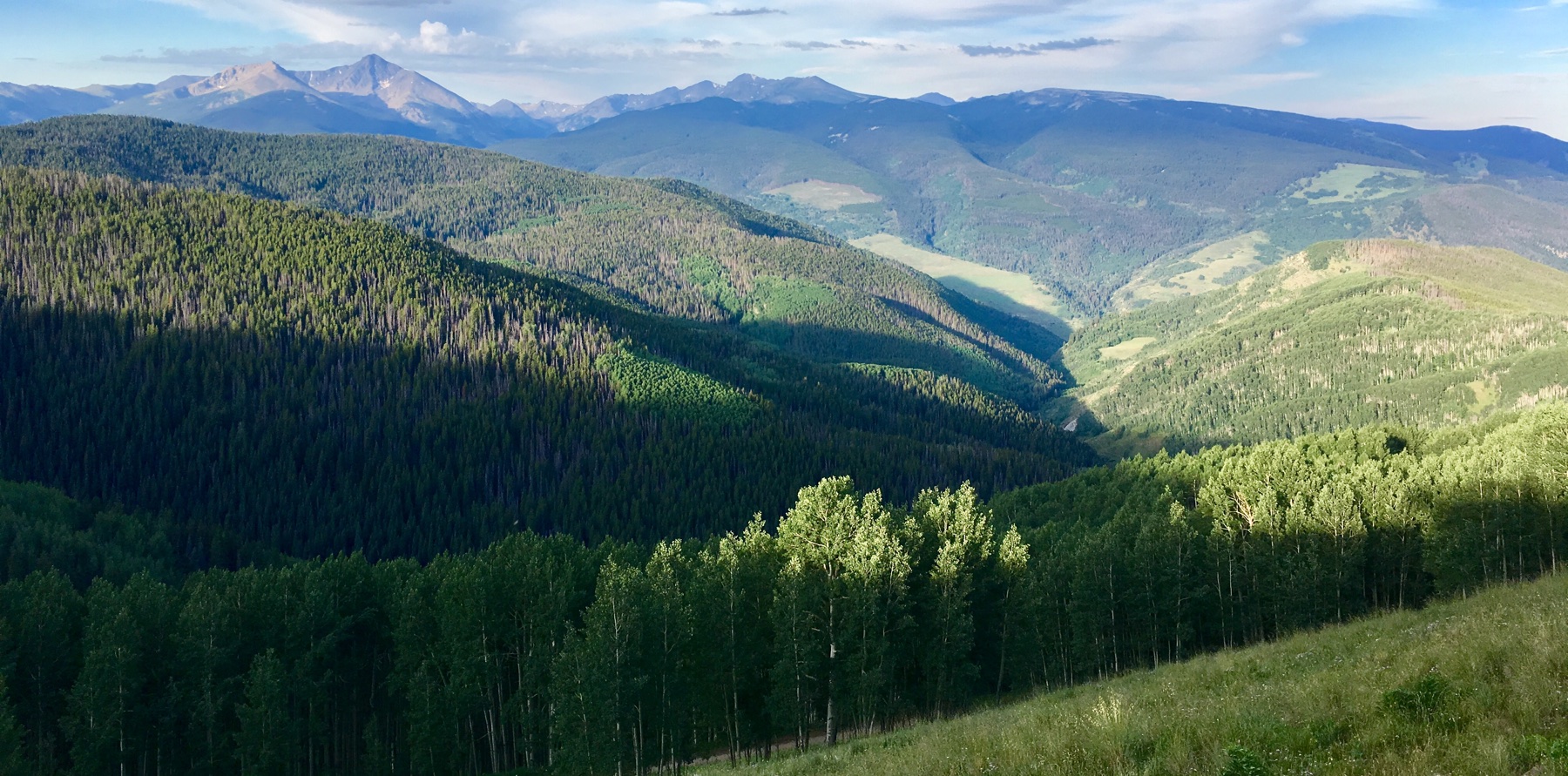
Rob Addington is the Director of the Forest and Fire Program with The Nature Conservancy in Colorado. He and his team are focused on increasing the pace and scale of forest restoration in Colorado to reduce hazardous fuels and promote landscape resilience to natural disturbances such as wildfire as well as climate change.
You don’t have to live in the West to know that the region has been battling ongoing drought, historically large and intense wildfires, and various forms of insect-induced forest devastation. Over the past few years here in Colorado, we’ve experienced some of the most destructive wildfires in recorded history, and the pine beetle infestation continues to be a source of serious and increasing concern. And Colorado is obviously not alone– there are similar stories of struggling forests throughout all of the Western states.
While the current conditions may be dire, you’ll be happy to know that Rob and his team at The Nature Conservancy are working extremely hard to find collaborative, creative, and effective solutions to the challenges facing our forests here in the West. By partnering with government agencies, Tribal nations, private landowners, various non-profits, and more, TNC has been leading and implementing some of the most innovative forest health work in the country– work that is creating more resilient, healthy landscapes across hundreds of thousands of acres.
For all the listeners who have been asking for a wildfire and forest health-focused episode, this one is for you. I met up with Rob at the TNC office in Boulder, and he was kind enough to educate me on both the big picture and finer details of all things forest health. You can check out the notes for a full list of everything we discussed, but a few of the topics include: The infamous 2020 wildfire season and the outlook for 2023, the history of land management and how that has affected wildfires, pine beetles, wildfire’s effects on water quality, how beavers can play a role in fire mitigation, some specific success stories, business solutions for forest health, the all-important focus on partnerships, post-fire land management strategies, good books, and much more. Be sure to visit the episode webpage for links to everything, including TNC’s exciting new Western Division Forest and Fire Initiative.
A huge thanks to Rob for taking the time to answer all my questions and another huge thanks to TNC for leading all of this important work. I hope you enjoy!
Headshot courtesy of The Nature Conservancy
LISTEN & DOWNLOAD:
Download on Apple Podcasts
Download on Spotify
Download on Google Podcasts
…or wherever you get your podcasts!
EPISODE PARTNER:
This episode is brought to you in partnership with the Colorado chapter of The Nature Conservancy. Guided by science and grounded by decades of collaborative partnerships, The Nature Conservancy has a long-standing legacy of achieving lasting results to create a world where nature and people thrive.
On the fourth Tuesday of every month throughout 2023, Mountain & Prairie will be delving into conversations with a wide range of The Nature Conservancy’s leaders, partners, collaborators, and stakeholders, highlighting the myriad of conservation challenges, opportunities, and solutions here in the American West. You can access all of the 2023 episodes here.
To learn more about The Nature Conservancy’s impactful work in Colorado and around the world, visit www.nature.org/colorado
RESOURCES:
Topics Discussed:
- 3:30 – Discussing the fire season of 2020
- 9:45 – The outlook for the fire season of 2023
- 12:00 – Discussing the variability in Colorado’s recent fire seasons
- 14:45 – The causes for Colorado’s changing fire seasons
- 17:30 – Exploring, specifically, the role of historic land management and how it impacts fire behavior
- 20:30 – Discussing pine beetles
- 26:00 – How the forest regime progresses in beetle-killed stands without fire, and how changing fire behavior is impacting the forest regime
- 32:00 – How fires impact water
- 39:15 – Discussing potential solution strategies for Colorado’s fire situation
- 42:00 – Discussing the importance of managing partnerships in this work
- 44:45 – A specific, fire-related project that Rob is happy about
- 47:15 – Exploring the potential of a for-profit business that is incentivized to thin out fire-prone forests
- 50:30 – Beavers’ role in wildfire prevention
- 54:30 – Rob’s favorite period of history to read about
- 56:30 – Management strategies for an area that has been wiped clean by fire
- 1:00:30 – Rob’s book recommendations
Information Referenced:
- Rob Addington
- Monsoon
- Cameron Peak Fire
- East Troublesome Fire
- Calwood Fire
- Grizzly Creek Fire
- Pine Gulch Fire
- Division of Fire Prevention and Control
- Hayman Fire
- High Park Fire
- Waldo Canyon Fire
- Black Forest Fire
- Ponderosa Pine
- The Big Burn by Timothy Egan
- Gifford Pinchot
- Ten o’clock Rule
- Lodgepole Pine
- Spruce-Fir forest
- Grand County, CO
- Winter Park
- Red Phase of beetle kill (and others)
- Forest Canopy Bulk Density
- Incident Management Teams
- Rocky Mountain Research Station
- Aspen trees
- Boulder, CO
- Taylor Hawes
- Buffalo Creek Fire
- Strontia Springs Reservoir
- Cheesman Reservoir
- Fort Collins, CO
- Cache La Poudre River
- Big Thompson River
- Bipartisan Infrastructure Act
- Inflation Reduction Act
- USFS Wildfire Crisis Strategy
- Upper Monument Creek Landscape Restoration Initiative
- South Platte River
- Northern Colorado Fireshed Collaborative
- Pike National Forest
- Jefferson County Open Space
- Denver Mountain Parks
- Conifer, CO
- Bailey, CO
- Biochar
- Mass timber/Cross-laminated timber
- Emily Fairfax
- Beaver dam analogs
- Eager by Ben Goldfarb
- Salt by Mark Kurlansky
- Cod by Mark Kurlansky
- Astoria by Peter Stark
- Peter Stark
- Oregon State University
- Katherine Schloegel
- Colorado Forest Restoration Institute
- Ecological Restoration Institute (NAU)
- Northern Arizona University
- Young Men and Fire by Norman Mclean
- Mann Gulch Tragedy
- Chief Left Hand by Margaret Coel
- Governor Evans
- Colonel Chivington
- Sand Creek Massacre
- Western Division Forest and Fire Initiative
Enjoy this episode? Then you might like these too:
- Russ Schnitzer – A Life Devoted to Western Landscapes
- Robert Krapfel – On Living A Purpose-Driven Life
- Mike Phillips – Audacious Goals, Relentless Action
- Daniela Ibarra-Howell – Healing the Land Holistically
- Shane Doyle – Reverence for the Past, Hope for the Future
- Land Tawney – Energetic & Optimistic
- Francesca Claverie – A Borderlands Conservation Success Story
- Taylor Hawes – Innovative Conservation in the Colorado River Basin
Visit the podcast page for a full list of episodes where you can filter episodes by topic and guests’ vocations.
David Gessner Returns – “A Traveler’s Guide to the End of the World”
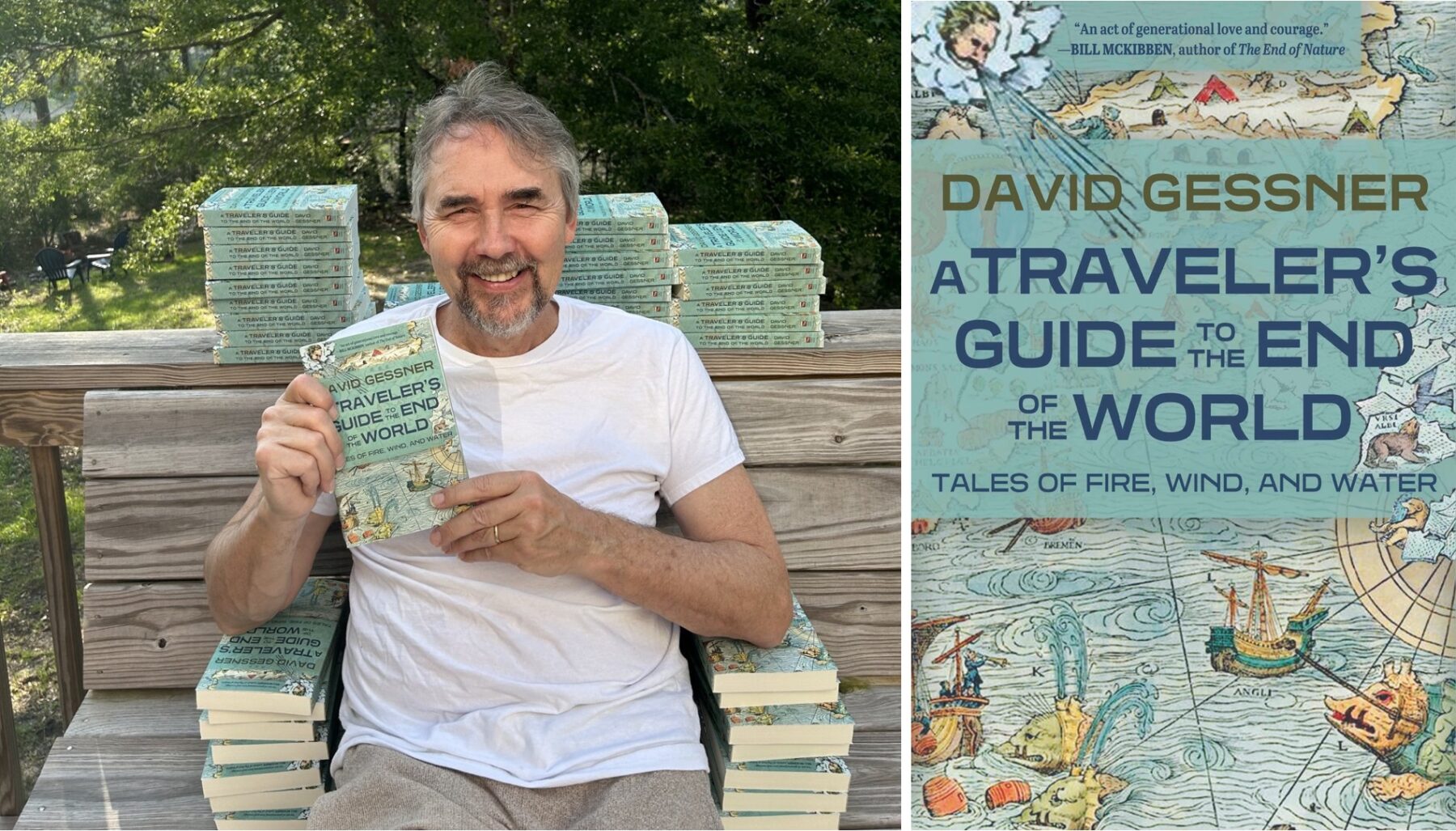
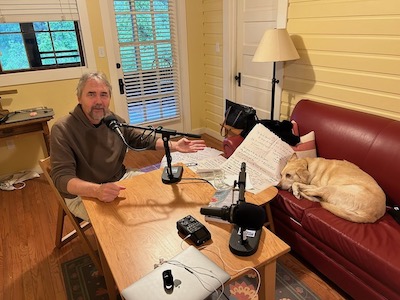
David Gessner is no stranger to Mountain & Prairie listeners– he’s joined me for many episodes and is the author of many of my favorite books, including All the Wild That Remains, Leave It As It Is, My Green Manifesto, and more. His newest book is A Traveler’s Guide to the End of the World: Tales of Fire, Wind, and Water, which once again showcases David’s unique ability to combine humor, travel, and memoir in service of connecting the reader with the natural world.
A Traveler’s Guide to the End of the World chronicles David’s journeys around the country, where he finds himself in the middle of an unsettling number of climate disasters– from historic forest fires in the American West to hurricanes on North Carolina’s Outer Banks. Eschewing the ubiquitous facts, figures, and policy debates that often dominate climate-focused books, David does what he does best: he tells stories. Specifically, he tells impactful, insightful stories from the front lines of the climate crisis– stories that will stick with the reader for years to come.
As has been our tradition for several years now, David and I met up in Boulder, Colorado, where he and his family visit each summer. We obviously talk a lot about the book, but as is the case whenever we get together, the conversation flows into many fun and unexpected topics. You can check out the episode notes for a full list of everything we discussed, but some of the topics include: David’s recent writing workshop at the Zapata Ranch with his friend, author Craig Childs, the importance of momentum and dailiness in writing, how David’s daughter was the influence for the new book, optimism vs pessimism when reporting current events, thoughts on death and loss, David’s good friend, the late Mark Spitzer, the next generation of conservation-minded writers, some book recommendations, the idea of being a “polygamist of place,” and much more.
I’m always happy to have the opportunity to sit down with David for a conversation, so I greatly appreciate his carving out the time. I hope you can check out A Traveler’s Guide to the End of the World, and I hope you enjoy this episode.
Photos courtesy of David Gessner
LISTEN & DOWNLOAD:
Apple Podcasts
Spotify
Google Podcasts
… or wherever you get your podcasts!
—
RESOURCES:
Topics Discussed:
- 3:15 – David’s Zapata Ranch retreat
- 6:45 – Discussing the power of “dailiness”
- 7:45 – Whether or not teaching helped in David’s practice of writing
- 9:00 – How many books David has written in the past 18 months
- 10:30 – How David knows when an idea becomes a book in his mind
- 16:45 – David’s goal for A Traveler’s Guide to the End of the World, including how he balanced stories with statistics and humor with the weight of the subject
- 20:45 – Evaluating how the news of the West is reported
- 27:45 – What David means when he identifies as a “polygamist of place”
- 33:15 – David’s relationship with Mark Spitzer
- 39:30 – How David feels about entering a stage in life where his friends are beginning to pass away
- 43:45 – Discussing David’s daughter, climate change, and how they figure into A Traveler’s Guide
- 50:30 – David discussing the various tools he would like to use to face climate change
- 52:45 – Who David thinks will continue the work of the Doug Peacocks of the world
- 56:45 – Discussing the political alignment affiliated with climate change work
- 1:01:30 – David’s book recommendations
Information Referenced:
- A Traveler’s Guide to the End of the World by David Gessner
- Leave It As It Is: A Journey Through Theodore Roosevelt’s American Wilderness by David Gessner
- All the Wild That Remains by David Gessner
- Return of the Osprey by David Gessner
- The Tarball Chronicles by David Gessner
- Sick of Nature by David Gessner
- Chautauqua Park
- Zapata Ranch
- Craig Childs
- Andre Hamm
- Samuel Johnson
- Henry David Thoreau
- Jaimie Raskin
- Boulder, CO
- Ken Sleight
- Seldom Seen Smith
- The Monkey Wrench Gang by Edward Abbey
- Pack Creek Fire
- Pack Creek
- Quonset Hut
- Paradise, CA
- Flagstaff, AZ
- Bill McKibben
- The End of Nature by Bill McKibben
- The Ministry for the Future by Kim Stanley Robinson
- Winston Churchill
- Maya Angelou
- Yellowstone to Yukon Conservation Initiative
- Leadville, CO
- Wallace Stegner
- Ryan Lambert
- Ducks Unlimited
- Tarboro, NC
- Morehead City, NC
- Atlantic Beach, NC
- Wendell Berry
- Cape Cod
- Worcester, MA
- University of North Carolina Wilmington
- Wilmington, NC
- Bears Ears National Monument
- Mark Spitzer
- Monster Fishing by Mark Spitzer
- Lea Graham
- Tom Wolfe
- Beatnik
- The New Yorker
- Shakespeare and Company
- Gar
- Brad Watson
- Phillip Gerard
- John Denver
- Rocky Mountain High by John Denver
- Annie’s Song by John Denver
- Mt. Pinatubo
- Orrin Pilkey
- Hurricane Florence
- Hurricane Dorian
- Mancos, CO
- Durango, CO
- Doug Peacock
- Gary Snyder
- Orion Magazine
- Camille Dungy
- Drew Lanham
- Ed’s interview with Dr. Drew Lanham
- Joe Wilkins
- Orion Magazine’s 2023 Environmental Writers’ Workshop
- Ginger Strand
- Kathryn Miles
- Zack Podmore
- Salt Lake Tribune
- San Juan County, UT
- ZZ Top
- Katherine Hayhoe
- Lancet Study of youth climate anxiety across the world
- Vernal, UT
- The Overstory by Richard Powers
- Braiding Sweetgrass by Robin Wall Kimmerer
- True West by Betsy Gaines Quammen
- Bernard DeVoto
- Nate Schweber
Enjoy this episode? Then you might like these too:
- Betsy Gaines Quammen – A Fascinating History of Public Lands in the West
- Nate Schweber – A Forgotten Chapter of American Conservation
- Douglas Brinkley – Exploring the Past to Find Inspiration for the Future
- Taylor Hawes – Innovative Conservation in the Colorado River Basin
- Doug Peacock – 50 Years of Fighting for the Grizzlies
- Ryan Busse – Standing His Ground
Visit the podcast page for a full, searchable list of episodes
Doug Peacock – 50 Years of Fighting for the Grizzlies
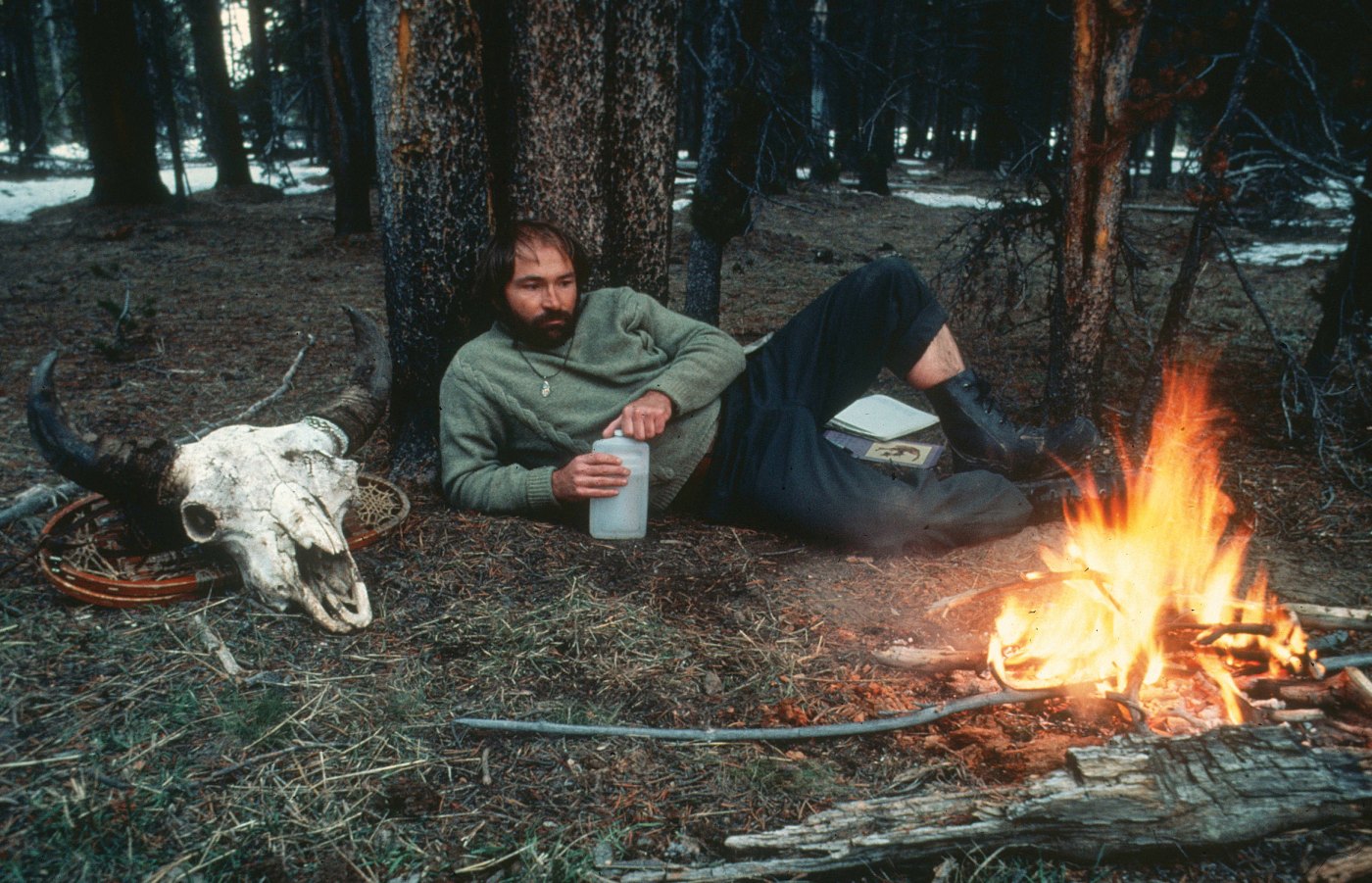
Doug Peacock is a legendary environmentalist, writer, filmmaker, and grizzly bear advocate. He’s the co-founder of two conversation nonprofits– Round River Conservation Studies and Save the Yellowstone Grizzly. Doug was also the inspiration for the character George Washington Hayduke in his friend Edward Abbey’s classic novel The Monkey Wrench Gang. And to top it all off, he is the author of many classic books, including Grizzly Years: In Search of the American Wilderness and his most recent award-winning book Was it Worth It? A Wilderness Warrior’s Long Trail Home, published by Patagonia Books.
Doug was born and raised in Michigan, where he grew up obsessed with nature and the outdoors. As a young man, he was drafted into the Vietnam War, where he served as a Green Beret combat medic, an experience that placed him squarely in the middle of devastating violence toward his fellow soldiers, as well as civilian men, women, and children. In 1968, he returned home from Vietnam spiritually broken, mentally unwell, and physically debilitated with malaria. Not knowing where to turn, he headed deep into the wilderness of Yellowstone National Park by himself, where he formed an unlikely bond with the Yellowstone Grizzly Bear. Eventually, he recovered both physically and mentally and, to this day, he credits the grizzly with saving his life. He has spent the last half-century repaying his debt to the grizzly bear, aggressively fighting for their protection and recovery in the Greater Yellowstone Ecosystem and beyond.
I met up with Doug in Aspen, Colorado, where he was in town for a reading of Was it Worth It? at Aspen’s only bookstore, Explore Booksellers. Even though I could’ve talked with Doug for many hours, we managed to jam a lot of stories into this conversation. Some of the topics we discussed include: Why Doug does not carry a gun in grizzly country; why it is important for humans to love and protect a creature as powerful, even dangerous, as a grizzly; his friendships with Edward Abbey, Yvon Chouinard, Jim Harrison, and others, and how each of those high-voltage personalities helped to elevate the others; the death and secret burial of Edward Abbey; why climate changes is such a threat to grizzlies, the challenges and financial realities of a life dedicated to environmental advocacy; his greatest source of pride and greatest disappointment; what is giving him hope now; and Doug reads several passages from Was It Worth It?
Today, at age 81, you can still feel the fire in Doug’s spirit and his passion for grizzlies is palpable. I was honored to have the opportunity to chat with Doug, and I loved his book Was it Worth It? I hope you enjoy this conversation as much as I did.
Photos courtesy of Doug Peacock and Patagonia Books
LISTEN & DOWNLOAD:
Apple Podcasts
Spotify
Google Podcasts
… or wherever you get your podcasts!
—
RESOURCES:
Topics Discussed:
- 4:10 – Discussing the picture on the front of Doug’s book
- 6:25 – When Doug decided it wasn’t fair to be in grizzly country with guns
- 8:40 – How Yellowstone became a part of Doug’s life
- 10:55 – How grizzlies provided a much-needed community for Doug after his time at war
- 12:40 – How long it took for Doug to find peace in grizzly country after Vietnam
- 15:10 – Exploring Doug’s balance between telling the good stories and being willing to fight for conservation
- 18:10 – Why specifically it is so important for humans to learn to love and protect a creature as powerful, even dangerous, as a grizzly
- 19:40 – How Doug’s friends made him a better conservationist
- 21:40 – How Doug’s friends balance their very strong personalities
- 22:40 – The importance of ceremony and how Doug handled the passing of his dear friend, Ed Abbey
- 28:40 – Whether or not parenthood changed Doug’s outlook on risk and death
- 30:10 – Who or where Doug drew his motivation from
- 32:10 – How Doug managed his lifestyle
- 33:40 – What keeps Doug awake at night, as it pertains to grizzlies
- 36:40 – How Doug became interested in fighting climate change by way of grizzlies
- 39:30 – Where Doug would focus his energy if he were starting his career in conservation now
- 40:25 – Whether or not Doug is an optimist
- 43:40 – What work Doug is most proud of in his life, and where he thinks he may have fallen short
- 46:00 – Doug’s friendship with Jim Harrison
- 47:10 – What gives Doug hope
- 48:40 – Doug’s mandatory reading
Information Referenced:
- Doug Peacock
- Was it Worth It? by Doug Peacock
- Grizzly Years by Doug Peacock
- Doug Thompkins
- Somerset Island
- Beluga Whale
- Narwhal
- Tet Offensive
- NVA – Northern Vietnamese Army
- Viet Cong
- Lodgepole pine
- Edward Abbey
- Hayduke
- The Monkey Wrench Gang by Edward Abbey
- Sebastian Junger
- The Perfect Storm by Sebastian Junger
- Tribe by Sebastian Junger
- Mandan
- Tom Brokaw
- Federal Wildlife Service (US Fish and Wildlife)
- Terry Tempest Williams
- Jim Harrison
- Rick Ridgeway
- Peter Matthiessen
- Bordeaux
- Yvon Chouinard
- Yvon Chouinard giving away Patagonia
- Jack Loeffler
- Jeb Ellisan
- Umba River
- On the Trail of the Siberian Tiger with the Do-Boys by Doug Peacock
- Mesquite
- My Lai Massacre
- Zuni
- Haida Gwaii (Queen Charlotte Islands)
- Turkey vulture
- Round River Conservation Studies
- Save the Yellowstone Grizzly
- “Peacock’s War” by Doug Peacock
- Guggenheim grant
- Lannan Foundation
- Patagonia
- Tetonia, ID
- Mountain Journal Article about Doug’s suite against the government
- Cannes Film Festival
- The Beast of Our Time
- Jeff Bridges
- Bill Payne
- Lance Craighead
- Whitebark Pine
- Thomas Banyacya
- San Juan Mountains
- Doug Sues
- Video of Doug Peacock’s tribute to Jim Harrison
- Legends of the Fall by Jim Harrison
- Dalva by Jim Harrison
- Tom McGuane
- Hunter S. Thompson
- Desert Solitaire by Edward Abbey
- Arctic Dreams by Barry Lopez
- Silent Spring by Rachel Carson
- Dr. Drew Lanham
- Ed’s interview with Dr. Drew Lanham
Enjoy this episode? Then you might like these too:
- Rick Ridgeway – Purpose-Driven Adventurer
- Francesca Claverie – A Borderlands Conservation Success Story
- Mike McTee & Vince Slabe – Win-Win Solutions in the Fight to Save Eagles
- Pete McBride, Part 2: In Search of Silence
- Shane Doyle – Reverence for the Past, Hope for the Future
- Chris Burkard – The Art of Suffering
- Jason Gardner – A Life of Purpose & Service
- Iris Gardner – Living with Intention
- Hal Herring – A Man of Words & Wild Places
Visit the podcast page for a full, searchable list of episodes
Chris Hawkins – Using Nature to Build Healthier & More Equitable Communities
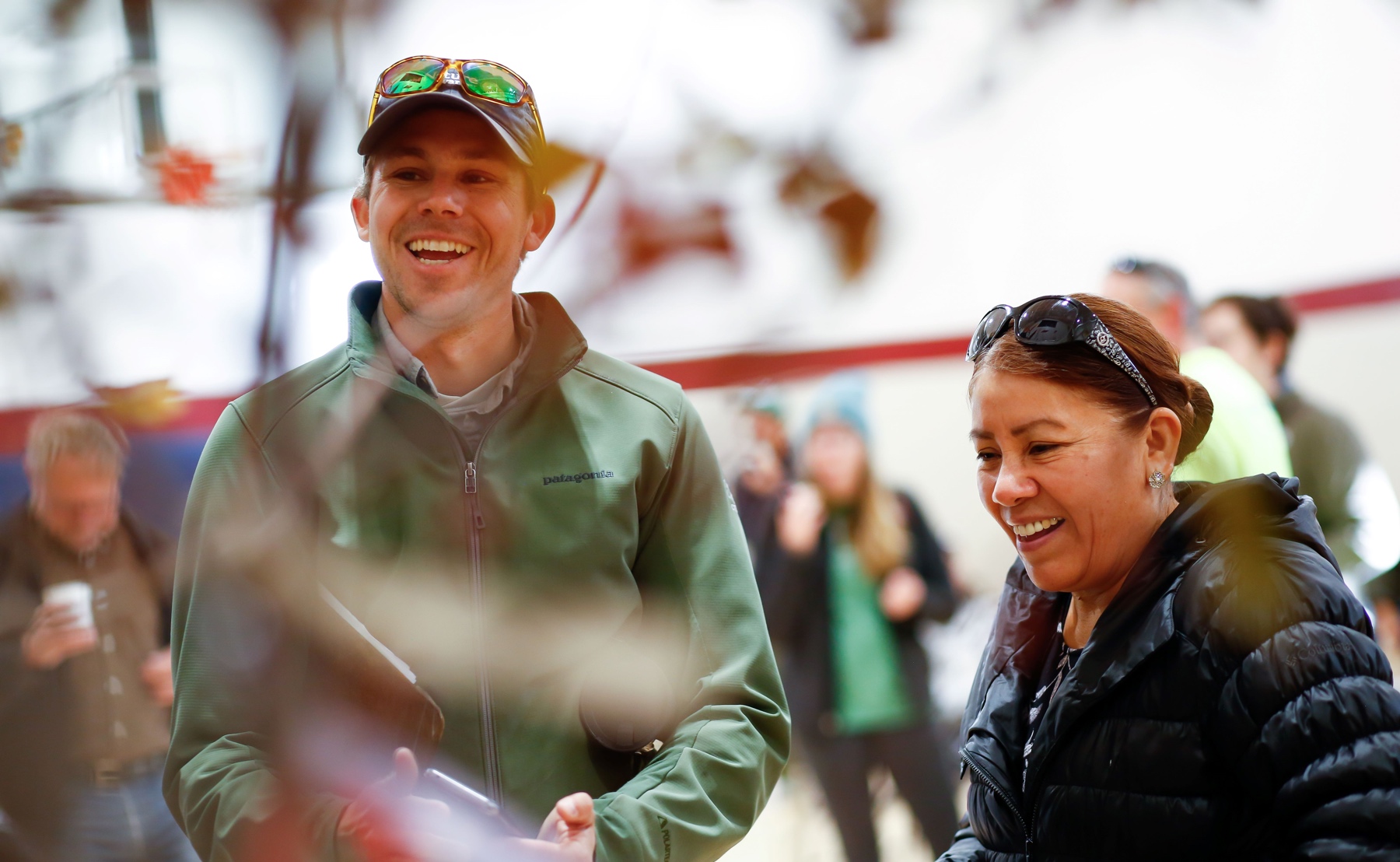
Chris Hawkins is the Colorado Urban Conservation Manager for The Nature Conservancy, where he leads the organization’s efforts in Denver to “solve global challenges like the biodiversity and climate emergencies by supporting and creating more sustainable, efficient ways of living.”
When many people think of The Nature Conservancy, they may envision large-scale conservation efforts across vast grasslands and wild landscapes– but TNC also conducts some of its most innovative conservation work in cities— work that leads to more resilient, healthy, and equitable communities. Chris’s work in Denver is a shining example of how nature-based solutions in densely populated urban areas can have positive ripple effects far beyond the city limits.
Chris was born and raised on the east coast, attended college in Boston, and from the very beginning of his career, he’s been focused on service and causes greater than himself. He’s worked as a Corps Member of AmericaCorps, as Chief of Staff in New York City’s Department of Environmental Protection, and for the past nine years, he’s been with the Nature Conservancy. As you’ll hear in this conversation, Chris’s diverse professional experiences have allowed him to bring a unique and effective perspective to the complex world of urban conservation.
Chris was nice enough to join me at my dining room table for an engaging and educational conversation about all things urban conservation. We started out by discussing why TNC has chosen to devote its resources and expertise to conservation in cities, and he explains the unique challenges facing cities in the West. We discuss how public health is directly related to people’s access to nature, and how the simple-but-not-easy strategy of planting trees in neighborhoods can have huge conservation and public health benefits. As is the case with all of my conservation-related conversations, we discuss the critical importance of relationships, and how Chris has managed to build relationships with a diverse group of Denver residents. We also discuss his professional trajectory, the importance of exporting urban conservation ideas to other cities, and the critical roles of mayors and local leadership. And finally, Chris is a serious history buff, so we have a great discussion about books.
There is so much fascinating information packed into this episode, and I greatly appreciate Chris’s taking the time to share his wisdom with the Mountain & Prairie community. Check out the episode notes below for links to everything we discuss. I hope you enjoy this conversation as much as I did.
Photos courtesy of Chris Hawkins and The Nature Conservancy
LISTEN & DOWNLOAD:
Download on Apple Podcasts
Download on Spotify
Download on Google Podcasts
…or wherever you get your podcasts!
EPISODE PARTNER:
This episode is brought to you in partnership with the Colorado chapter of The Nature Conservancy. Guided by science and grounded by decades of collaborative partnerships, The Nature Conservancy has a long-standing legacy of achieving lasting results to create a world where nature and people thrive.
On the fourth Tuesday of every month throughout 2023, Mountain & Prairie will be delving into conversations with a wide range of The Nature Conservancy’s leaders, partners, collaborators, and stakeholders, highlighting the myriad of conservation challenges, opportunities, and solutions here in the American West. You can access all of the 2023 episodes here.
To learn more about The Nature Conservancy’s impactful work in Colorado and around the world, visit www.nature.org/colorado
RESOURCES:
Topics Discussed:
- 3:45 – Why do Chris and TNC work in cities
- 7:00 – Thriving cities in the West and the unique challenges they present
- 9:30 – Whether or not the health benefits of the outdoors have become a larger part of Chris’s work recently
- 15:30 – Discussing trees
- 27:45 – How Chris builds relationships in his work in cities
- 33:45 – Specific strategies Chris uses to build trust
- 38:30 – Where Chris grew up and why he became involved in this work
- 43:30 – Discussing the work of city mayors
- 53:00- How ideas that are exported or imported between cities show up in Chris’s work in Denver
- 1:00:15 – Chris’s book recommendations
Information Referenced:
- Chris Hawkins
- Jaime González
- The Nature Conservancy
- The Nature Conservancy in Colorado
- TNC Cities program in Denver
- Global Cities Program, TNC
- The Nature Conservancy in Kentucky
- The Nature Fix by Florence Williams
- Last Child in the Woods by Richard Louv
- Melissa McHale
- Globeville, Denver
- Elyria-Swansea, Denver
- Office of Climate Action, Sustainability, and Resiliency, Denver, CO
- Carlos Fernández
- Matt Moorhead and Galen Guerro-Murphy
- Dr. Katherine Hayhoe
- Americorps
- Cape Cod
- John Hickenlooper
- Congestion pricing in London
- Yemi Mobolade
- New York Office of Charter Schools
- New York City Office of Sustainability
- New York City Water Board
- Rain garden map of New York City
- Trust for Public Land
- Colorado Cattlemen’s Association
- Green roof ordinance in Denver
- The Power Broker by Robert A. Caro
- Robert Moses
- Grant by Ron Chernow
- Ulysses S. Grant
- Frederick Douglass: Prophet of Freedom by David W. Blight
Enjoy this episode? Then you might like these too:
- Equitable Access to the Outdoors in Texas
- Cole Mannix – Building Community through Land Stewardship and Local Food
- Carlos Fernández, Part 2 – Creating Conservation Opportunities During Uncertain Times
- Douglas Brinkley – Exploring the Past to Find Inspiration for the Future
- Amber Smith – Creating Connection & Community
- Land Tawney – Energetic & Optimistic
- Betsy Gaines Quammen – A Fascinating History of Public Lands in the West
Visit the podcast page for a full list of episodes where you can filter episodes by topic and guests’ vocations.
Live from the Strenuous Life Retreat: In Conversation with Nancy Fishbein
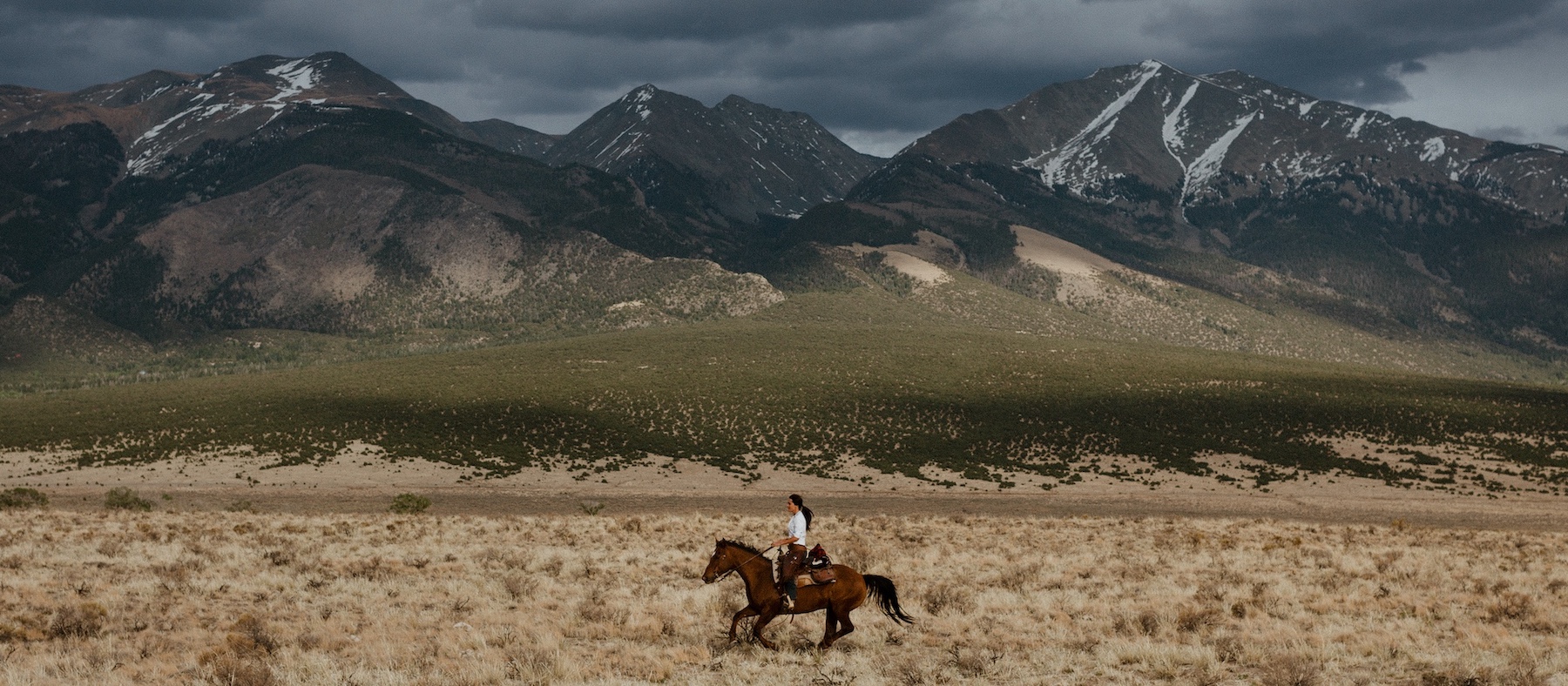
Back in September of 2022, I held the first annual Strenuous Life Retreat at the renowned Zapata Ranch in Colorado’s San Luis Valley. The retreat consisted of five days of adventure and education inspired by Theodore Roosevelt’s well-known commitment to living “the Strenuous Life.” We hiked high into the Sangre de Cristo Mountains, rode horses in Great Sand Dunes National Park, and enjoyed world-class meals. And each afternoon, we enjoyed facilitated conversations about land stewardship, conservation, and regenerative agriculture. This episode is a recording of one of those conversations.
I was honored to be joined by conservation veteran Nancy Fishbein, who serves as Director of Resilient Lands for the Colorado Chapter of The Nature Conservancy. Nancy has been a long-standing leader in the Western conservation community, so we were all honored that she took time out of her full schedule to join us and share some stories and hard-earned wisdom. The Zapata Ranch is owned by the Nature Conservancy and managed by Ranchlands, so Nancy has a unique insight into the history of the ranch, as well as the importance of conservation in the San Luis Valley.
We recorded this conversation at the ranch’s education center, one afternoon after a morning of horseback riding. The first half consists of me asking the questions, and the second half consists of questions from the retreat participants. We cover everything from the history of the Zapata Ranch to the establishment of Great Sand Dunes National Park, which adjoins the ranch to the north. We talk about the conservation bison herd that calls the ranch home, and some of the ongoing challenges in the San Luis Valley created by water speculation and development. We discuss how mineral rights development can coexist with conservation, the protection of biodiversity on ranches, how TNC and the National Park Service work together, and much more. As you’ll hear, everyone in attendance was super engaged and curious about Nancy’s work, and it showed in the range of interesting and thoughtful questions.
I hope this episode will give you a bit of insight into the types of conversations we had at the 2022 Retreat and the kind of conversations you can expect in 2023 and beyond. Colorado is blessed to have so many committed conservationists like Nancy who devote their time and energy to protecting and stewarding these spectacular landscapes, and I can’t thank Nancy enough for taking the time to join us.
If you’re interested in joining me for the 2023 Retreat, as of this recording there are still a few spots left. Follow this link to learn more and reserve your spot. Thanks for listening, and I hope you enjoy!
Header photo by Ranchlands, Nancy’s headshot by The Nature Conservancy.
LISTEN & DOWNLOAD:
Apple Podcasts
Spotify
Google Podcasts
… or wherever you get your podcasts!
—
RESOURCES:
Topics Discussed:
- 3:30 – A quick intro to Nancy
- 5:30 – The story of the Education Center on Zapata Ranch
- 7:00 – How Zapata Ranch first got onto TNC’s radar
- 10:00 – How TNC goes about acquiring properties like Zapata Ranch
- 12:15 – Why the previous owner of Zapata Ranch did not charge TNC full fair market value for the property
- 13:30 – The importance of relationships in TNC’s work
- 15:30 – What happened after TNC acquired Zapata Ranch
- 18:15 – Explaining a conservation easement
- 20:00 – Why the bison herd on Zapata Ranch were such a focal point of TNC’s conservation work there
- 22:15 – Why TNC has chosen to hold onto Zapata Ranch as an owner for so long
- 25:45 – How TNC works with various levels of government agencies
- 27:30 – Nancy’s biggest concern for the San Luis Valley
- 29:00 – The most recent scheme to remove water from the San Luis Valley
- 31:45 – Audience questions begin
- 32:00 – Whether or not Nancy wished that TNC had done something different in their acquisition of Zapata Ranch
- 32:45 – Nancy’s surprises and lessons learned about Zapata
- 34:30 – Why an easement cannot be put on San Luis Valley’s aquifer
- 36:15 – TNC’s role in the establishment of Baca Wildlife Refuge and the Great Sand Dunes National Park
- 40:45 – The distinction between a national park and national monument
- 41:30 – How the TNC navigated purchasing land that was managed by a private company (Rocky Mountain Bison) but on leased state land
- 42:30 – Exploring the potential causality between water export schemes in the San Luis Valley and the establishment of the Great Sand Dunes National Park
- 44:00 – Whether or not there remains the appetite for bipartisan action, such as the kind that led to the creation of the Great Sand Dunes National Park, in our current political climate
- 45:00 – Exploring TNC’s support of agriculture as a conservation service
- 43:30 – Whether or not TNC deals with agricultural leases
- 51:30 – How easements impact mineral and mining rights on a property
- 53:30 – How fracking might complicate conservation easements, and whether or not easements are a successful tool for reducing oil and gas development
- 55:45 – How TNC measures success in its conservation work and the preservation of biodiversity on a property, and ow they respond to and act on those measurements
- 1:00:55 – What TNC is working on right now in Colorado
Information Referenced:
- Nancy Fishbein
- The Nature Conservancy, Colorado
- Ranchlands
- San Luis Valley
- World Wildlife Fund
- Zapata Ranch
- Rocky Mountain Bison Company
- JE Canyon Ranch
- La Garita Creek Ranch
- Meshak Lakes Preserve
- David Cooper
- Colorado Parks and Wildlife
- Great Outdoors Colorado
- Chris Castilian
- Matt Moorhead
- Palmer Land Conservancy
- Colorado State Land Board
- Conservation easement
- Sangre de Cristo Mountains
- Great Sand Dunes National Park
- La Garita Wilderness
- Baca National Wildlife Refuge
- Blanca Wetlands
- Louis Bacon
- Bureau of Land Management
- Colorado Open Lands
- Confined and unconfined aquifers
- Closed Basin Project
- AWDI water export scheme
- Spanish Land Grants
- Treaty of Guadalupe Hidalgo
- Senator Wayne Allard
- Senator Ben Nighthorse Campbell
- Scott McInnis
- Bruce Babbitt
- Ken Salazar
- Great Sand Dunes National Park and Preserve Act of 2000
- National Park Service
- Row crop agriculture
- Colorado Cattlemen’s Association
- American Farmland Trust
- Golden Eagle episode – Mike McTee and Vince Slabe
- Southern High Plains Initiative
- Trinidad, CO
- Purgatoire River
- Shortgrass Prairie
- Virtual livestock fencing
Enjoy this episode? Then you might like these too:
- Matt Moorhead & Galen Guerrero-Murphy – Grasslands Conservation on the Southern High Plains
- Douglas Brinkley – Exploring the Past to Find Inspiration for the Future
- Frances Ashforth – Art, Water, and Wide-Open Spaces
- Nate Schweber – A Forgotten Chapter of American Conservation
- Pete McBride, Part 2: In Search of Silence
- Rick Ridgeway – Purpose-Driven Adventurer
- Betsy Gaines Quammen – A Fascinating History of Public Lands in the West
Visit the podcast page for a full, searchable list of episodes
Jesse Griffiths – Humility, Curiosity, and Creative Cuisine
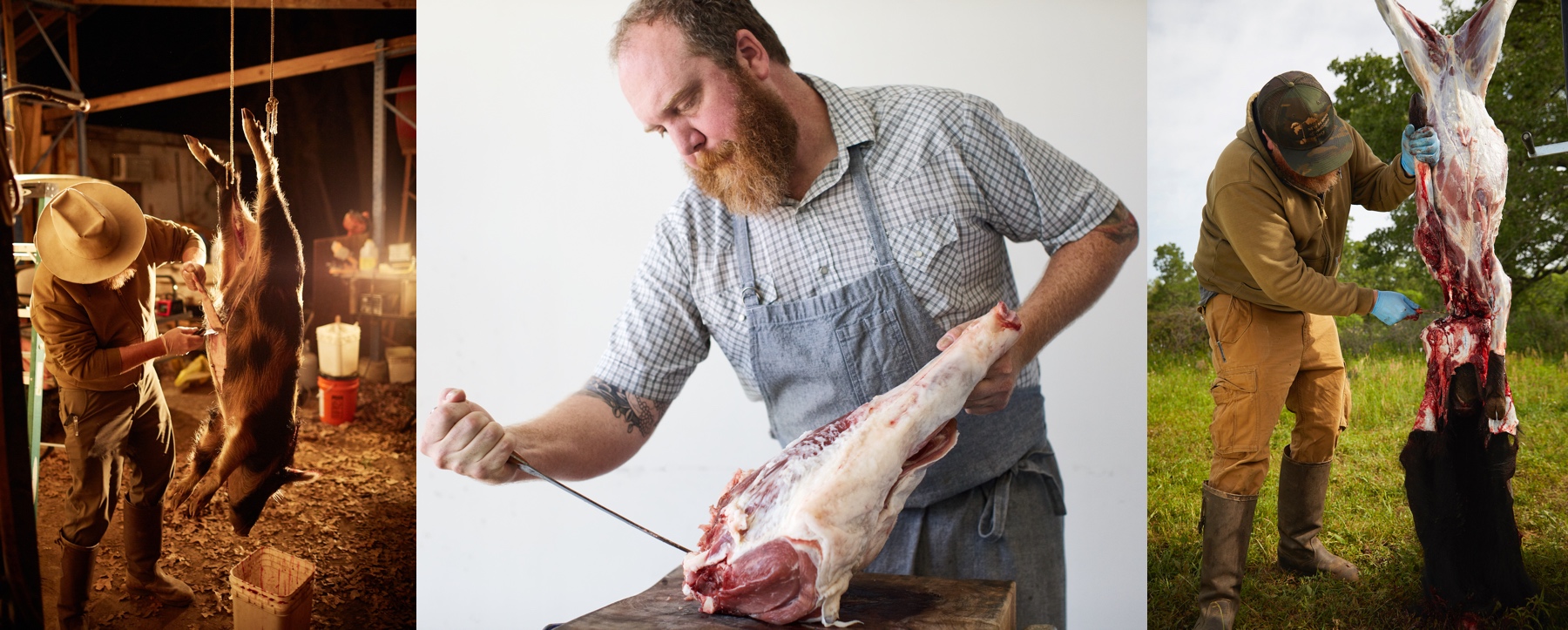
Jesse Griffiths is an Austin-based chef, author, hunter, and fisherman, and he’s also the co-owner of Dai Due Butcher Shop & Supper Club and the New School of Traditional Cookery. Jesse’s work has been featured everywhere from The New York Times to the Joe Rogan Experience, and he’s a regular contributor to Steven Rinella’s MeatEater. As an author, Jesse has received great praise for his two books, the James Beard Award-finalist cookbook, Afield: A Chef’s Guide to Preparing and Cooking Wild Game and Fish, as well as his most recent title, The Hog Book: A Chef’s Guide to Hunting, Preparing, and Cooking Wild Pigs.
Born and raised in Denton, Texas, Jesse grew up obsessed with fishing– he loved catching the fish, but he also loved cooking and eating them. As a teenager, he started working in restaurants and became more and more interested in cooking– an interest that he pursued full-time after graduating from high school. Propelled by a deep curiosity and a desire to broaden his perspective, he would save up his money and then travel, studying food and cooking in a wide variety of cultures around the world. Eventually, Jesse combined all of his unique personal and professional experiences and opened his own restaurant, Dia Due, which features food that is “produced in a fair and equitable way, represent(s) local culinary traditions, and support(s) farmers and ranchers who are striving to improve the quality of our food.”
I’ve been a fan of Jesse’s work for many years, so I was thrilled when we were introduced by a mutual friend. Over the course of our hour together, we covered a lot, include: Jesse’s upbringing in Texas and his early days in cooking, the importance of international travel, the challenges of getting Dai Due off the ground, the importance of humility and curiosity, a deep dive into wild hogs in Texas, his approach to writing, Jesse’s recent obsession with wild turkeys, and, of course, Jesse offers a ton of great book recommendations.
I loved this conversation and was blown away by Jesse’s kindness and humility. I really appreciate his taking the time to chat with me, and I know you’ll learn a lot from Jesse’s fascinating life story. Enjoy!
Photos by Jody Horton for The Hog Book
LISTEN & DOWNLOAD:
Apple Podcasts
Spotify
Google Podcasts
… or wherever you get your podcasts!
—
RESOURCES:
Topics Discussed:
- 3:15 – Jesse’s upbringing
- 7:30 – How Jesse got involved in cooking
- 12:15 – When Jesse first left the USA
- 13:30 – The importance of international travel
- 16:45 – Jesse’s mentors
- 24:15 – Getting Dai Due started
- 27:15 – How Jesse learned to be a manager
- 31:15 – The source of Jesse’s humility
- 36:15 – Jesse’s work with Texas wild hogs
- 50:15 – Jesse’s ethos in writing
- 51:30 – Jesse’s recent work with turkeys
- 1:01:15 – Jesse’s book recommendations
Information Referenced:
- Jesse Griffiths
- Dai Due
- New School of Traditional Cookery
- Texas Chapter of the Wildlife Society
- The Hog Book by Jesse Griffiths
- Afield by Jesse Griffiths
- Ed’s live event in Texas
- Romey Swanson
- Ed’s first elk hunt
- Dallas- Fort Worth metroplex
- Denton, TX
- Crappie
- Hanger Steak
- Venice
- Radicchio
- Dai Due on Bon Appetit
- Jesse on Joe Rogan
- Texas wild hogs
- Kevin Harlander
- First Lite
- National Wild Turkey Federation
- Ben O’Brien
- White-tailed deer
- Dove hunting in Texas
- White Bass
- The River Cottage Meat Book by Hugh Fearnley-Whittingstall
- Emeril Lagasse
- Julia Child
- American Sfoglino by Evan Funke
- Nate Schweber
- This America of Ours by Nate Schweber
- Bernard DeVoto
- Avis DeVoto
- Olympia Provisions by Elias Cairo
Enjoy this episode? Then you might like these too:
- Cole Mannix – Building Community through Land Stewardship and Local Food
- Land Tawney – Energetic & Optimistic
- Dylan Tomine – Protecting What He Loves
- Alvin Dedeaux – Living His Dream
- Reflections On My First Elk Hunt, with Adam Gall
- Hal Herring – A Man of Words & Wild Places
- Mark Kenyon – A Passion for Public Lands
- Kate Kavanaugh – Regeneration & Restoration
Visit the podcast page for a full, searchable list of episodes
Christian Beckwith, Part 2 – The Fascinating History of the 10th Mountain Division
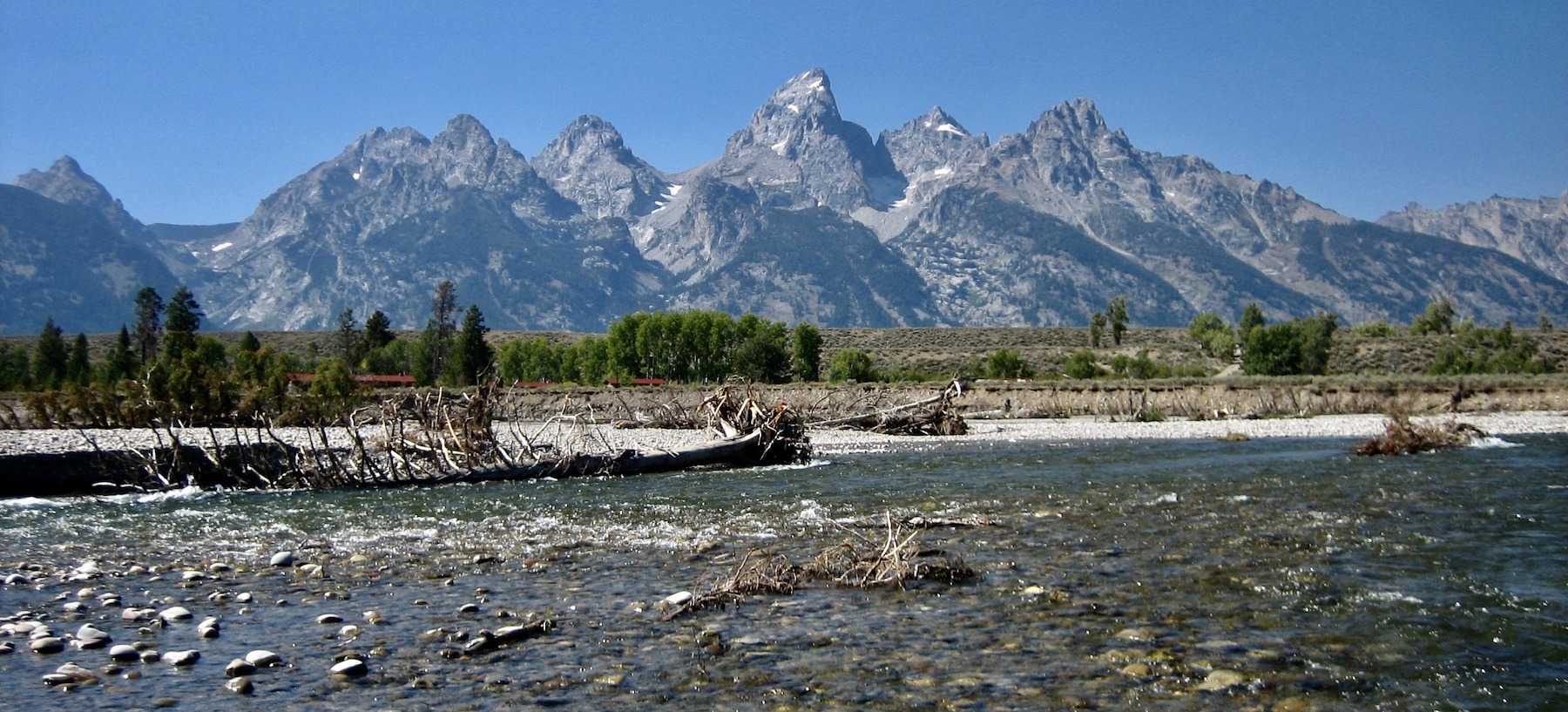
For today’s conversation, I was thrilled to chat once again with Christian Beckwith, a Jackson, Wyoming-based writer, historian, conservationist, and entrepreneur. Christian’s latest project is “Ninety-Pound Rucksack: A podcast about the US Army’s 10th Mountain Division and the dawn of outdoor recreation in America.”
If you enjoy spending time up high in the mountains here in the American West, then you’ve surely heard at least a passing mention of the 10th Mountain Division. It’s nearly impossible to travel up and down the I-70 corridor here in Colorado without seeing a few references to the 10th. But if you’re like me, you probably do not have a sufficient appreciation for the exciting story of how and why the division was formed, and how its creation set the trajectory for climbing, skiing, and recreational outdoor adventure for decades to come.
Whether you’re a climber, skier, or simply a history buff who enjoys diving into untold stories from pivotal moments in our past, then I highly recommend Ninety-Pound Rucksack. The podcast starts out exploring the 1939 Russian invasion of Finland, and how, despite being outmatched on nearly every level, the Fins were able to put up a heroic fight thanks to their ability to efficiently maneuver through cold, snowy, rugged terrain on skis. The story then shifts to America, where a small group of young mountaineers and skiers recognized the importance of mountain warfare and began to lobby the government to focus on this unconventional approach to battle. I won’t give any more details away, but the podcast is just the kind of history I love: big adventures, one-of-a-kind characters, and people driven by causes larger than themselves.
To learn more about Christian’s personal background, I’d encourage you to go back and listen to our first conversation from many years ago. Because in this one, we talk all history, all the time– from the backstory of the 10th, to the adventurous young men who dreamed it up, to how that time period affects us still today. Toward the end of the conversation, Christian offers up some valuable wisdom on the need to be tenacious in all creative and entrepreneurial endeavors, and he also has some really great book recommendations.
Follow the links in the episode notes to listen to Ninety-Pound Rucksack, and please pass the podcast along to any of your history-loving friends. A big thanks to Christian for working so hard to create this podcast and for joining me for another conversation. Hope you enjoy!
Headshot by David Stubbs
LISTEN & DOWNLOAD:
Apple Podcasts
Spotify
Google Podcasts
… or wherever you get your podcasts!
—
RESOURCES:
Topics Discussed:
- 3:15 – An overview of Christan’s background
- 13:15 – How the 10th Mountain Division was established
- 26:15 – How the 10th Mountain Division impacted the development of skiing in the US
- 32:15 – How digging into the history of the 10th impacted Christian’s thinking about the present
- 40:45 – Discussing Christian’s code switch from adventure writing to engaging history writing
- 45:15 – The podcast’s advisory council
- 50:15 – Christian’s advice for people who have an idea but feel they are not qualified to pursue it
- 54:45 – Discussing Christian’s tenacity
- 57:00 – What can we do to help get the word out about Christian’s work
- 1:00:00 – Christian’s book recommendations
Information Referenced:
- Christian Beckwith
- Chrsitan’s podcast, Ninety-Pound Rucksack
- Teton Range
- Yvon Chouinard
- Teton Boulder Park
- Snow King Mountain
- Jackson, WY
- Teton Climbers’ Coalition
- Climbing Area Modernization Project
- Joe Stettner
- Paul Stetner
- 10th Mountain Division
- Riva Ridge Operation
- Gothic Line
- John A. McCown II
- Grove McCown
- Camp Hale
- Russian invasion of Finland, the Winter War
- Charles Minot “Minnie” Dole
- National Ski Patrol System
- Roger Langley
- National Ski Association
- Alec Bright
- Robert Livermoore
- Bromley Mountain
- Champlain Valley
- US War Department
- American Alpine Club
- American Alpine Journal
- The American Alpine Journal 1946 edition
- H. Adams Carter
- Bob Bates
- Harvard Mountaineering Club
- Yukon
- Himalya
- General George C. Marshall
- Henry Stimson
- Dolomites
- Julian Alps
- Johann “Hannes” Schneider
- Arlberg technique
- Boston and Maine Ski Train
- Downhill ski racing
- Slalom ski racing
- Appalachian Mountain Club
- The Mountaineers
- Mazamas
- Colorado Mountain Club
- Molotov Cocktail
- Leslie McNair
- Henry Ford
- Narvik, Norway
- Narvik Netflix show
- Albania
- Italy’s invasion of Greece, the Greco-Italian War
- Rolf Monsen
- Harald Sorensen
- Hampton Sides
- Blood and Thunder by Hampton Sides
- On Desperate Ground by Hampton Sides
- The Last Ridge by McKay Jenkins
- Chris Juergens
- History Colorado
- Jeff Leich
- New England Ski Museum
- David Little
- Sepp Scanlin
- 10th Mountain Division and Fort Drum Museum
- Denver Public Library
- Keli Schmid
- Doug Schmidt
- National Association of the 10th Mountain Division
- Lance Blyth
- NORAD
- 10th Mountain Division Foundation
- Outside Magazine
- Navajo Nation
- Sebastian Junger
- Unbroken by Laura Hillenbrand
- Louis Zampirini
- The Rock Warrior’s Way by Arno Ilgner
- Carlos Castaneda
Enjoy this episode? Then you might like these too:
- Douglas Brinkley – Exploring the Past to Find Inspiration for the Future
- Peter Stark – Tales of Adventure, Exploration, & Epic Battles
- Betsy Gaines Quammen – A Fascinating History of Public Lands in the West
- Elliott Woods – Stories from Dangerous Places
- Shane Doyle – Reverence for the Past, Hope for the Future
- Jason Gardner – A Life of Purpose & Service
- Hampton Sides, Part 2 – How to Tell a Damn Good Story
- David Gessner, Part 3 – A Confluence of Conservation Ideals
Visit the podcast page for a full, searchable list of episodes
Matt Moorhead & Galen Guerrero-Murphy – Grasslands Conservation on the Southern High Plains
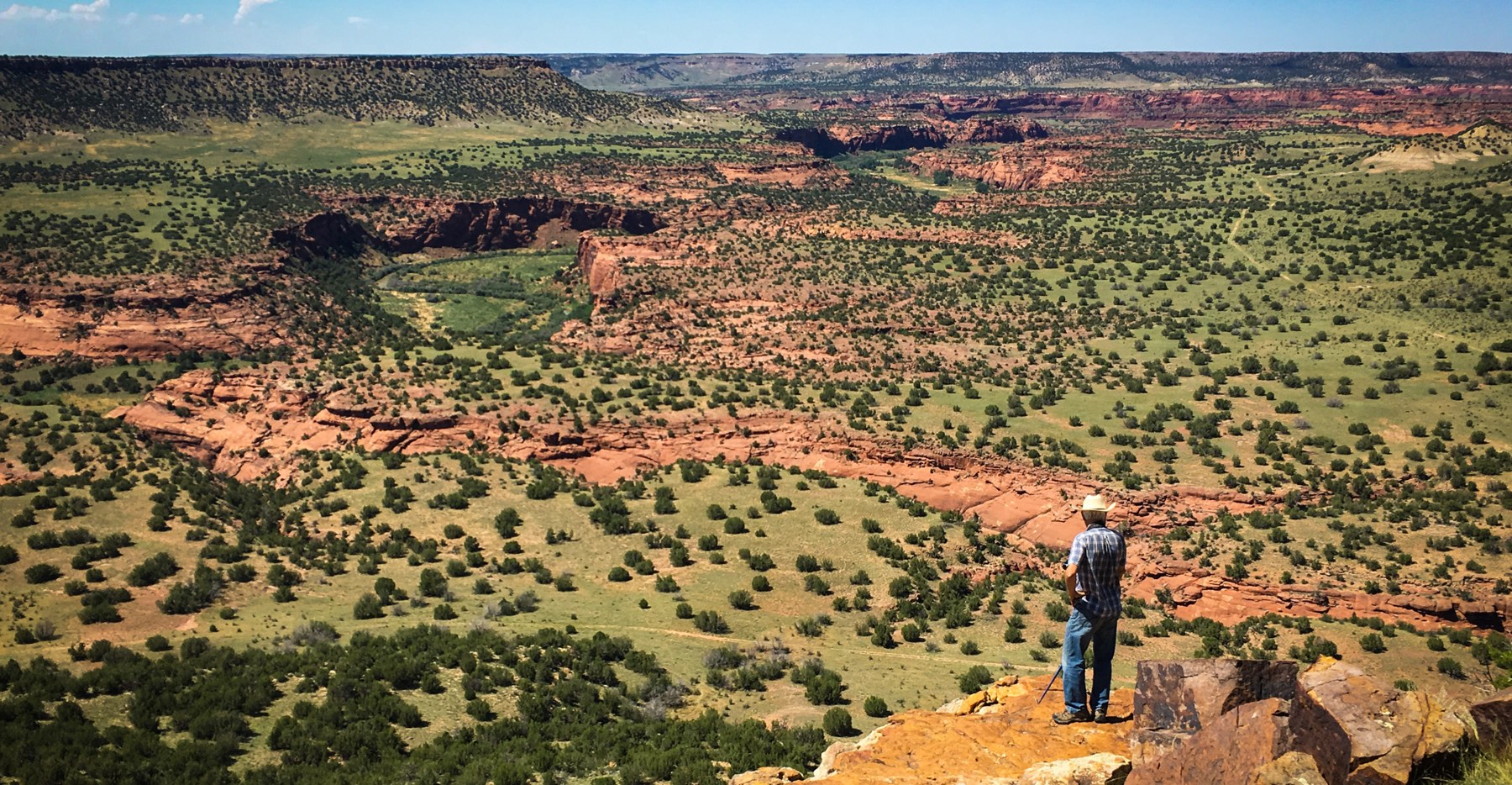
Matt Moorhead and Galen Guerrero-Murphy are conservationists who work for The Nature Conservancy on its Southern Highs Plains Initiative (SHPI), a collaboration between five states with the shared goal of protecting the nation’s grasslands. The Southern High Plains encompasses approximately 71 million acres across Colorado, Kansas, New Mexico, Oklahoma, and Texas. The region is home to some of the country’s most important grasslands, as well as the people and wildlife who depend on the invaluable shortgrass prairie ecosystem.
Officially, Matt is TNC’s Conservation Business & Partnership Development Advisor and Galen is TNC’s Land Conservation Program Manager– but at their core, they are both relationship builders. As you’ll hear in this conversation, both Matt and Galen work tirelessly to build long-term, rock-solid partnerships with landowners and conservation partners with the goal of finding win-win solutions that can be mutually beneficial for all parties. Through genuine curiosity, creative thinking, and a deep respect for landowners and their legacy, Matt and Galen have helped to implement lasting conservation outcomes in the Southern High Plains.
The three of us connected virtually and had a fascinating conversation about grasslands, ranching, buidling relationships, and purpose-driven work. We start out by defining exactly what constitutes the Southern High Plains and why this is such an important region for conservation. We then discuss why the large percentage of private ownership creates such a compelling case for conservation, the need for balancing conservation with various forms of energy development, the current markets around grasslands carbon sequestration, and the all-important role of TNC’s partners. We also discuss Matt and Galen’s mentors, how they measure conservation success, and some of their favorite books.
I’ve considered Matt and Galen to be friends and mentors for many years now, so I was grateful for the opportunity to talk with them on the podcast. Hope you enjoy.
Photos courtesy of The Nature Conservancy, header photo by Lauryn Wachs
LISTEN & DOWNLOAD:
Download on Apple Podcasts
Download on Spotify
Download on Google Podcasts
…or wherever you get your podcasts!
EPISODE PARTNER:
This episode is brought to you in partnership with the Colorado chapter of The Nature Conservancy. Guided by science and grounded by decades of collaborative partnerships, The Nature Conservancy has a long-standing legacy of achieving lasting results to create a world where nature and people thrive.
On the fourth Tuesday of every month throughout 2023, Mountain & Prairie will be delving into conversations with a wide range of The Nature Conservancy’s leaders, partners, collaborators, and stakeholders, highlighting the myriad of conservation challenges, opportunities, and solutions here in the American West. You can access all of the 2023 episodes here.
To learn more about The Nature Conservancy’s impactful work in Colorado and around the world, visit www.nature.org/colorado
RESOURCES:
Topics Discussed:
- 3:10 – Introductions
- 6:25 – What are the Southern High Plains
- 9:55 – Why the Southern High Plains are so critical in conservation
- 16:10 – How the patchwork of private lands in the Southern High Plains allows Matt and Galen to be effective in their conservation work
- 20:55 – The process of building relationships in private lands conservation work
- 29:10 – Balancing the potential for landowners to earn revenue through energy development with the interest in conserving landscapes
- 35:10 – Where things stand on grassland carbon sequestration as a method of generating both landowner revenue as well as conservation outcomes
- 39:10 – The importance and skills of TNC’s partners
- 43:10 – Matt and Galen’s mentors
- 50:10 – What progress on the Southern High Plains Initiative would make Matt and Galen happy in 10-15 years
- 53:40 – Matt and Galen’s book recommendations
Information Referenced:
- The Nature Conservancy, Colorado Chapter
- Matt Moorhead
- Galen Guerrero-Muphy
- Theodore Roosevelt
- Southern High Plains Initiative
- Colorado Cattlemen’s Association
- JE Canyon Ranch
- Arkansas River
- Canadian River
- Sangre de Cristo Mountains
- Santa Fe Trail
- American Serengeti by Dan Flores
- Roaring Fork Valley
- Spanish Land Grants
- Chris Pague
- Dust Bowl
- Colonial Conservation
- TRC Companies
- Pueblo, CO
- UC Davis study – Grasslands More Reliable Carbon Sink Than Trees
- David Smith
- Steve Massey
- John Ehrenfeld
- Palmer Land Conservancy
- Pueblo, Colorado
- The Complete Far Side by Gary Larson
- Celebrating Peanuts: 65 Years by Charles Schultz
- Guns, Germs, and Steel by Jared Diamond
- The Dawn of Everything by David Graeber
- Confessions of an Economic Hitman by John Perkins
- The Tree of Knowledge by Humberto R. Maturana and Francisco J. Varela
- This is Your Mind on Plants by Michael Pollan
- Braiding Sweetgrass by Robin Wall Kimmerer
- Saving Us by Katherine Hayhoe
Enjoy this episode? Then you might like these too:
- Cole Mannix – Building Community through Land Stewardship and Local Food
- Francesca Claverie – A Borderlands Conservation Success Story
- Kate Mannix – A Legacy of Land Stewardship
- Amber Smith – Creating Connection & Community
- Lesli Allison & Tuda Libby Crews – Durable Conservation in the West… and Beyond
- Daniela Ibarra-Howell – Healing the Land Holistically
- Russ Schnitzer – A Life Devoted to Western Landscapes
Visit the podcast page for a full list of episodes where you can filter episodes by topic and guests’ vocations.
Seven Years of Mountain & Prairie
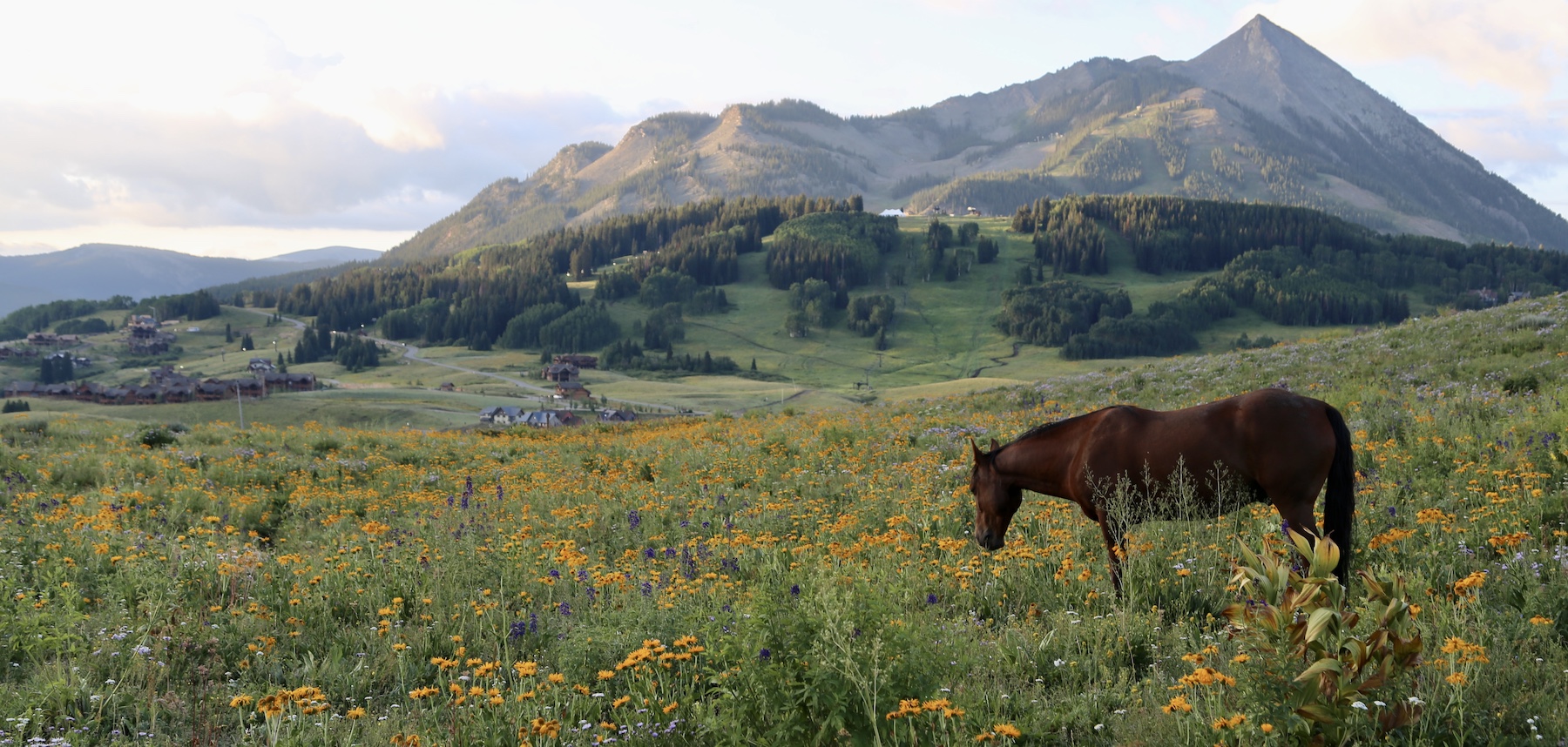
Exactly seven years ago TODAY, I hit publish on the first episode of Mountain & Prairie.
—
When I started the podcast, I had no expectation that anyone would listen.
It was just a selfish side project that allowed me to have substantive, focused conversations with people I admired and ask them deeper questions about their motivations, influences, and work– questions that would’ve been off-the-charts weird in a normal social situation.
So I went to Best Buy, bought the cheapest mic they had, plugged it into my laptop, and sat down with my friend and mentor Erik Glenn of the Colorado Cattlemen’s Agricultural Land Trust, who already knew I was a weirdo and patiently answered my questions.
That was Episode 1.
Then I did it again and again and again, every other week, for many years.
For a long time, very few people (other than my mom and dad) listened. But again, it was a selfish project that was improving my life, so I didn’t care.
But at some point, I realized that a lot more people were listening, and that they too were gleaning value from the conversations with all the amazing guests. 🤯🤯🤯
And now here we are—I’m still having oddly intense conversations with friends and colleagues, and, amazingly, I now get to sit down and talk with some of my heroes who I’ve admired from afar for decades. And I’m still learning from each conversation, as are many of you.
The whole thing is just crazy, in the best possible way. (Remember, if things had gone according to plan, I’d be a stockbroker.)
A sincere THANK YOU to all of the guests who have taken the time to talk with me and share their wisdom. Whether they know it or not, many, many people have gleaned great value from their stories.
Another sincere THANK YOU to everyone who listens. I am a complete maniac when it comes to protecting my time/attention and I assume y’all are too, so it’s a great honor that you devote hours of your time to M&P.
And a HUGE thank you to all of the various financial supporters– Patreon and individual supporters, episode partners, trip & retreat participants, show attendees, organizations that have hired me to speak/host, etc. I would’ve never expected this thing to be my job, but it is, and your support is invaluable.
Here are a few photos from a summer morning in Crested Butte– the morning I snapped the pic that ended up being the podcast’s thumbnail image.









Thank you, thank you! Here’s to the next seven years!
Walt Morgan – Helping People Discover Their Best Selves
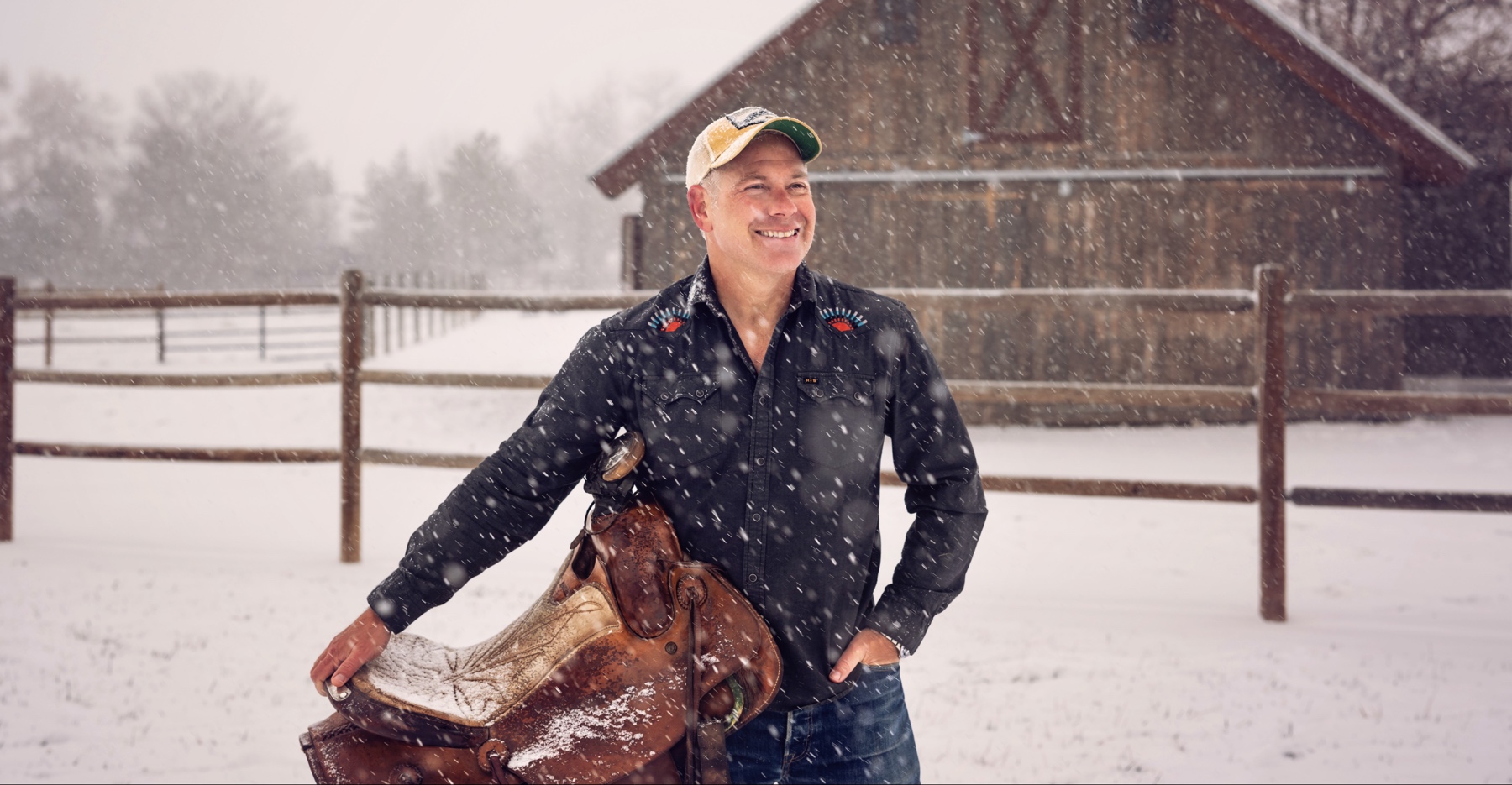
Walt Morgan is a retired Navy Commander and Navy helicopter pilot, and he’s also the founder of Translational Lift Coaching, where he works with individuals and teams to help them reach their full potential. Walt’s wide-ranging background as a leader, teacher, student, and parent gives him a unique approach to helping people identify what they are doing well, what they could be doing better, and how to make subtle-yet-powerful adjustments that can lead to lasting change.
Walt grew up in rural Oregon, where agriculture and working lands were an important part of his upbringing. He attended college on a military scholarship, graduated, and began flying helicopters for the Navy. After 23 rewarding years of service, Walt retired from the Navy and made his way into corporate America, where he quickly discovered his talent and passion for coaching. Today, Walt has combined his innate skills as a coach with his deep desire to help people, and he’s created a meaningful second act to his already impressive career.
I have had the great fortune of being coached by Walt for many years now, and I credit him and his guidance with helping me to identify the beliefs and ideas that are serving me well and to discard those that created friction. As you’ll hear in this conversation, several of the insights I gained from Walt’s coaching are what led me to leave the real estate business and fully focus on the purpose-driven work of conservation and this podcast. While I generally avoid blabbing about myself in these conversations, I feel that my personal experience with Walt speaks to the power of the work he does on a daily basis with many, many people.
Walt and I sat down at my dining room table and had a fun conversation about his life and career, including: Walt’s upbringing in rural Oregon; his decision to join the military; lessons learned from helicopters, deployments, and decades of service; his experience on the morning of 9/11 and his work in the aftermath; discovering his love of teaching; harnessing youthful wild energy into something productive; becoming a coach; the difference between coaching and therapy; the Enneagram and Integral Coaching methodology; favorite books and music; and much more.
A big thanks to Walt for taking the time to chat and for his guidance over the years. You can find links to everything Walt is doing in the episode notes, so be sure to click through. Hope you enjoy.
Photos courtesy of Walt Morgan, Header photo by D’Ann Boal
LISTEN & DOWNLOAD:
Apple Podcasts
Spotify
Google Podcasts
… or wherever you get your podcasts!
—
RESOURCES:
Topics Discussed:
- 3:30 – How a saddle made it into Walt’s living room (a look into his upbringing)
- 8:300 – Walt’s journey in college
- 10:00 – Discussing Walt’s hometown of Yoncalla, OR, and the remarkable people connected to it
- 13:45 – Why Walt became involved in the military
- 15:30 – Walt’s character pivot from his 19-year-old self to now
- 18:30 – When Walt started at the US Navy post-graduate school
- 19:15 – Discussing when flying helicopters became a dream of Walt’s
- 21:45 – Whether or not flight school was a means for Walt to channel the negative experiences he was having in his personal life into something productive
- 23:45 – Describing Walt’s missions with helicopters
- 28:15 – Where Walt was on 9/11
- 31:00 – Walt’s deployments following 9/11
- 34:45 – Walt’s spiritual and emotional journey in corporate America, and starting his own business
- 42:15 – People’s reactions (including Ed’s) to receiving the kind of coaching Walt provides
- 48:15 – Defining Integral Coaching and the process that Ed has specifically worked through with Walt
- 53:30 – The difference between Integral Coaching and therapy
- 56:45 – Exploring the Integral Coaching methodology further, and discussing success stories in Walt’s work
- 1:05:15 – Why this coaching strategy is not widespread
- 1:08:00 – How folks can work with Walt
- 1:13:45 – Walt’s book and music recommendations
Information Referenced:
- Walt Morgan
- Walt on LinkedIn
- Coronado, San Diego
- Bonita, CA
- California Polytechnic State University, San Luis Obispo
- Yosemite National Park
- Madonna Inn
- San Luis Obispo, CA
- Santa Cruz, CA
- Lompoc, CA
- Santa Maria Valley
- Team Roping
- Future Farmers of America
- University of Colorado, Boulder
- University of Purdue
- University of North Carolina at Chapel Hill
- Pepperdine University
- Less Than Zero
- Yoncalla, OR
- Church of the Brethren
- Martin Luther King Jr.
- Jesse Jackson
- Dr. Lydia Emery
- Warrant Officer, Marines
- Applegate Ranch
- Shannon Applegate
- Skookum by Shannon Applegate
- Rex Applegate
- Kill or Get Killed by Rex Applegate
- Living Among Headstones by Shannon Applegate
- West Lafayette, IN
- Reserve Officers’ Training Corps (ROTC)
- Ensign, Navy
- Pensacola, FL
- T-34 fixed wing aircraft
- Forrest Gump
- Huey Helicopter
- Guam
- Persian Gulf
- Vertical replenishment
- Video of Walt’s flying
- Top Gun: Maverick
- MH60 Sierra Helicopter
- Kinetic engagement
- War by Sebastian Junger
- Davita Healthcare
- Integral Coaching
- Enneagram
- Tim Ferris
- Ken Wilbur
- Integral Theory
- Laura Devine and Joanna Hunt
- Ivan Doig
- William Kitridge
- The Body by Bill Bryson
- A Short History of Nearly Everything by Bill Bryson
- Sapiens by Yuval Noah Herari
- 21 Lessons for the 21st Century by Yuval Noah Herari
- Circe by Madeline Miller
- Barbara Kingsolver
- John Irving
- Linda Ronstadt
- “Willin’” performed by Linda Rhonstat
- Lowell George
- Tyler Childers
- Sturgill Simpson
- Zoe Muth
- Lillie Mae
- Belinda Carlisle
- Emmylou Harris
- Dolly Parton
- Kaitlin Butts
Enjoy this episode? Then you might like these too:
- Dr. Eric Arzubi – A New Approach to Solving the West’s Mental Health Crisis
- Elliott Woods – Stories from Dangerous Places
- Jason Gardner – A Life of Purpose & Service
- Iris Gardner – Living with Intention
- George Hodgin – Mission-Driven Entrepreneur
- Juanita Vero, Part 2 – A Deep Desire to Serve
- Yemi Mobolade – Community Builder
Visit the podcast page for a full, searchable list of episodes
Kathie Sever – Chainstitching, Craftsmanship, and Cosmic Western Wear
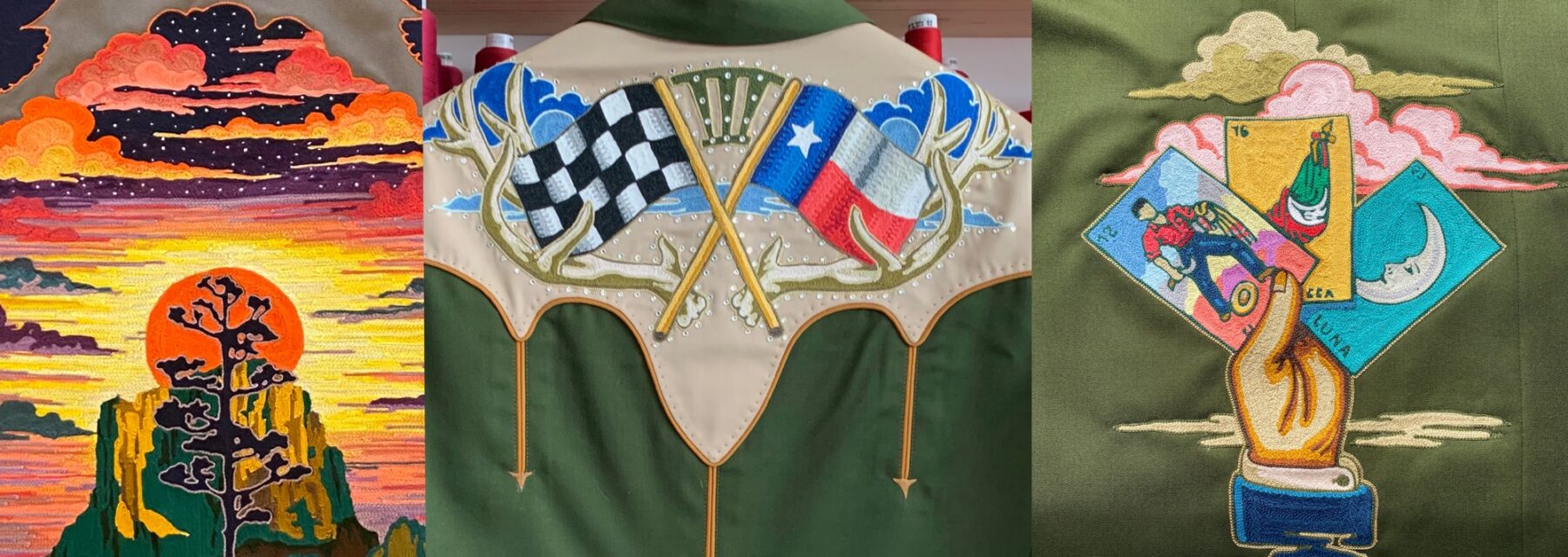
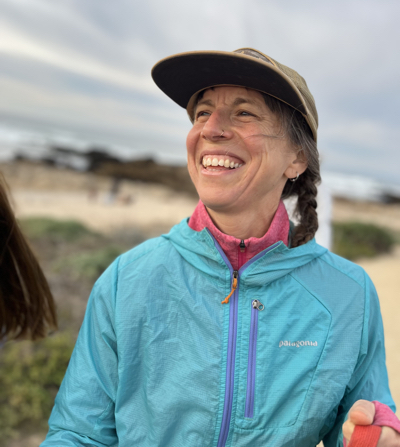
Kathie Sever is an artist, designer, and the founder of Fort Lonesome, an Austin-based company that creates one-of-a-kind, hand-cranked, chain-stitched western wear. What started with Kathie hand-embroidering garments for friends out of her home has transformed over the years into a globally known fashion brand that is worn by well-known personalities such as Matthew McConaughey and singer-songwriter Nikki Lane. Using decades-old chain stitching machines, Kathie and her team create some of the most intricate and rich designs imaginable, and Fort Lonesome has been credited with the resurgence of Western wear’s popularity in fashion circles around the world.
Kathie was born, raised, and educated in California, but soon after graduating from art school, she took off for Montana, where she worked at a dude ranch. She worked at the ranch off and on for several years, and she took note of how the ranchers brought creativity, craftsmanship, and an artist’s eye to so many of their tasks– from welding to sewing to leatherwork. Kathie loved the idea of functional art, and she has since made a career of combining handcrafted artistry with pragmatic design. And now, as the head of Fort Lonesome, she and her team continue to innovate and push the boundaries of functional art with Fort Lonesome’s unique brand of what they call Cosmic Western wear.
I loved this conversation with Kathie and could’ve talked with her for many more hours. We covered a lot, including Kathie’s upbringing in California and how her family affected her artistic trajectory; her experience in Montana and how it laid the foundation for Fort Lonesome; her work as a pastry chef and the challenges of working in the restaurant scene of the 1990s; the power that can come as a result of negative experiences; her growth and evolution as a manager and business owner; how parenthood affected her goals; the pros and cons of working with famous people; the nervous feelings that come with creating art; our shared Enneagram personality profiles; favorite books; and much, much more.
Whether you’re interested in art, fashion, the creative process, entrepreneurship, or balancing a career with the demands of parenthood, you’ll glean a lot of value from this conversation. A huge thank you to Kathie for the conversation, and thank you for listening.
Photos courtesy of Kathie Sever & Fort Lonesome
LISTEN & DOWNLOAD:
Apple Podcasts
Spotify
Google Podcasts
… or wherever you get your podcasts!
—
RESOURCES:
Topics Discussed:
- 3:15 – How Kathie’s childhood led her to a career in art
- 9:00 – Kathie’s goals as she went into art school
- 10:00 – How Kathie ended up in Montana
- 13:30 – Kathie’s takeaways from her time in Montana
- 15:45 – When Kathie started to recognize Western wear as a creative outlet
- 18:30 – Kathie’s next steps after working at a ranch in Montana
- 20:15 – When pastry making came into the equation, and exploring the connection between pastry making and art
- 23:30 – Kathie’s time in Austin and the misogyny she experienced in the restaurant scene in the late 90s
- 29:00 – Exploring the motivational power of negative experiences
- 32:00 – How having a kid impacted Kathie and how it lead to her work with clothing
- 37:45 – Kathie’s journey in figuring out the business side of making clothes
- 43:45 – When Kathie realized she was onto a good business idea, and how she balanced managing a small business from home while raising kids
- 1:00:00 – How oil painting impacted Kathie’s embroidery work
- 1:03:45 – The first time a celebrity reached out for one of Kathie’s pieces
- 1:07:15 – How Kathie balances her vision for her art with that of her clients when making clothes for performers
- 1:11:00 – Whether or not Kathie still feels nervous about putting her art into the world
- 1:18:30 – Kathie’s vision for Fort Lonesome in the next 5-7 years
- 1:22:15 – Kathie’s book recommendations
Information Referenced:
- Fort Lonesome
- Videos of Kathie working
- Darkroom
- Monterey Peninsula
- Pacific Grove, CA
- Carmel, CA
- Big Sur, CA
- Brett Weston
- Ansel Adams
- Yosemite National Park
- Friends of Photography
- Sierra Club
- McLeod, MT
- Livingston, MT
- Big Timber, MT
- A River Runs Through It
- Thomas McGuane
- Jimmy Buffett
- Mile Marker Zero by William McKeen
- Jim Harrison
- Hunter S. Thompson
- Austin, TX
- Rockabilly
- Grunge
- Humboldt State University
- School of the Museum of Fine Arts, Boston
- Nancy Silverton
- University of Texas
- The Baby Book by William Sears
- Yoke
- Piping
- Embroidery
- Austin Craft Mafia
- Crochet
- Sublime Stitching
- Jenny Hart
- Chain Stitch embroidery
- Richard Linklater
- Ethan Hawke
- Matthew McConaughey
- Nikki Lane
- Jenny Lewis
- Enneagram
- Seth Godin
- Rick Wittenbraker
- Howler Brothers
- Carl Jung
- Hamnet by Maggie O’Farrell
- The High Sierra: A Love Story by Kim Stanely Robinson
- The Martian by Andy Weir
Enjoy this episode? Then you might like these too:
- Cate Havstad-Casad, Part 2 – Building Businesses for the Greater Good
- Jess Mudgett – Humble & Grateful
- Christian Beamish – West Coast Craftsman
- Frances Ashforth – Art, Water, and Wide-Open Spaces
- Riddy Arman – Artistic Authenticity
- Kelsey Johnson – Chasing Her Artistic Ambitions
- Anna Brones – Committed to Creativity
- Live in Bozeman!
Visit the podcast page for a full, searchable list of episodes
Landscape-Scale Management in a Private Land State
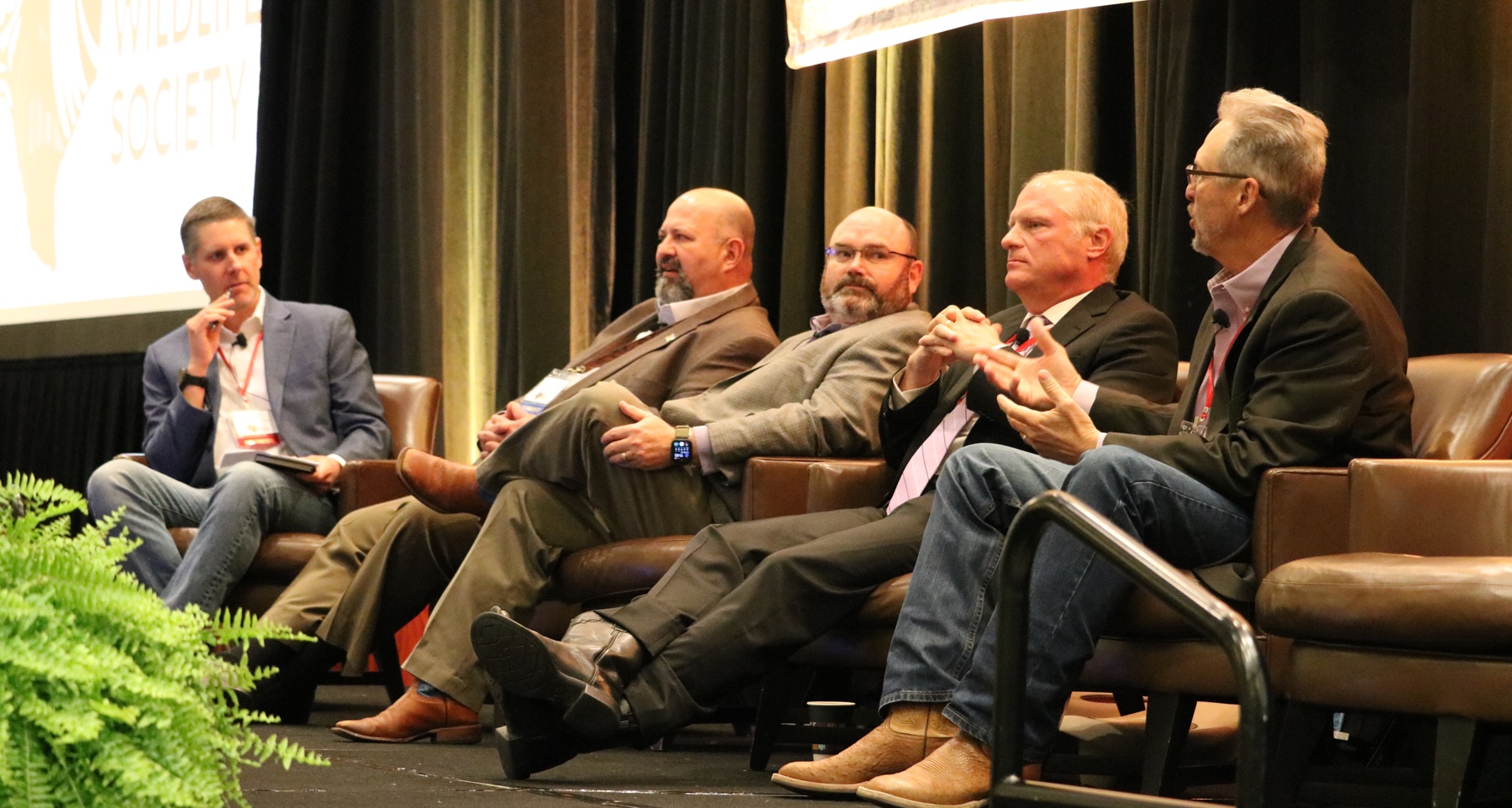
This is the second of two live episodes that were recorded at the Texas Chapter of The Wildlife Society’s 2023 annual meeting in Houston, Texas. The topic of this panel discussion was Achieving Landscape-Scale Management in a Private Land State. As you learned in the previous episode, Texas has very little public land compared to other western states, so large-landscape conservation in Texas brings with it a number of extremely unique challenges and opportunities. In this conversation, we heard from four of Texas’s most respected conservation leaders– individuals who are finding ways to achieve ambitious conservation goals using their own unique skillsets and approaches.
I was joined on stage in front of an audience of nearly 600 people by Roel Lopez, Director of the Texas A&M Natural Resources Institute; Chad Ellis, CEO of the Texas Agricultural Land Trust; Terry Anderson, co-founder of Conservation Equity Management and Conservation Equity Partners; and Billy Tarrant, Associate Director of Stewardship Services at Borderlands Research Institute. You can check out the episode notes for more information on each of the panelists and links to their respective bios and organizations.
As you’ll hear in the conversation, there are a wide range of innovative approaches and tools– from academic to non-profit to market-based– that are allowing Texas to be a trailblazer in private lands conservation in the United States. So we had a lot to cover in this hour-long session, including: The evolution and use of conservation easements, the importance of building solid relationships with landowners, new conservation tools on the horizon, how Texas has exported is private lands conservation tools to other states, data around population growth in Texas, advice for you and aspiring conservationists, and a long list of books, podcasts, and resources that have influenced these conservation leaders.
And just before this conversation, each of the panelists did a brief presentation that summarized all of the important work they are doing in Texas. If you’d like to listen to those talks and access their Powerpoint presentations, follow this link. However, you don’t need to listen to those presentations to get full value out of this episode– but they are there if you want to go a little deeper.
If you’re interested in conservation and learning from impressive individuals who have devoted their lives to land, stewardship, and conservation, then I know you’ll enjoy this episode. Once again, thanks to John Kinsey and the Texas Chapter of The Wildlife Society for inviting me down to Houston and for giving me the opportunity to have these meaningful conversations. Enjoy!
Photos courtesy of The Texas Chapter of The Wildlife Society
LISTEN & DOWNLOAD:
Apple Podcasts
Spotify
Google Podcasts
… or wherever you get your podcasts!
—
RESOURCES:
Topics Discussed:
- 3:00 – Introduction
- 5:00 – Discussing the Conservation Easement as a tool, and how it has evolved
- 10:30 – The importance of relationships in this work
- 13:30 – What new tools do we need in private lands conservation
- 22:00 – Discussing the private lands conservation strategies that Texas has been able to export to other states
- 27:15 – Whether or not the experts predicted the population numbers and growth that Texas is seeing today
- 29:45 – Advice for young professionals who want to become better storytellers
- 40:30 – The importance of building relationships with politicians for conservation work
- 53:00 – Books, podcasts, heroes, and other resources that have influenced the panelists
- 56:30 – Where the panelists find hope and motivation
Information Referenced:
- Texas Chapter of The Wildlife Society
- Roel Lopez
- Chad Ellis
- Billy Tarrant
- Terry Anderson
- Blair Fitzsimons
- Texas Agricultural Land Trust (TALT)
- Mitigation banking
- Ecosystem service markets
- The Nature Conservancy
- Colorado Cattlemen’s Agricultural Land Trust
- Republic Ranch magazine article about Terry
- Fault lines
- North Texas Water Municipal District
- Edwards Aquifer Protection Program
- Carter Smith
- The Partnership of Rangeland Trusts (PORT)
- Recovery Credit System
- Gopher Tortoise
- Dune Sagebrush Lizard Texas Conservation Plan
- Ocelots
- Marathon, TX
- How to Speed Read People by Liam Robinson
- Black-tailed deer
- Chronic Wasting Disease
- High Fence Deer Breeding/Hunting
- Pronghorn
- Farm Bill
- Texas Wildlife Association
- ESG – Environmental social, and Corporate Governance
- Texas Department of Transportation (TexDOT)
- US Roundtable for Sustainable Beef
- Bobwhite Quail Enhancement Program
- Good to Great by Jim Collins
- The 7 Habits of Highly Effective People by Stephen R. Covey
- The California Quail by Aldo Starker Leopold
- Aldo Starker Leopold
- Energy Sprawl Solutions Joseph M. Kiesecker
- Arizona Game & Fish Department
- Texas Parks and Wildlife Department
- Alpine, TX
- Texas A&M University
Enjoy this episode? Then you might like these too:
- Dr. David Hewitt – The Science of Wildlife Conservation
- Taylor Hawes – Innovative Conservation in the Colorado River Basin
- Cole Mannix – Building Community through Land Stewardship and Local Food
- Carlos Fernández, Part 2 – Creating Conservation Opportunities During Uncertain Times
- Amber Smith – Creating Connection & Community
- Kate Mannix – A Legacy of Land Stewardship
- Lesli Allison & Tuda Libby Crews – Durable Conservation in the West… and Beyond
Visit the podcast page for a full, searchable list of episodes
Equitable Access to the Outdoors in Texas
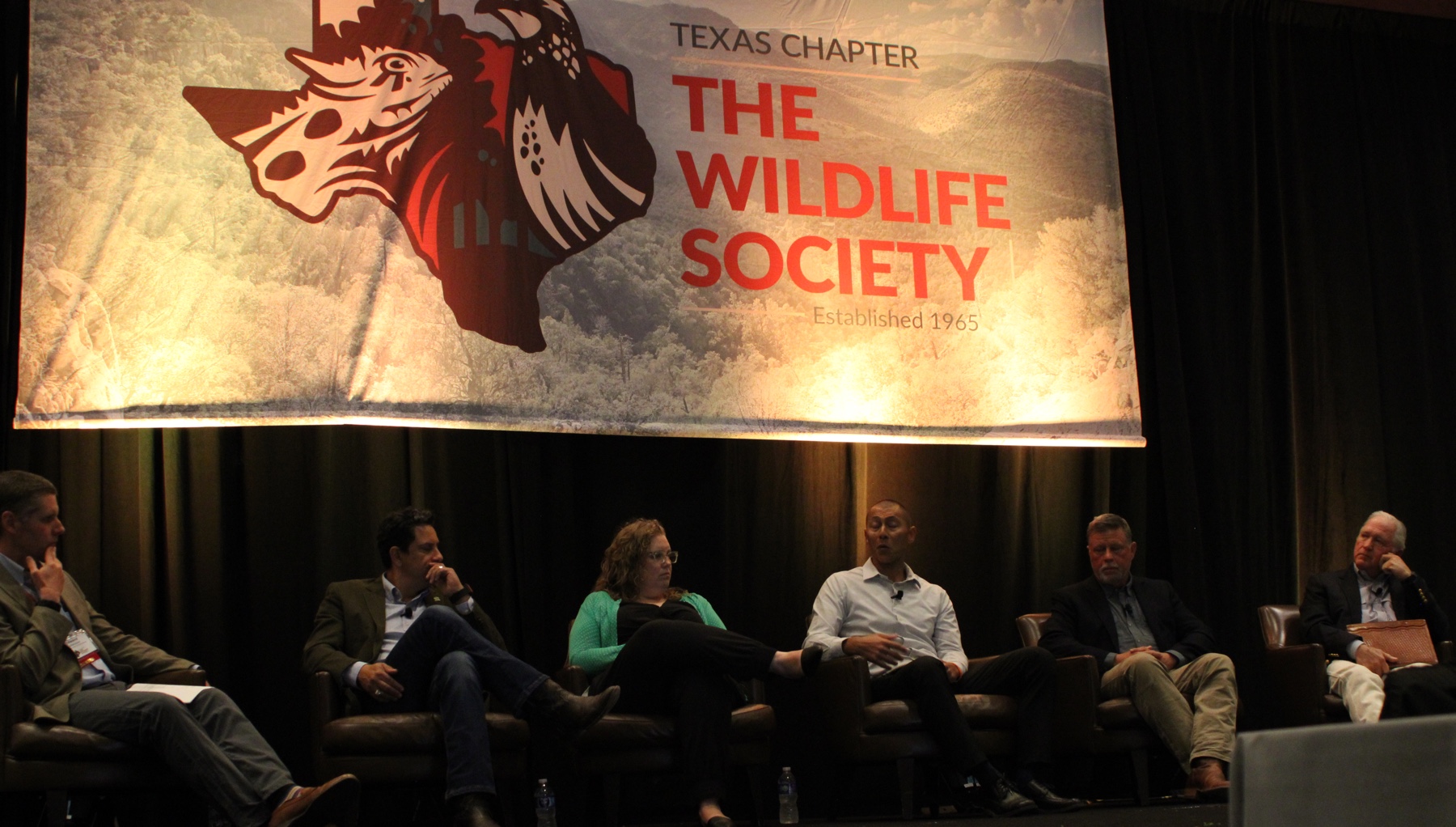
This is the first of two live episodes that were recorded at the Texas Chapter of The Wildlife Society’s 2023 annual meeting in Houston, Texas. The topic of this panel discussion was Equitable Access to the Outdoors, a subject that is timely and important in all areas of the West, but especially important in Texas, where 93% of the state’s land is privately owned. Whether your interest is outdoor recreation, public health, climate change, or public-private conservation partnerships, the ability for people to have access to parks, trails, open spaces, and wild places is becoming more and more important with each passing year.
For this conversation, I was joined on stage by five Texas conservation innovators– folks who are working hard to ensure that Texans of all stripes have ample opportunities to spend time outside– whether in the cities or in the state’s more rural areas. In order of their appearance in this conversation, we had Jaime González, Healthy Communities Director for the Nature Conservancy; Sarah Coles, Executive Director of the Texas Children in Nature Network; Immanuel Salas, Texas Parks and Wildlife’s R3 Coordinator for Hunting and Shooting Sports; Neal Wilkins, President and CEO of the East Foundation; and Joseph Fitzsimons, conservationist and owner of the San Pedro Ranch. You can check out the episode notes below for more information on each of the panelists and links to their respective bios and organizations.
I could’ve spent hours talking to each of the panelists individually, but as a group, we had a very informative and educational conversation– one that provided a different perspective from some of my past episodes that focused on equitable access. we covered a lot in this hour-long discussion, including: the importance of building thriving cities with ample parks, trails, and outdoor space; how these organizations are working to reverse some of the disheartening trends around children’s health and their access to the outdoors; the importance of collaborative partnerships, the R3 program in Texas– what it is, why it’s important, and how it is evolving; the role of private landowners in providing access opportunities; the importance of youth education; the role of government; public land in Texas; the need to engage with elected officials; favorite books; and much more.
I learned a lot from this conversation and was honored to share a stage with such an impressive group of people who are working so hard on this all-important issue. Click the link in your podcast player to access all of the notes and links from this episode– we’ve listed tons of excellent resources from this episode.
Thanks to John Kinsey and the Texas Chapter of The Wildlife Society for inviting me to host this event, and thank you for listening. Hope you enjoy!
Photos courtesy of The Texas Chapter of The Wildlife Society
LISTEN & DOWNLOAD:
Apple Podcasts
Spotify
Google Podcasts
… or wherever you get your podcasts!
—
RESOURCES:
Topics Discussed:
- 3:04 – An introduction, and then Jaime discusses his work with TNC in Houston
- 9:25 – The quantitative way that Jaime and TNC evaluate success in connecting youth with the outdoors
- 11:25 – Sarah introduces Texas Children in Nature Network
- 15:55 – Sarah explains TCINN’s partnership model
- 19:10 – Immanuel discusses the R3 program and its importance
- 26:40 – Neil introduces the East Foundation
- 30:55 – How the East Foundation’s educational programs have shifted over time
- 32:10 – How Joe became involved in public lands conservation work through the Texas Parks and Wildlife Commission
- 38:55 – The panelists’ experience in dealing with politics and elected officials
- 46:40 – The panelists discuss the importance of storytelling
- 58:40 – Panelists’ suggestions for books, podcasts, resources to access, etc
Information Referenced:
- Texas Chapter of The Wildlife Society
- Jaime Gonzales
- Sarah Coles
- Immanuel Salas
- Neil Wilkins
- Joseph B.C. Fitzsimons
- Dr. Dave Hewitt
- The Nature Conservancy
- Attwater Prairie Chicken National Wildlife Refuge
- World Wildlife Fund
- Harris County
- Memorial Park Conservancy
- Memorial Park Land Bridge and Prairie Project
- The One Health Model
- Texas Children in Nature Network (TCINN)
- Nature Smart Libraries
- Texas Parks and Wildlife Department
- R3
- Steven Rinella
- Backcountry Hunters and Anglers
- East Foundation
- El Sauz Ranch
- Rio Grande Valley (“The Valley”)
- Texas Wildlife Association
- Natural Resources Conservation Service
- The Museum of South Texas History
- Masi Mejia
- Laredo, TX
- San Antonio Viejo Ranch
- Blair Fitzsimons
- Black Gap Wildlife Management Area
- Sporting Goods Sales Tax
- City Kid Adventures
- Land and Water Conservation Fund
- Alan Simpson
- Agricultural land valuation in Texas
- Romey Swanson
- White-tailed deer
- Chronic Wasting Disease
- Austin Independent School District
- Garden and Gun magazine regarding East Foundation
- TCINN video
- Certified Interpretive Guide
- Texas Parks and Wildlife Department PBS show
- Lone Star Land Steward Awards
- Texas Youth Hunting Program
- Latino Outdoors
- Outdoor Afro
- Black Outside, Inc.
- Made to Stick by Chip Heath and Dan Heath
- Seth Godin
- Last Child in the Woods by Richard Louv
- The Nature Fix by Florence Williams
- Vitamin N by Richard Louv
- Balanced and Barefoot by Angela J. Hanscom
- Parker McMullen Bushman (Instagram)
- Inclusive Guide
- Goodbye to a River by John Graves
- From a Limestone Ledge by John Graves
- Hard Scrabble by John Graves
- Rancher, Farmer, Fisherman by Miriam Horn
- Rambunctious Garden by Emma Marris
- National Geographic stories by Emma Marris
- Dr. Drew Lanham
- Aldo LeopoldBeyond Fair Chase by Jim Posewitz
Enjoy this episode? Then you might like these too:
- Dr. David Hewitt – The Science of Wildlife Conservation
- Douglas Brinkley – Exploring the Past to Find Inspiration for the Future
- Rachel VandeVoort – Harnessing the Power of Outdoor Recreation
- Mike McTee & Vince Slabe – Win-Win Solutions in the Fight to Save Eagles
- Nate Schweber – A Forgotten Chapter of American Conservation
- Becky Edwards – Amplifying the Power of Women in the West
- Land Tawney – Energetic & Optimistic
- Alvin Dedeaux – Living His Dream
- Adam Gall – A Reverence for Wildlife & Wild Places
Visit the podcast page for a full, searchable list of episodes
Taylor Hawes – Innovative Conservation in the Colorado River Basin
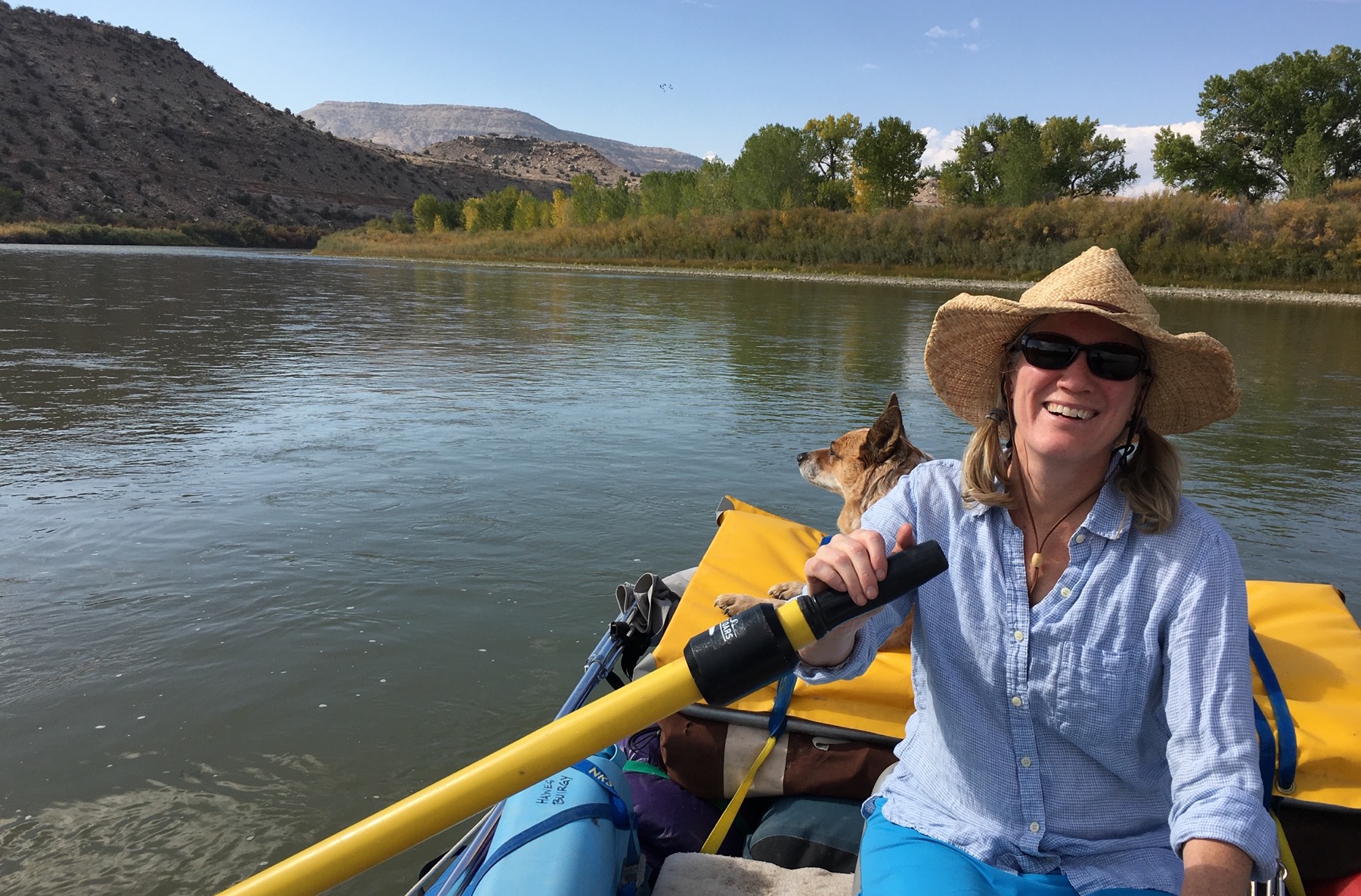
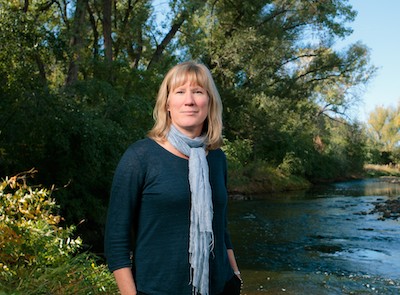
Photo credit: Matthew Staver
Taylor Hawes is the Director of the Colorado River Program for the Nature Conservancy. As the leader of the program, she guides TNC’s efforts to conserve the freshwater biodiversity of the Colorado River Basin while also meeting human demands for water– challenging objectives given the wide-ranging stresses facing the river today. But despite the challenges brought about by climate change, overallocation, and increasing demand, Taylor and her team are making great strides toward finding long-term solutions to create a sustainable future for the Colorado River and the people, plants, and animals that depend on it.
Taylor grew up on the east coast, and, from a young age, she felt a deep connection to land, water, and natural resources. She fell in love with wide-open spaces while on a course with the National Outdoor Leadership School, and she’s devoted her career to protecting land and water in the West. Prior to joining the team at TNC, she served as Associate Counsel to the Colorado River Water Conservation District on Colorado’s Western Slope, working on water quality, water policy, environmental permitting, and water rights litigation.
If you pay attention to the news, then you’ll know that the Colorado River has been receiving tons of media attention for the dire conditions and projections facing the entire region. Reservoirs are at historic lows, temperatures are rising, and the need for more water is increasing. In the first part of this conversation, I ask Taylor to decipher many of the surface-level sound bytes that I’ve heard in the news, and she provides some much-needed context and background regarding the river basin’s current challenges. We then talk about how TNC is working to solve these problems, by building community support, working collaboratively with Tribal nations, and helping agricultural producers become more efficient. And we spend the last part of the conversation talking about Taylor’s professional journey– why she chooses to do this work, what gives her hope, and her goals for her work on the Colorado River.
This was a timely conversation, and I hope it sheds some light on the challenges facing the Colorado River today– and provides some optimism about the river’s future. Thanks to Taylor for taking the time to chat, and thank you for listening.
Photos courtesy of Taylor Hawes and The Nature Conservancy
LISTEN & DOWNLOAD:
Download on Apple Podcasts
Download on Spotify
Download on Google Podcasts
…or wherever you get your podcasts!
EPISODE PARTNER:
This episode is brought to you in partnership with the Colorado chapter of The Nature Conservancy. Guided by science and grounded by decades of collaborative partnerships, The Nature Conservancy has a long-standing legacy of achieving lasting results to create a world where nature and people thrive.
On the fourth Tuesday of every month throughout 2023, Mountain & Prairie will be delving into conversations with a wide range of The Nature Conservancy’s leaders, partners, collaborators, and stakeholders, highlighting the myriad of conservation challenges, opportunities, and solutions here in the American West. You can access all of the 2023 episodes here.
To learn more about The Nature Conservancy’s impactful work in Colorado and around the world, visit www.nature.org/colorado
RESOURCES:
Topics Discussed:
- 3:15 – An overview of the situation regarding Colorado River water
- 8:00 – Discussing the “bandaid” solutions for the overallocated Colorado River implemented over the years
- 10:45 – Who is making the water allocation decisions for the Colorado River
- 12:00 – The breakdown of water use in the West
- 16:45 – Why has this situation has become an emergency right now, meriting the involvement of the federal government
- 19:30 – The timeline of Colorado river use reduction mandates
- 21:30 – The potential impacts of shrinking Colorado River on the Grand Canyon
- 23:00 – What will happen if the Colorado River Basin states do not agree on a plan to reduce water use in accordance with federal mandates
- 24:45 – How Taylor focuses on solutions regarding such a complex, difficult-to-model problem
- 28:30 – Some strategies TNC is employing to support and work with producers in reducing their water use
- 35:00 – Discussing the difficulties and importance of relationship building in this work
- 40:15 – TNC’s work supporting Tribal water challenges
- 44:45 – What drives Taylor’s work and what are her goals
- 47:00 – How Taylor ended up doing this work
- 53:45 – How law school helped Taylor
- 55:45 – What keeps Taylor energized about her work and TNC
- 58:15 – How anybody can get involved in this work
- 1:02:00 – Taylor’s book recommendations
Information Referenced:
- The Nature Conservancy, Colorado
- Taylor Hawes
- 5280 Magazine
- 5280 article with Taylor
- The Colorado River
- The Colorado River Compact
- Colorado River 2007 Interim Guidelines and Drought Contingency Plans
- Bureau of Reclamation
- Lake Powell
- Lake Mead
- SEIS: Supplemental Environmental Impact Statement
- Colorado Water Conservation Board
- Rebecca Mitchell
- Arizona Department of Water Resources
- State of California Colorado River Board
- Denver Water
- San Juan Mountains
- The Emerald Mile by Kevin Fedarko
- Glen Canyon Dam
- Page, AZ
- Navajo Nation
- Boulder, CO
- Acre-foot
- Smallmouth Bass
- CFS – cubic feet per second
- Arkansas River
- Colorado Springs, CO
- Kernza
- Alfalfa
- Hay Grass
- Riparian Doctrine
- Grand Valley
- Verde River
- Phoenix, AZ
- Barley
- Malt House
- Headgate
- Matt Moorhead
- Aaron Derwingson
- Klamath Basin
- Trout Unlimited
- TNC Colorado 2022 Year in Review
- Upper Basin Tribal Dialogue
- Yampa River
- University of North Carolina
- Savannah River
- Richard B. Russell Dam
- Jimmy Carter
- Chapel Hill, NC
- Exxon Valdez Oil Spill
- NOLS
- Prince William Sound
- Time Magazine coverage of the Exxon Valdez Spill
- Booms
- Gila River
- Virgin River
- Colorado River in Crisis podcast
- Audubon Society
- Cadillac Desert by Mark Reisner
Enjoy this episode? Then you might like these too:
- Carlos Fernández, Part 2 – Creating Conservation Opportunities During Uncertain Times
- Dr. Katharine Hayhoe – Effecting Change Through Authentic Conversation
- Pete McBride, Part 2: In Search of Silence
- Frances Ashforth – Art, Water, and Wide-Open Spaces
- Dylan Tomine – Protecting What He Loves
- Alvin Dedeaux – Living His Dream
- Mike Foote – Perfection is in the Process
- Chris Dombrowski, Part 2 – “The River You Touch”
Visit the podcast page for a full list of episodes where you can filter episodes by topic and guests’ vocations.
Beau Alexander – Paying Homage to the Past, While Focusing on the Future
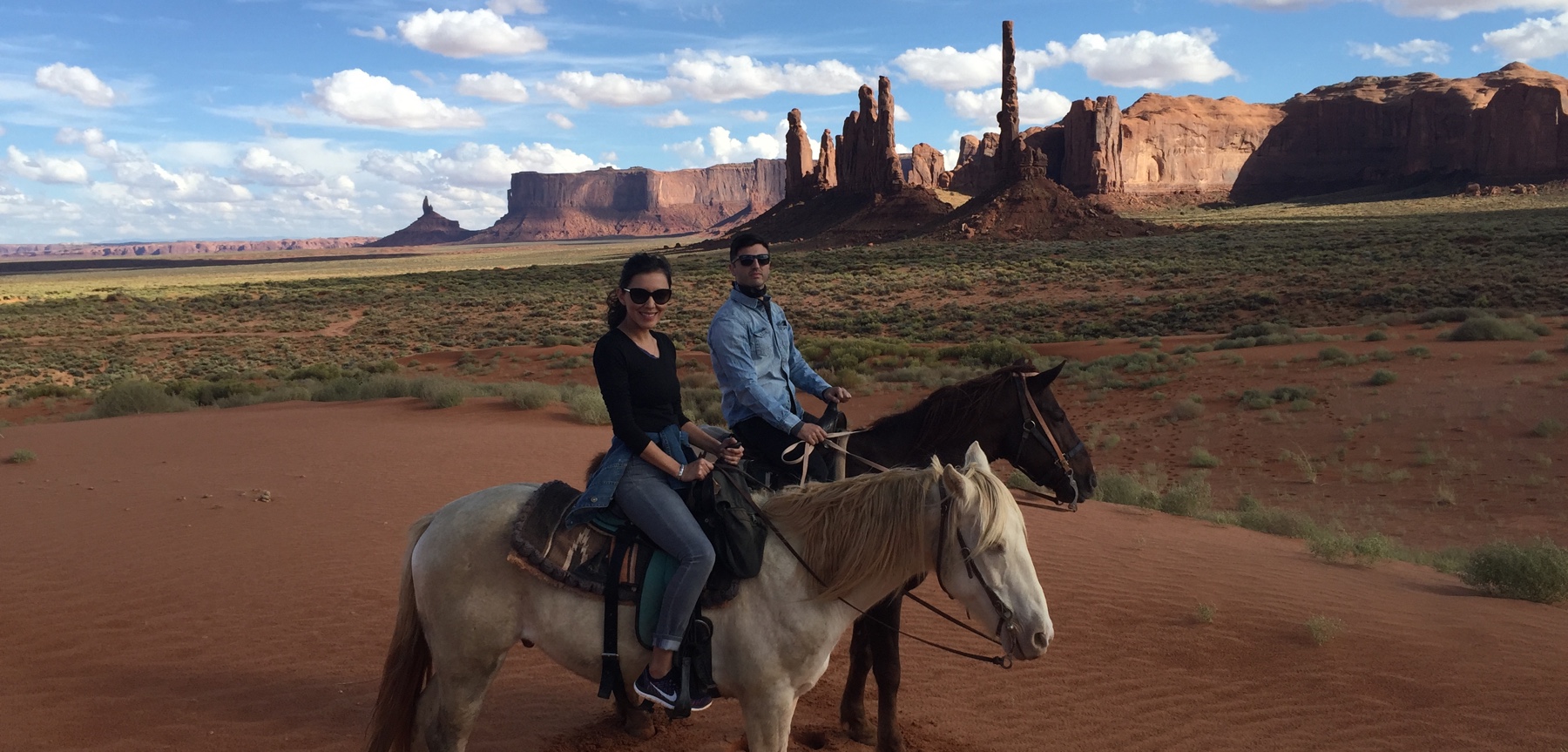
Beau Alexander is the owner and operator of Maxwell Alexander Gallery, a world-renowned art gallery that curates and celebrates “a new breed of fine art” here in the American West and beyond. Beau and his brother, the famed western artist Logan Maxwell Hagege, officially opened the gallery back in 2012, and their goals were simple: Represent one-of-a-kind artists, put the artists’ interests first, and serve as a trusted resource for a wide range of collectors around the globe. After many years of scrappy hard work and outside-the-box thinking, Maxwell Alexander Gallery has become a cornerstone of the Western art world.
Beau was born and raised in Los Angles and from an early age, he showed a talent for entrepreneurship and marketing. He and his brother Logan started a number of businesses together, combining their proclivity for creativity with the tireless work ethic they learned from their immigrant father. As Logan’s art career exploded, they both saw an opportunity to create an art gallery that takes care of its artists and clients– one that plays the long game and is deeply invested in the people behind the art… not solely focused on making a sale. So, in 2012 they opened Maxwell Alexander Gallery and have steadily risen to the top of the western contemporary art world. And just a few weeks ago, Beau was awarded the Autry Museum’s John J. Geraghty Award, which recognizes an individual for his or her Advancement of Contemporary Western art.
Beau and I met last fall in L.A. at Maxwell Alexander Gallery’s 10 Year Anniversary Exhibition, so I was thrilled to have him join me for a more in-depth conversation about his journey in western art. We started out by discussing his upbringing in LA and how entrepreneurship has always been a part of his life. We discuss some of the good and bad aspects of the old-school art gallery world that sparked the idea to start Maxwell Alexander Gallery. We discussed the early days of the business, and how he had to grind and be extremely creative in order to gain a foothold in the art world. We also discuss his irreverent, often times hilarious, approach to using social media as a marketing tool and the importance of introducing new collectors to western art. We discuss art valuation, the importance of treating people fairly, his other artistic influences, and his brother Logan’s evolution as an artist.
We talk a lot about Logan and the 10 Year Anniversary exhibition– you can listen to those podcasts by following these links: Logan Maxwell Hagege and Live from Maxwell Alexander Gallery. But for now, I hope you enjoy this inspiring conversation with Beau Alexander.
Photos courtesy of Beau Alexander
LISTEN & DOWNLOAD:
Apple Podcasts
Spotify
Google Podcasts
… or wherever you get your podcasts!
—
RESOURCES:
Topics Discussed:
- 3:45 – Setting the scene in Beau’s year leading up to starting the Maxwell Alexander Gallery
- 10:00 – Discussing Beau’s time studying business, before which he had actually started his own business
- 14:00 – How Beau prioritizes relationships in his business
- 17:30 – Beau’s process of evaluating artwork
- 21:30 – How the Maxwell Alexander Gallery is different from other art galleries
- 24:00 – When Beau figured out that the Maxwell Alexander Gallery was a unique idea to run with in the art world, and the early process of establishing the gallery
- 29:45 – Discussing Beau’s unconventional ways of advertising the gallery
- 31:15 – How long it took for the established art community to recognize and embrace the Maxwell Alexander Gallery model
- 36:45 – Discussing the 10 Year Anniversary of the gallery
- 39:30 – Talking about the finances and value of art
- 49:30 – Advice for young art collectors
- 52:30 – Beau’s favorite art
- 59:30 – Beau’s other influences outside of painting and sculpture, as well as the impact Logan Maxwell has had on the art world
Information Referenced:
- Maxwell Alexander Gallery
- Maxwell Alexander Gallery on Instagram
- Beau Alexander
- Maxwell Alexander Gallery 10 Year Anniversary Celebration
- Mountain and Prairie Live at the Maxwell Alexander Gallery 10 Year Anniversary
- Logan Maxwell Hagege
- Malibu, CA
- Jay-Z
- Jackson Hole, WY
- John J. Geraghty Award
- Glenn Dean
- Billy Schenck
- Josh Elliott
- Jeremy Lipking
- Contemporary Realism (definition | at the Maxwell Alexander Gallery)
- Michael Klein
- Joshua Larock
- David Kassan
- Kim Wiggins
- Eric Bowman
- Maxwell Alexander Gallery Black Friday Exhibition
- Pendleton collaboration
- Stetson collaboration
- Pasadena, CA
- Norton Simon Museum
- The Louvre
- The Tate Museum
- Pablo Picasso
- Henri Matisse
- Claude Monet
- Agnes Martin
- Minimalism
- Modernism
- American Modernism
- Ellsworth Kelly
- Brett Allen Johnson
- Earnest L. Blumenschein
- Taos Society of Artists
- William Herbert Dunton
- Ernest Martin Hennings
- Endurance: Shackleton’s Incredible Voyage
- Into Thin Air
- The Tipping Point
- The Millionaire Next Door
- Logan Maxwell Hagege – Desert Survey
- E. Martin Hennings & Walter Ufer (Edited by Thomas Smith) – A Place in the Sun
- Beyond the Visible Terrain by Ed Mell
- Mann Vol. 1 by Jeremy Mann
- Rich Dad, Poor Dad by Robert T. Kiyosaki
- How to Argue and Win Every Time by Gerry Spence
- The Salmagundi Club
Enjoy this episode? Then you might like these too:
- Logan Maxwell Hagege – Artistic Evolution
- Live from Maxwell Alexander Gallery
- Christian Beamish – West Coast Craftsman
- Jess Mudgett – Humble & Grateful
- Riddy Arman – Artistic Authenticity
- Chris Burkard, Part 2 – Seeking Beauty Through Adventure
- Ivan McClellan – A New Look at the Old West
- Chris La Tray – Rediscovering His Past, Writing His Future
- Peter Heller – Chasing the Flow
- Morgan Irons – Finding Her Muse
Visit the podcast page for a full, searchable list of episodes
